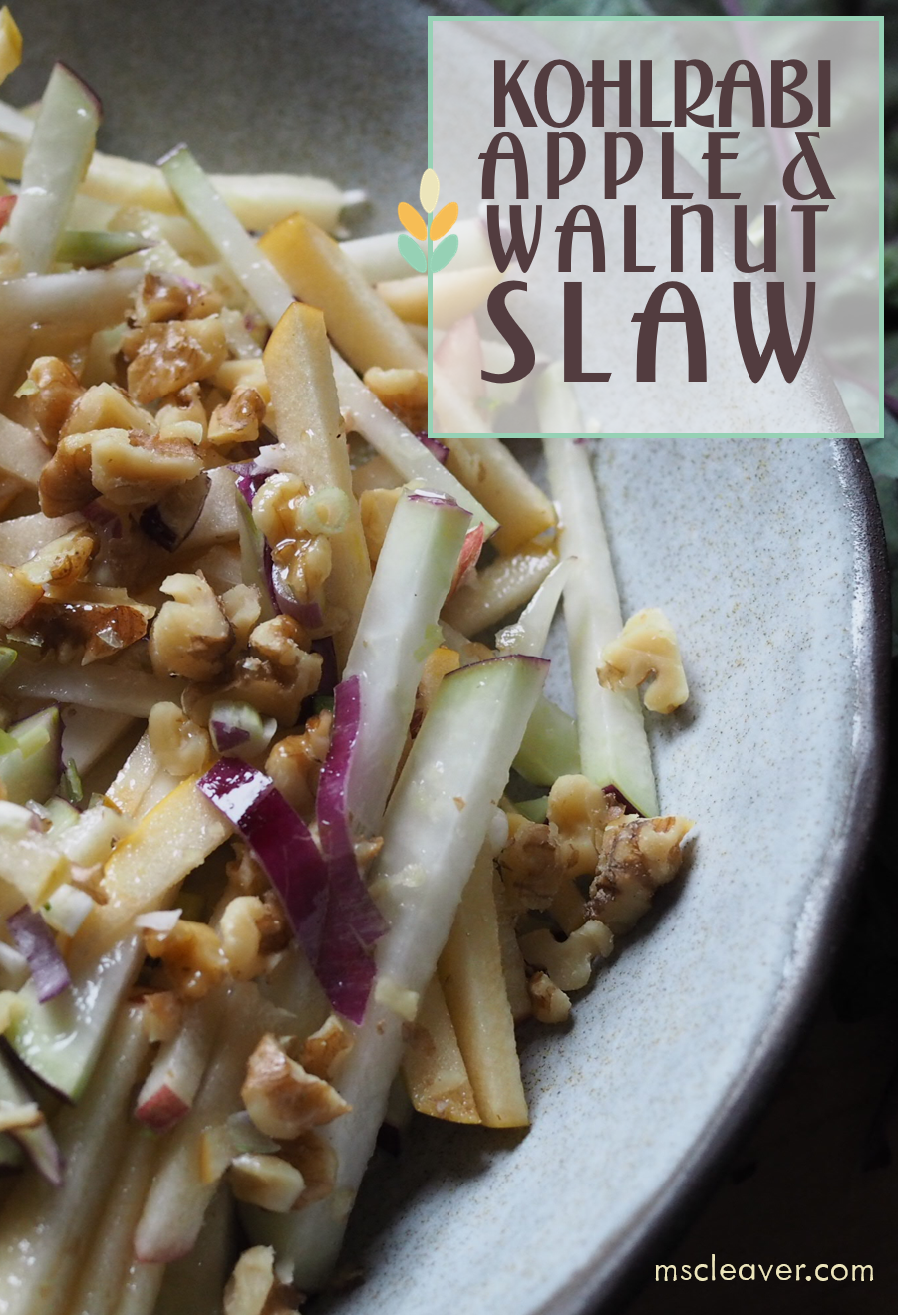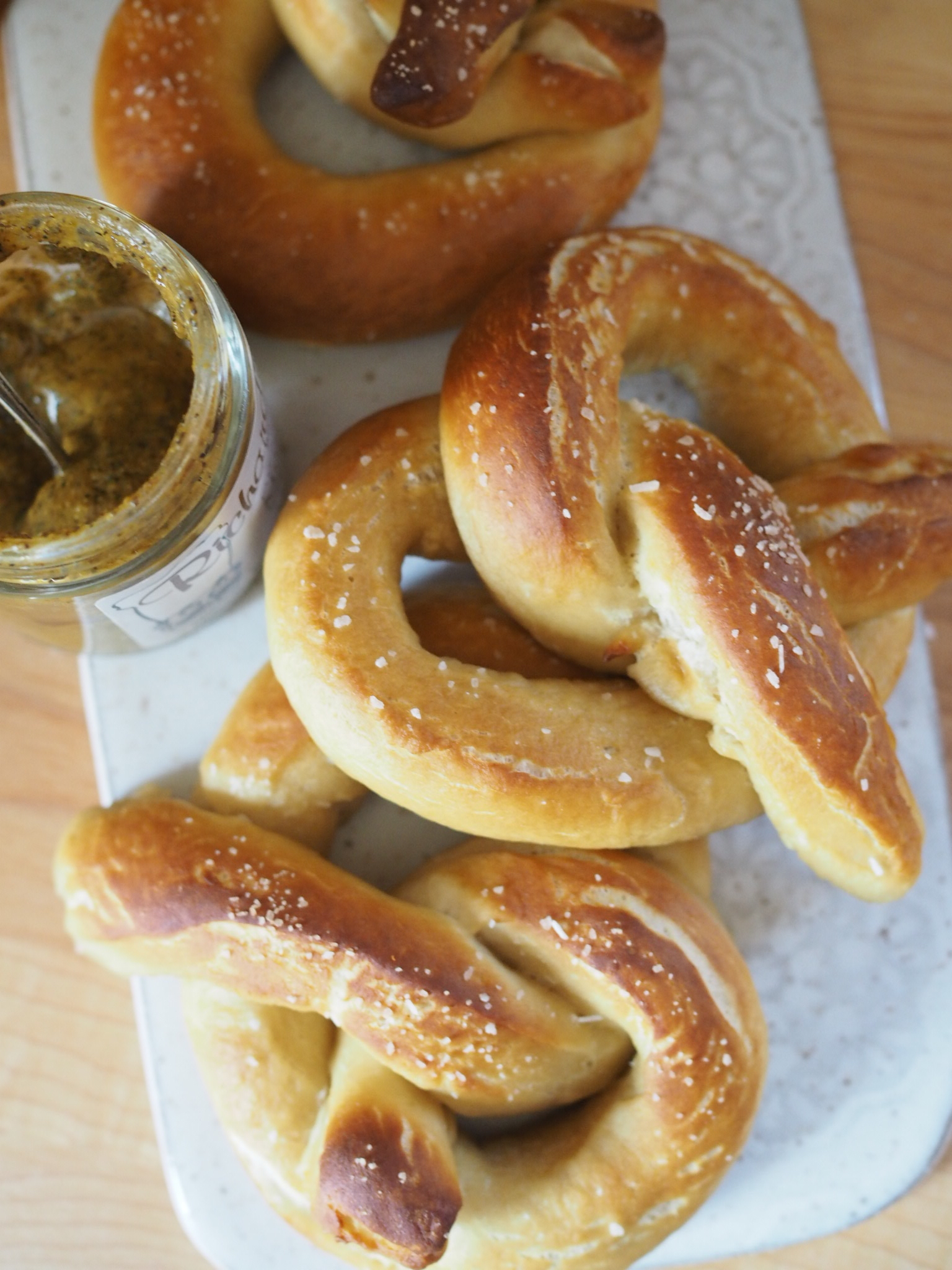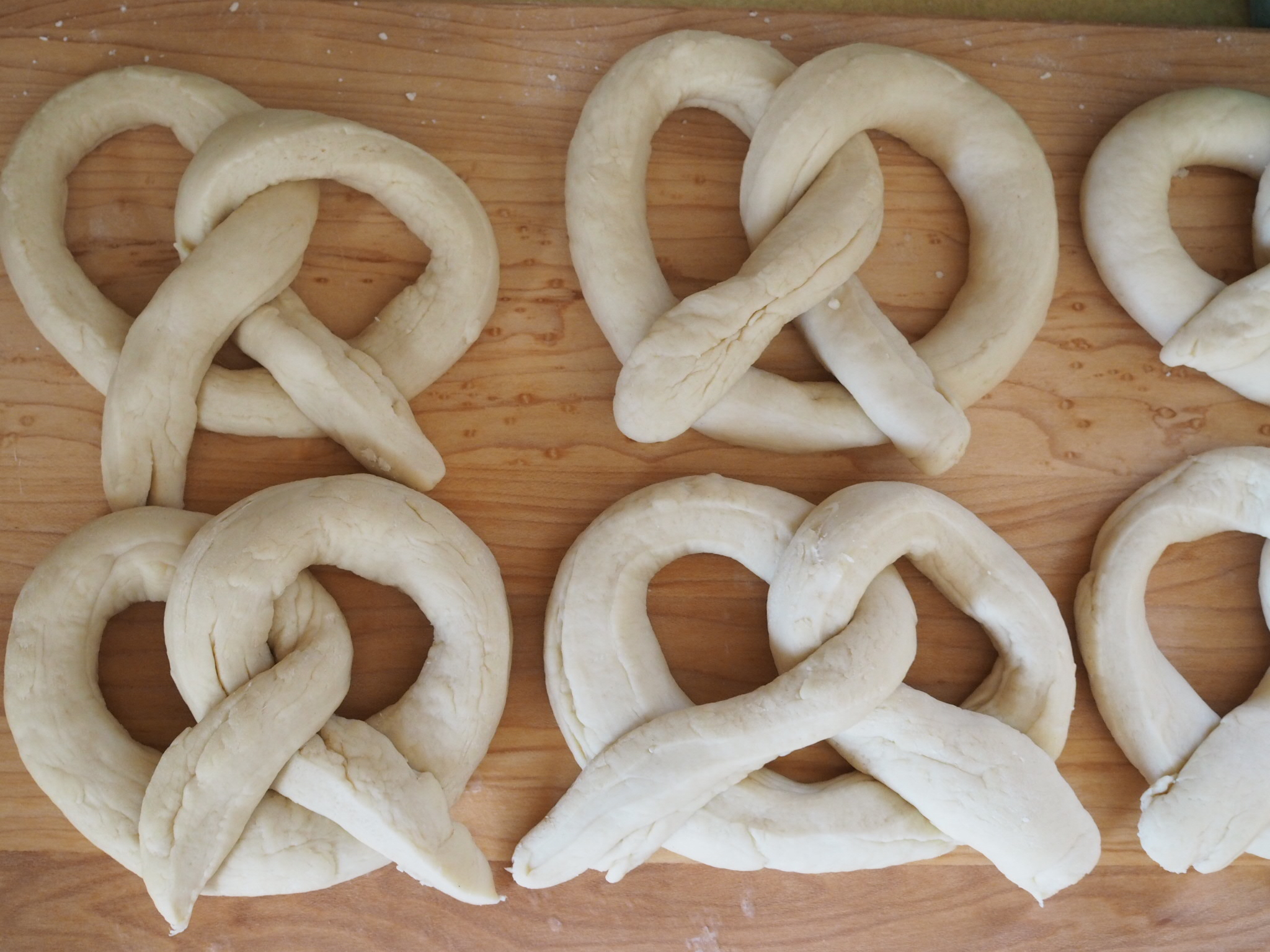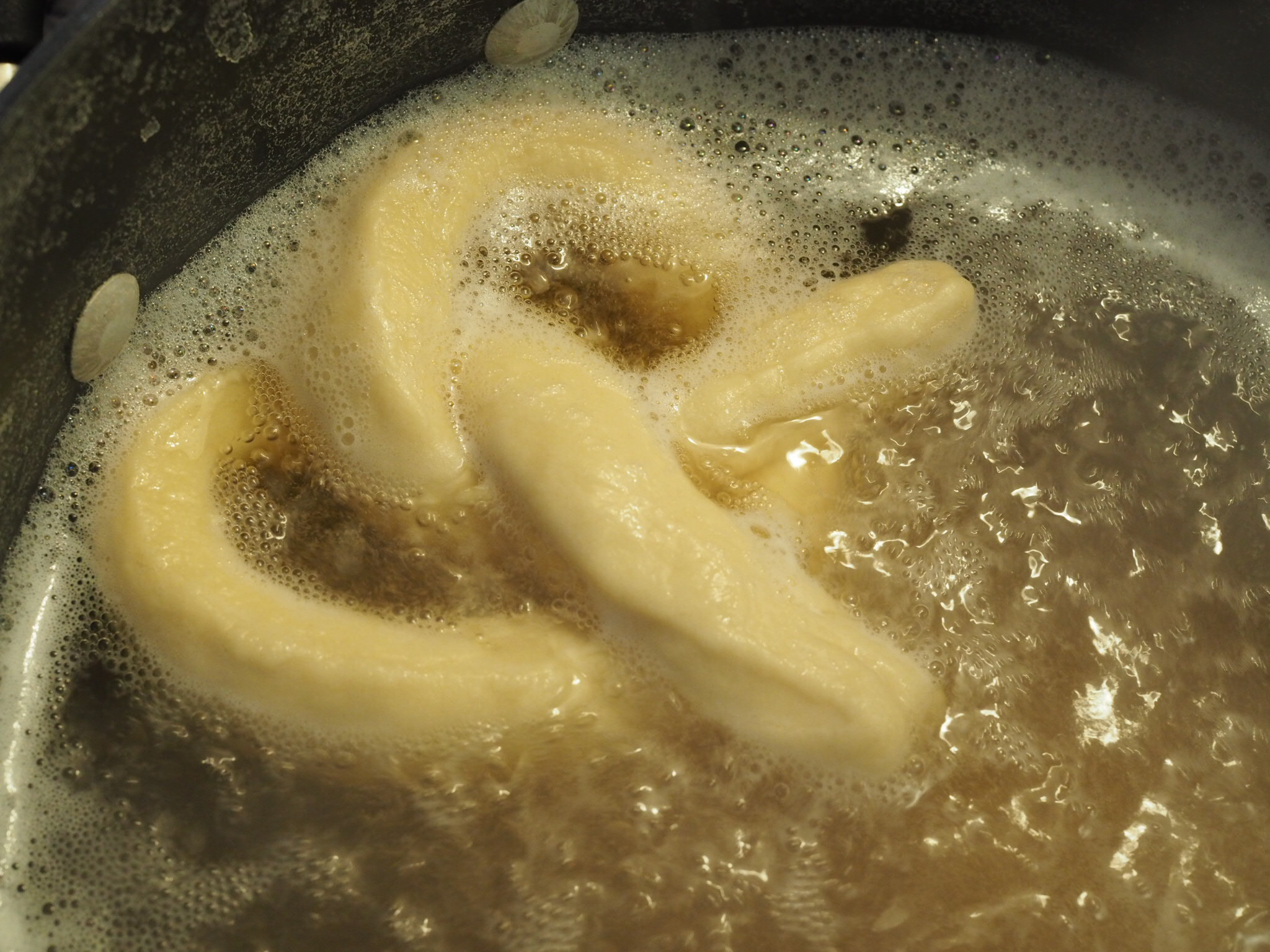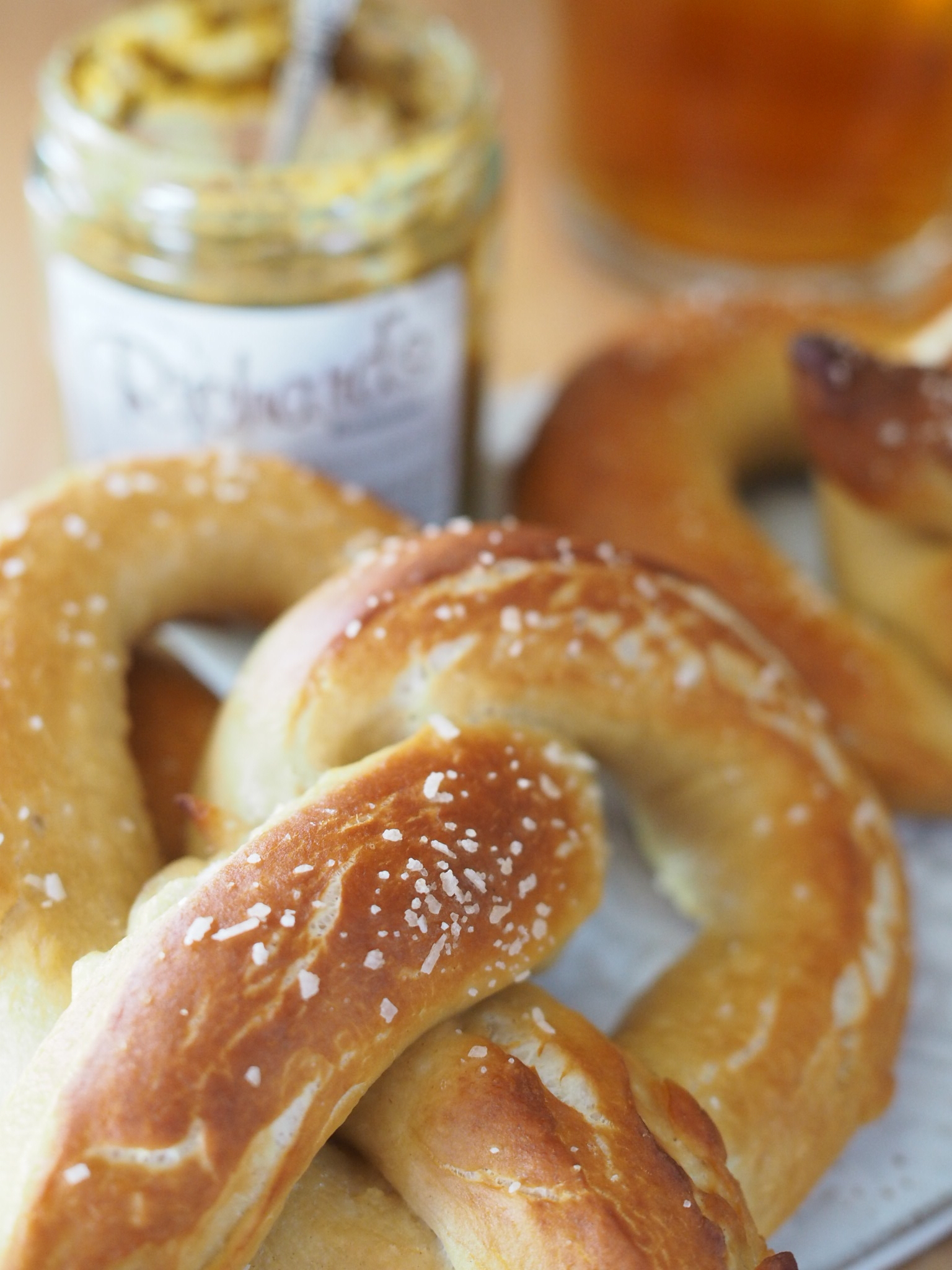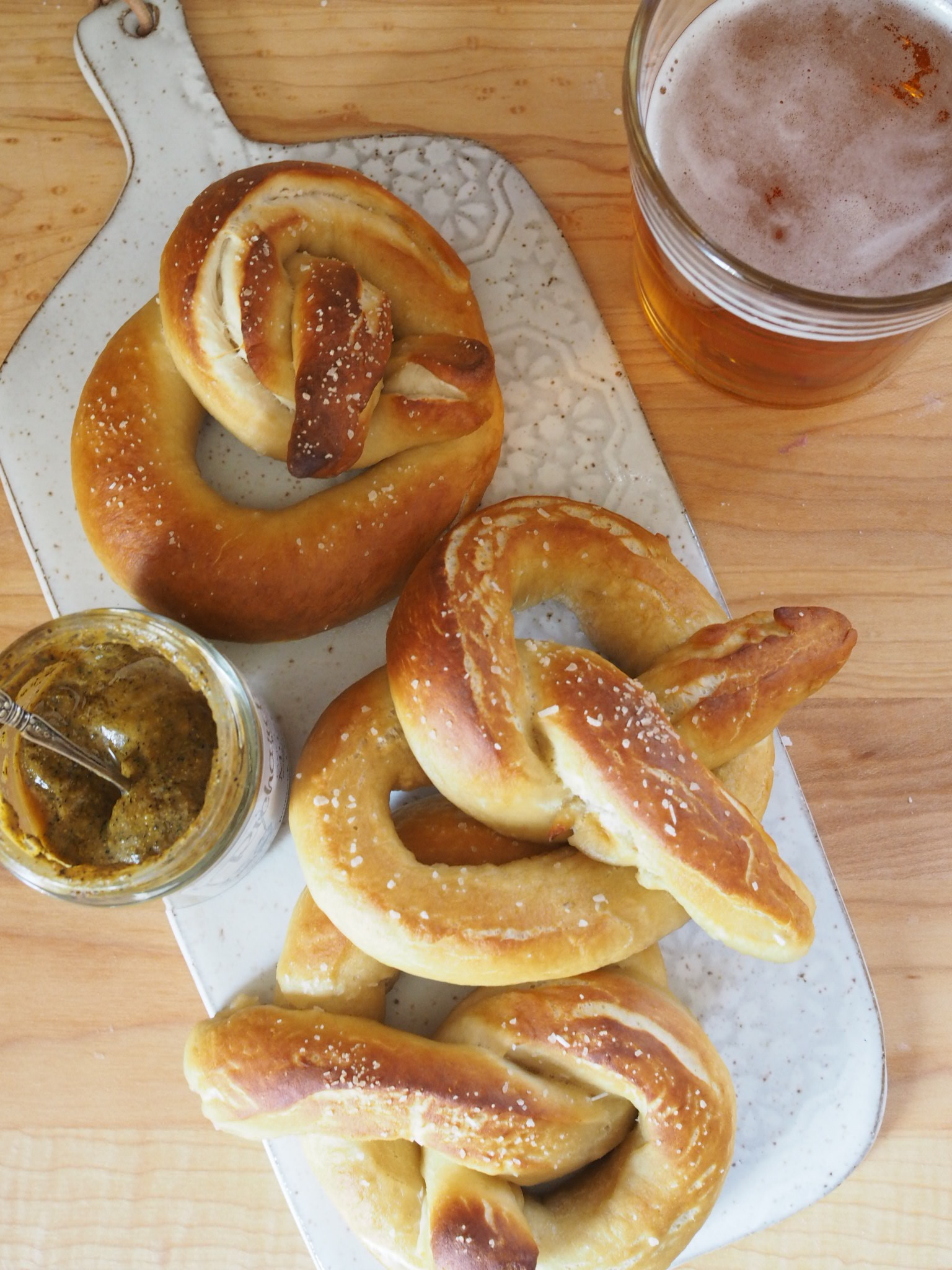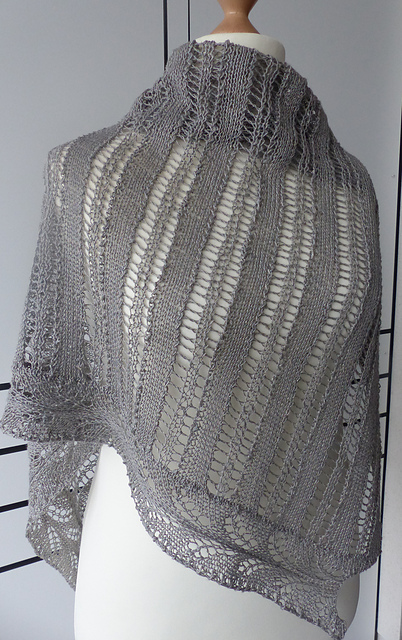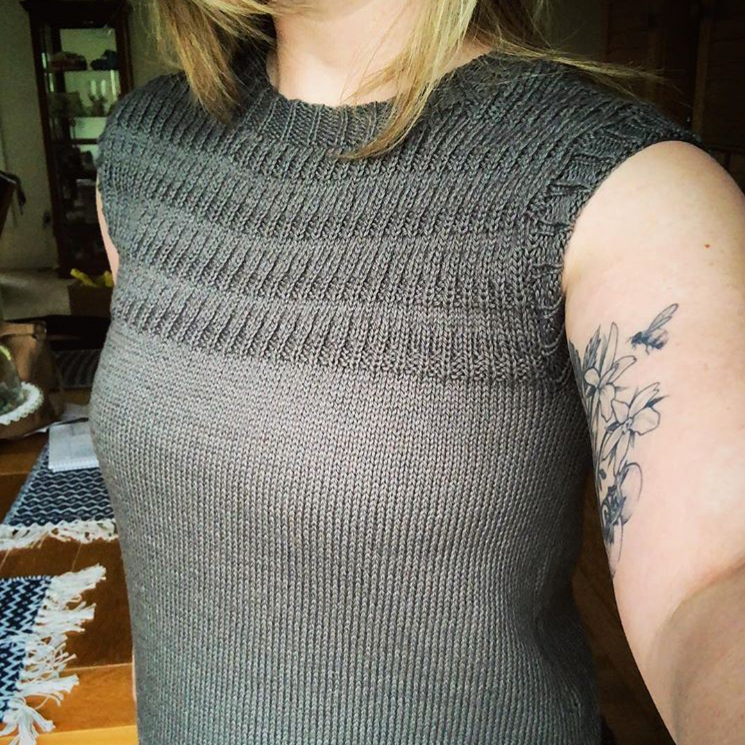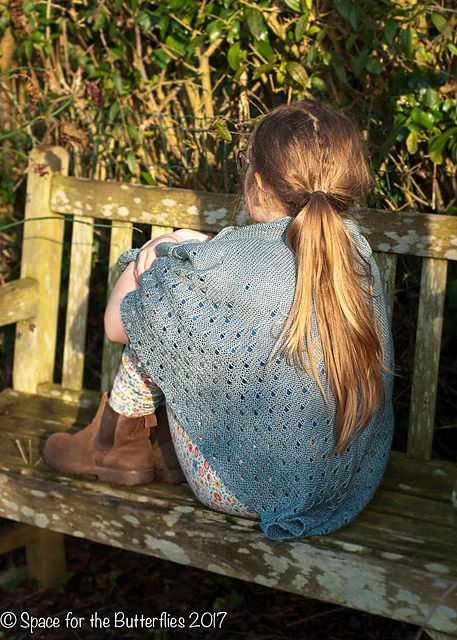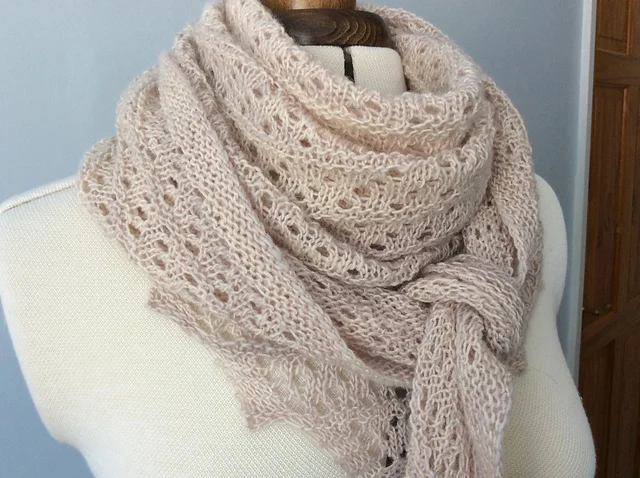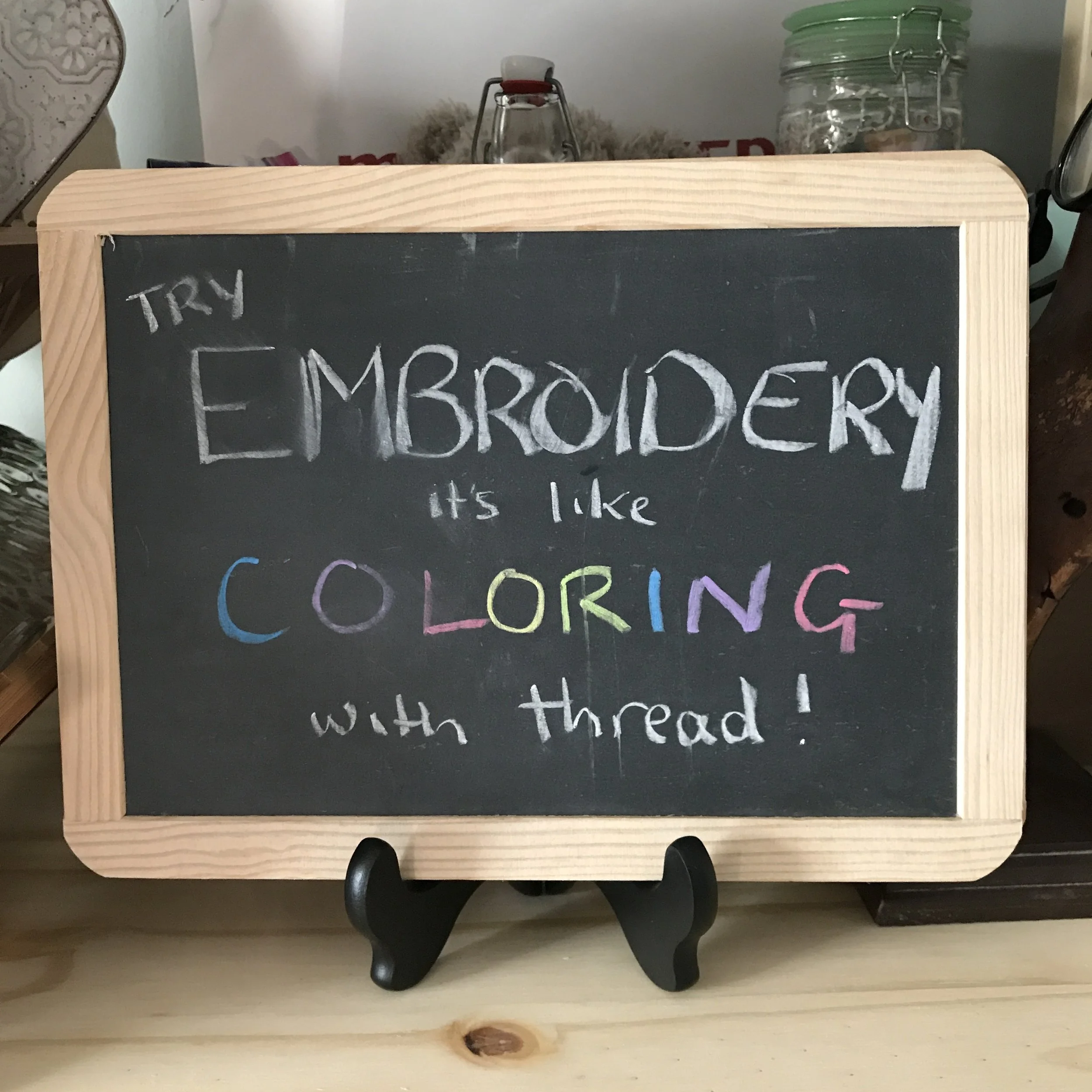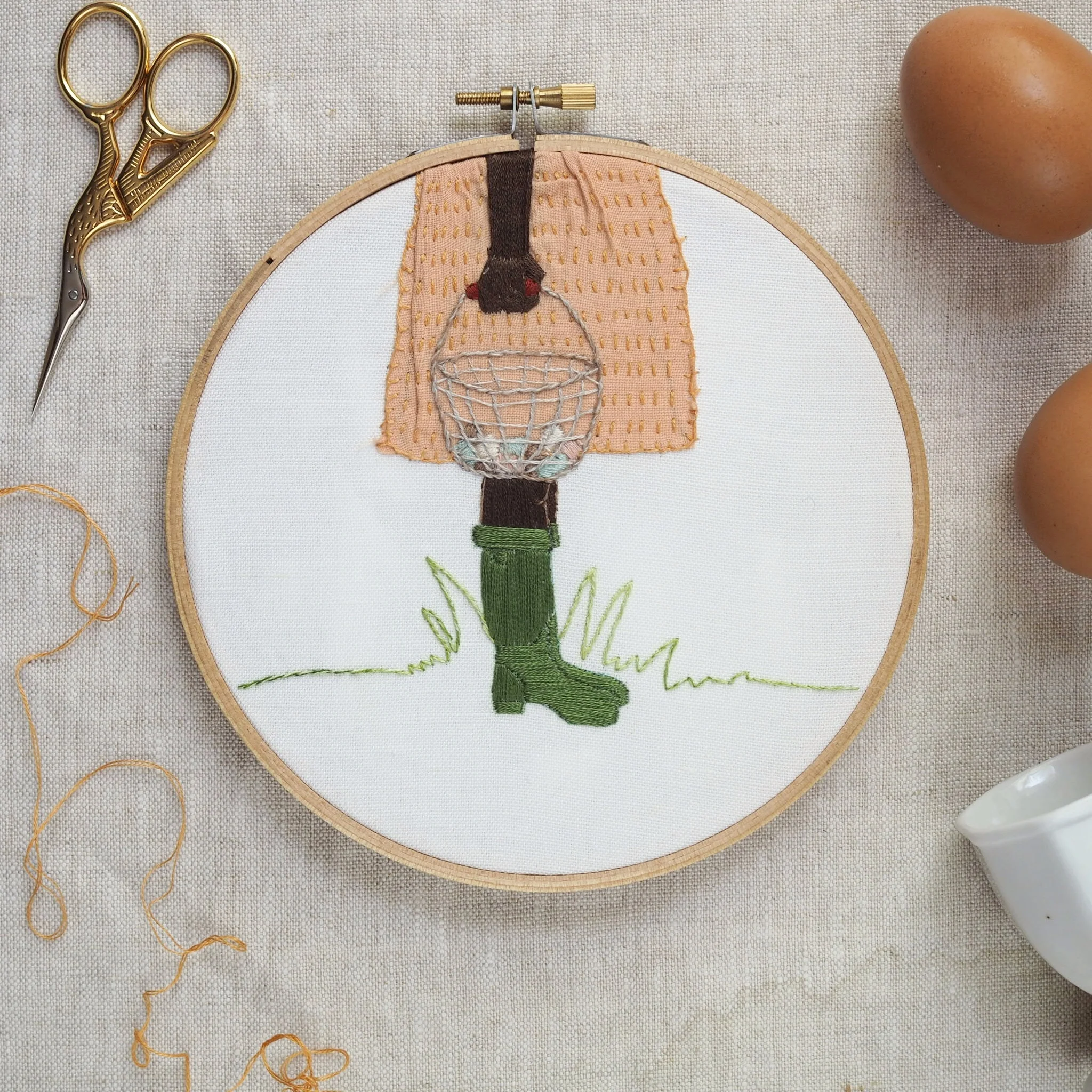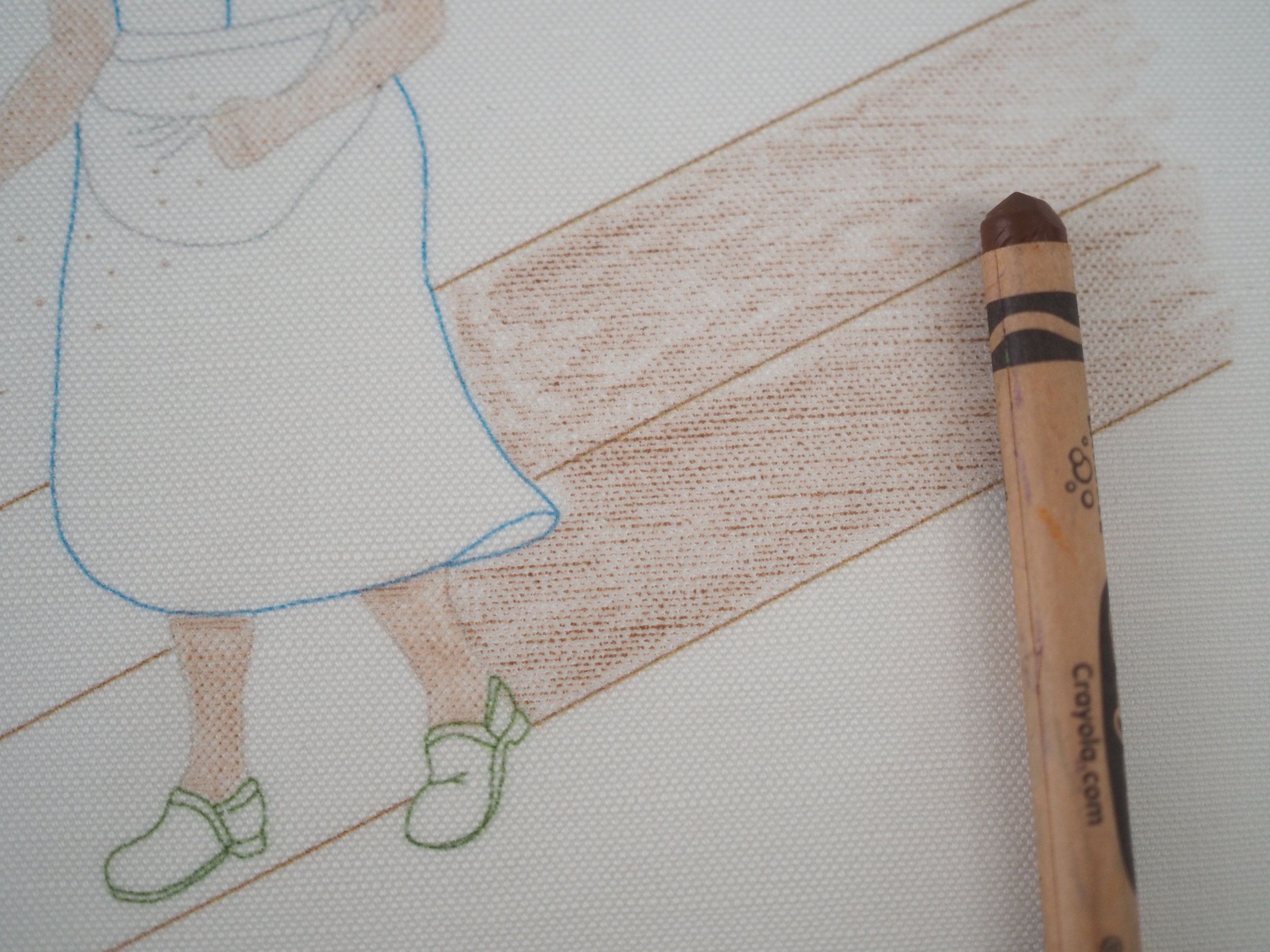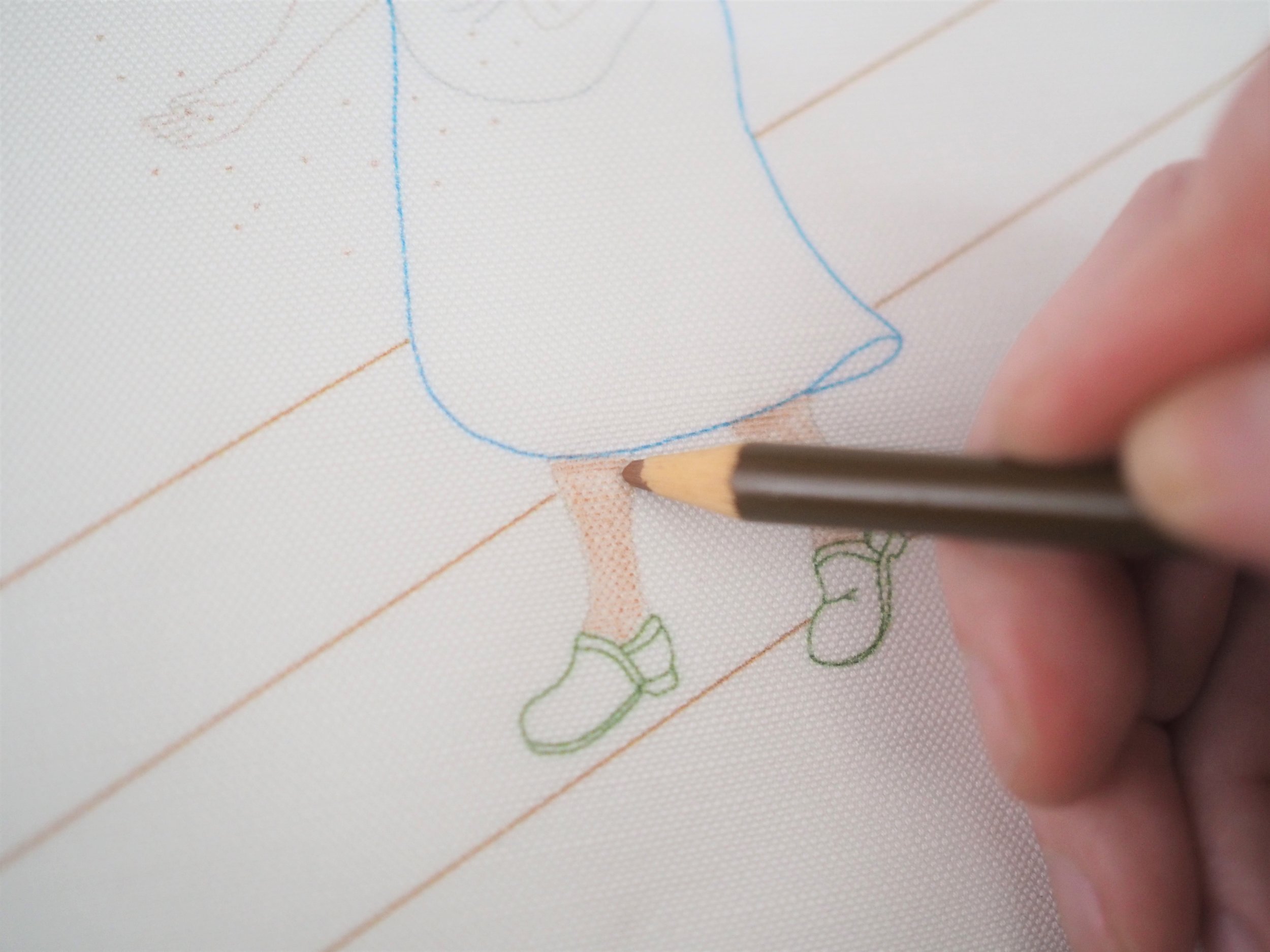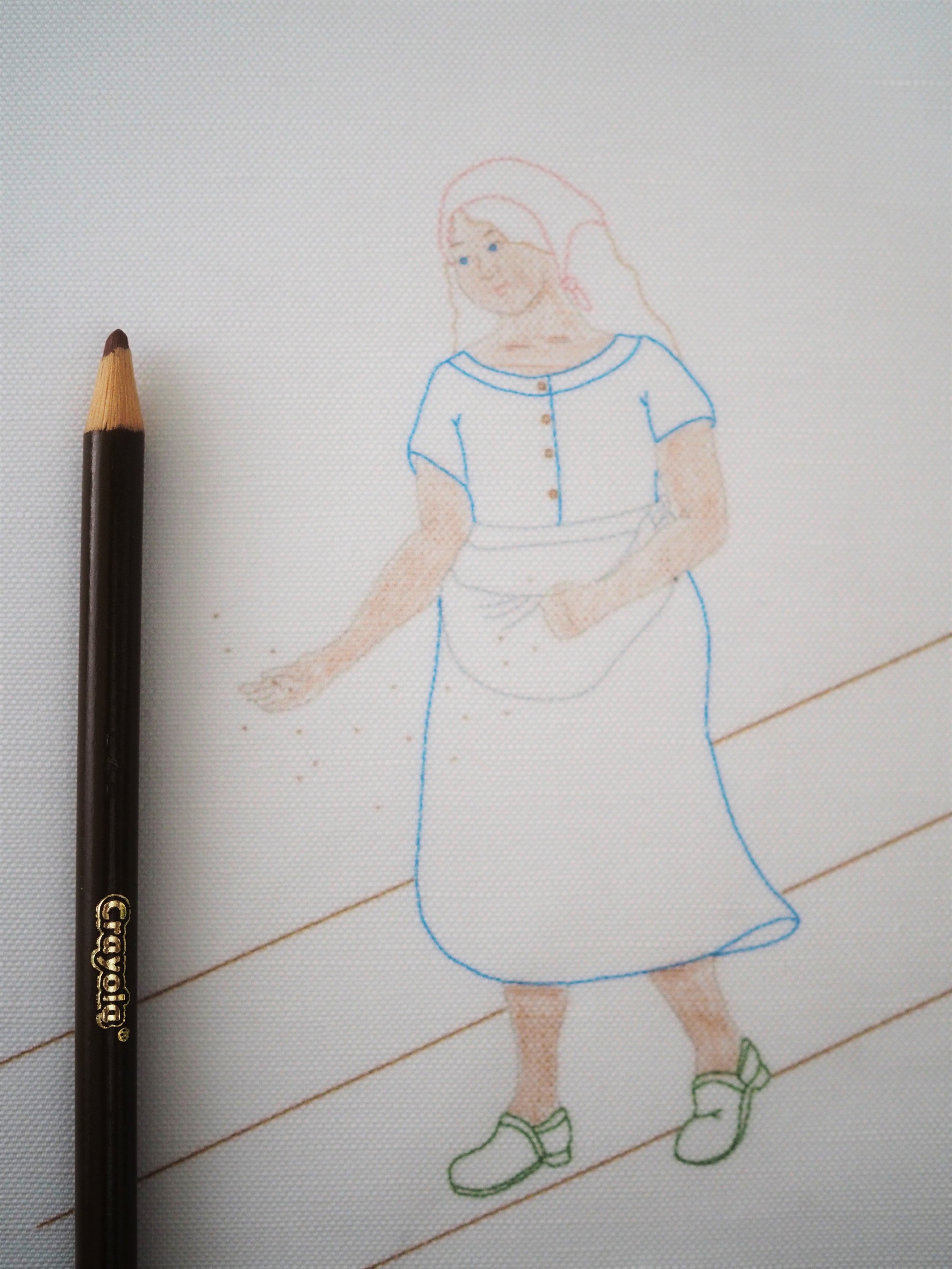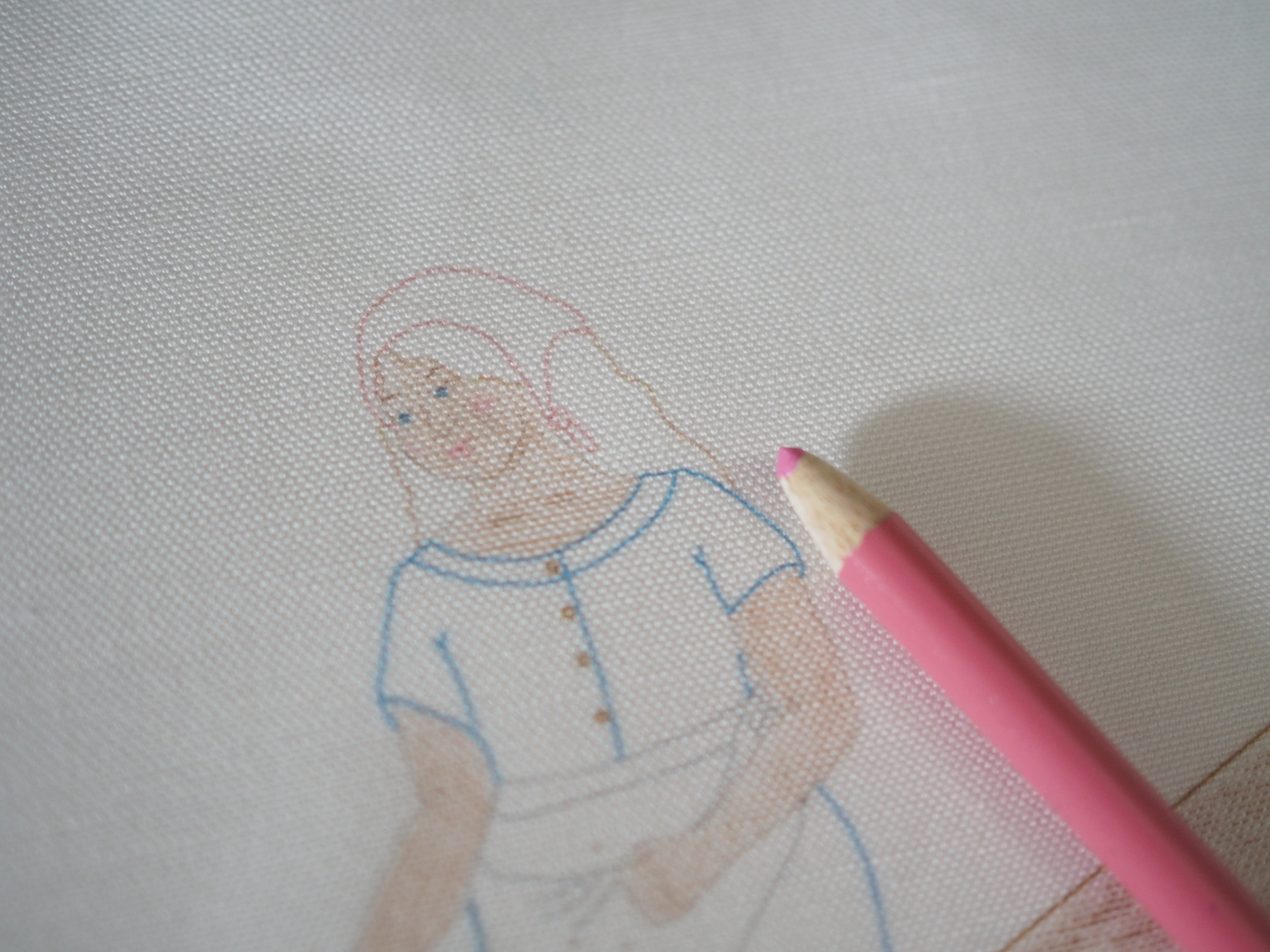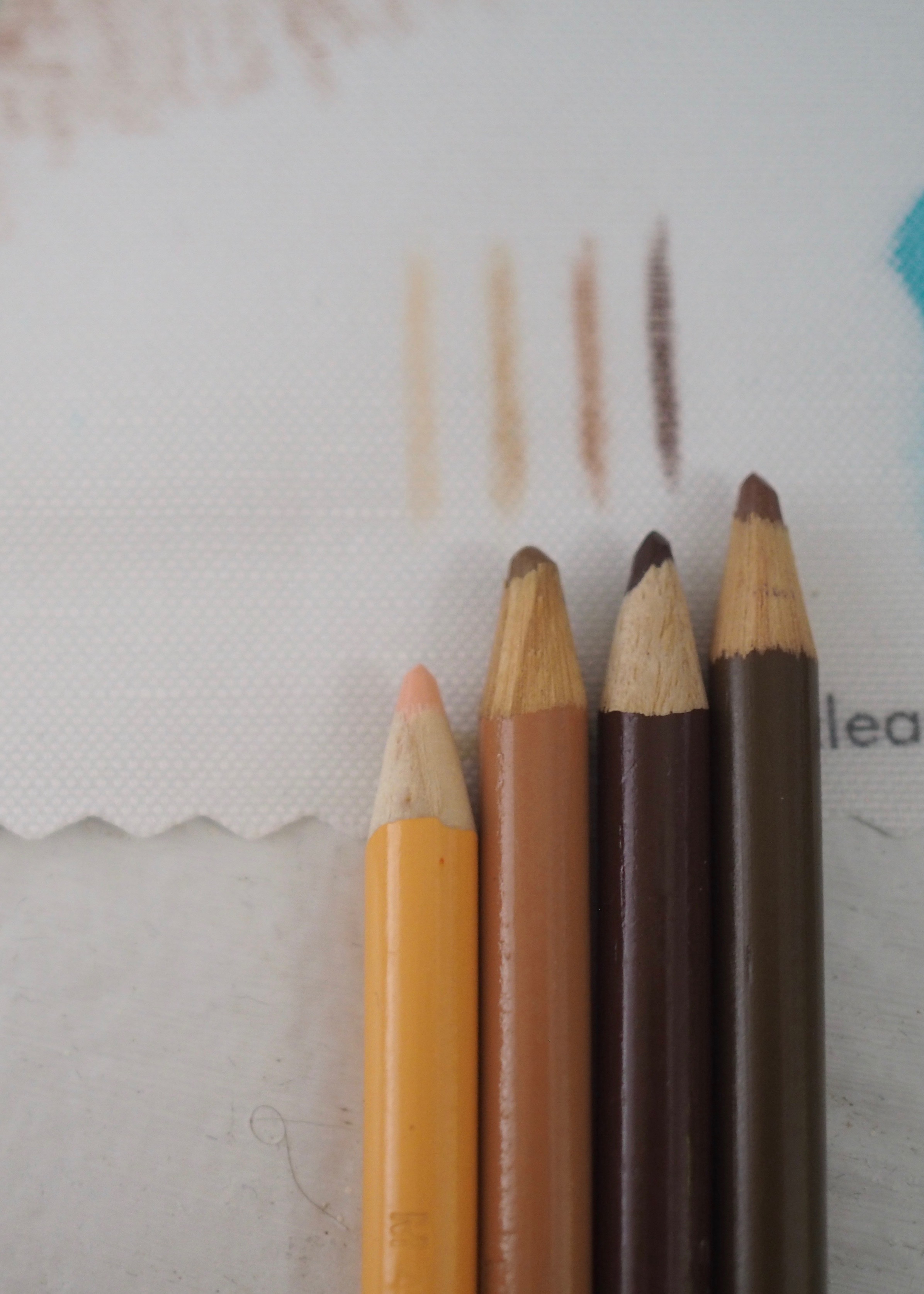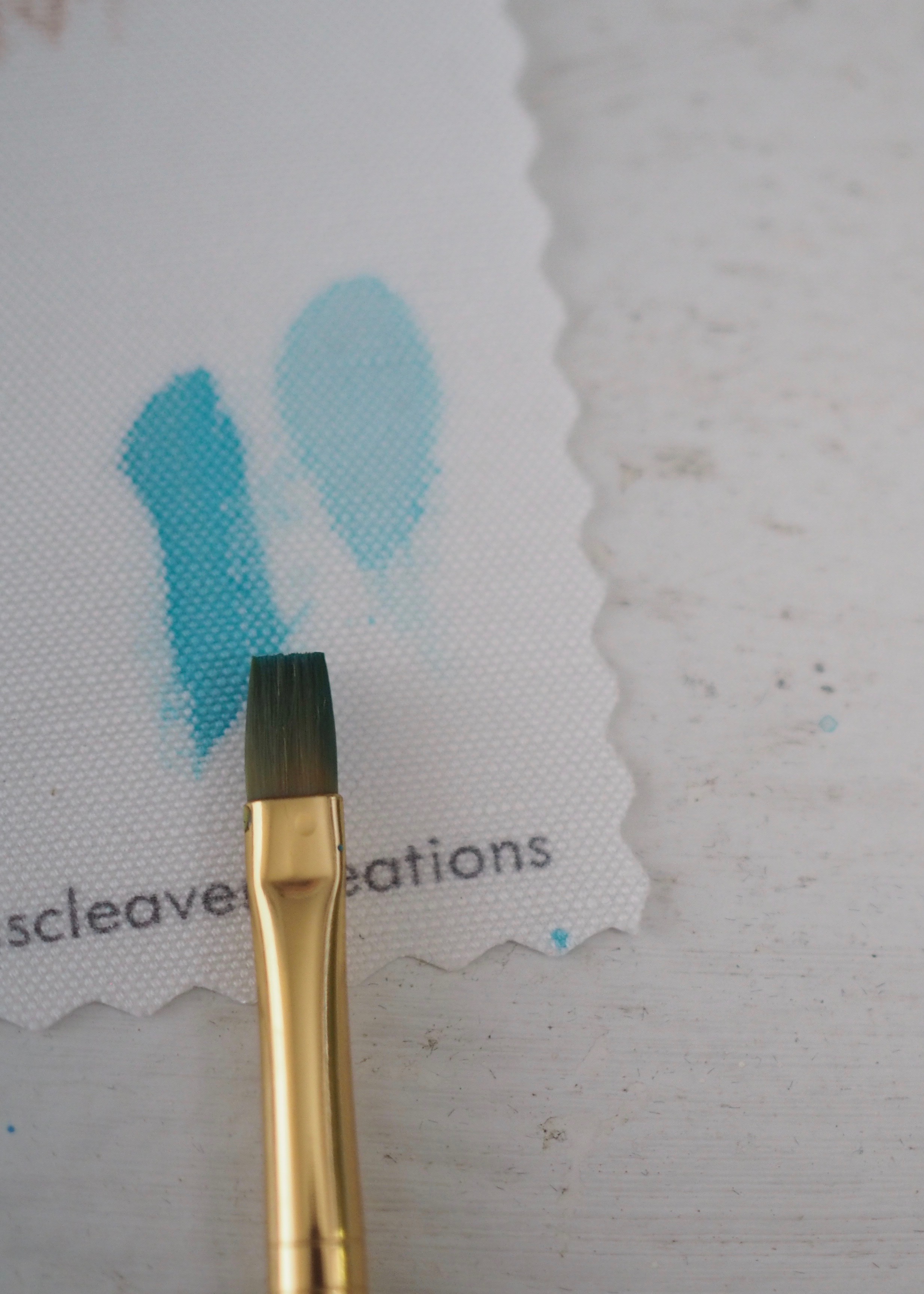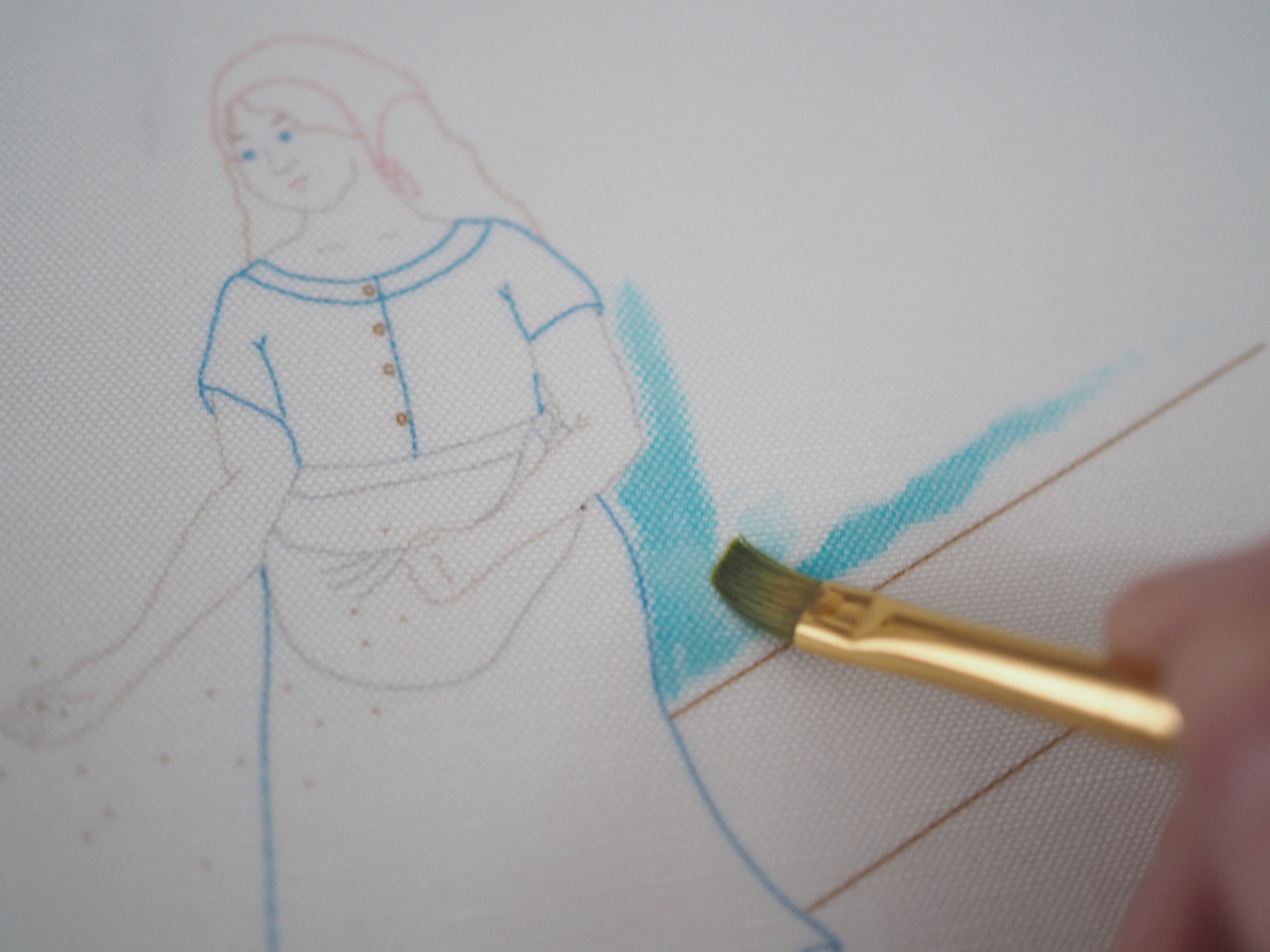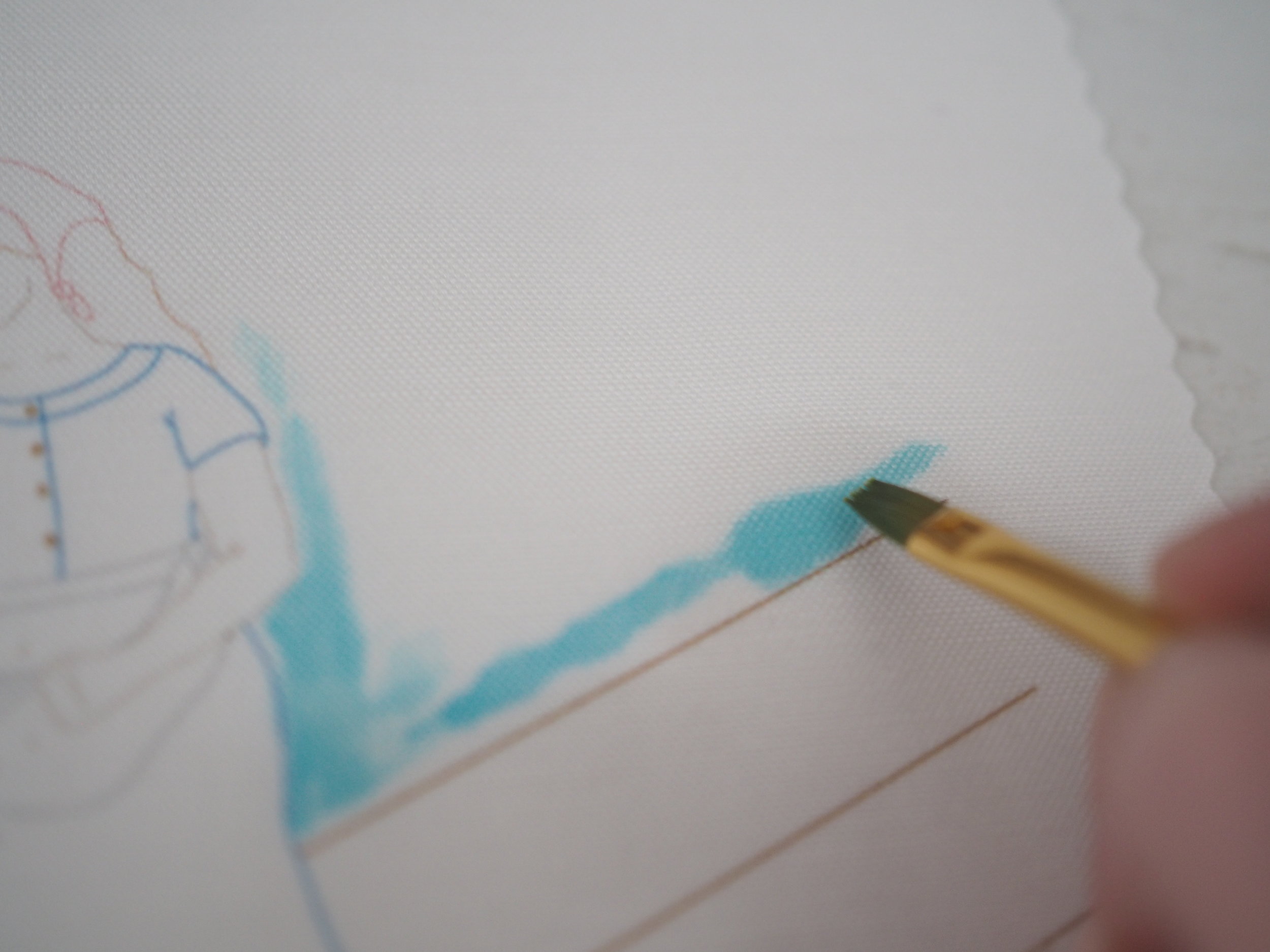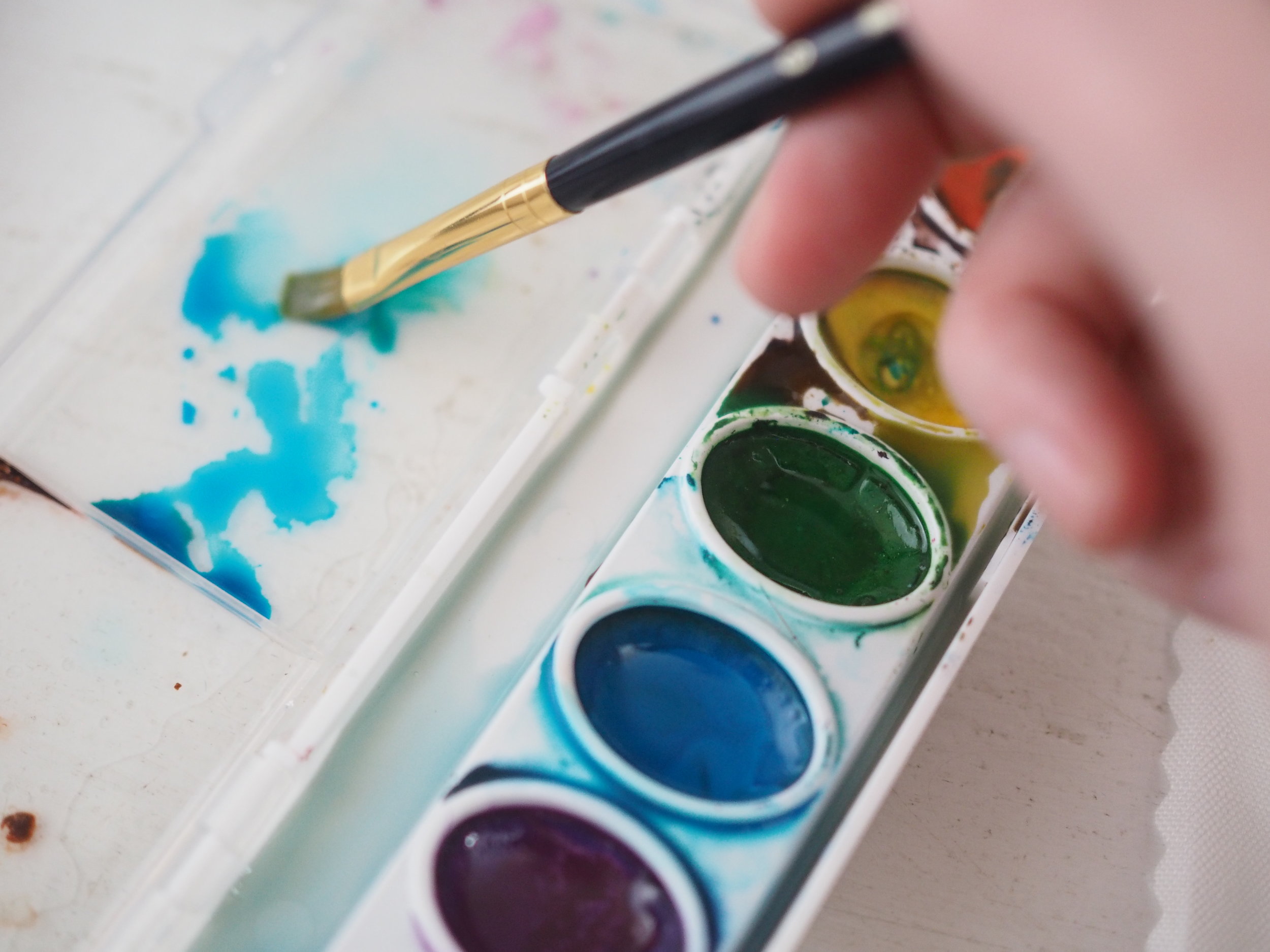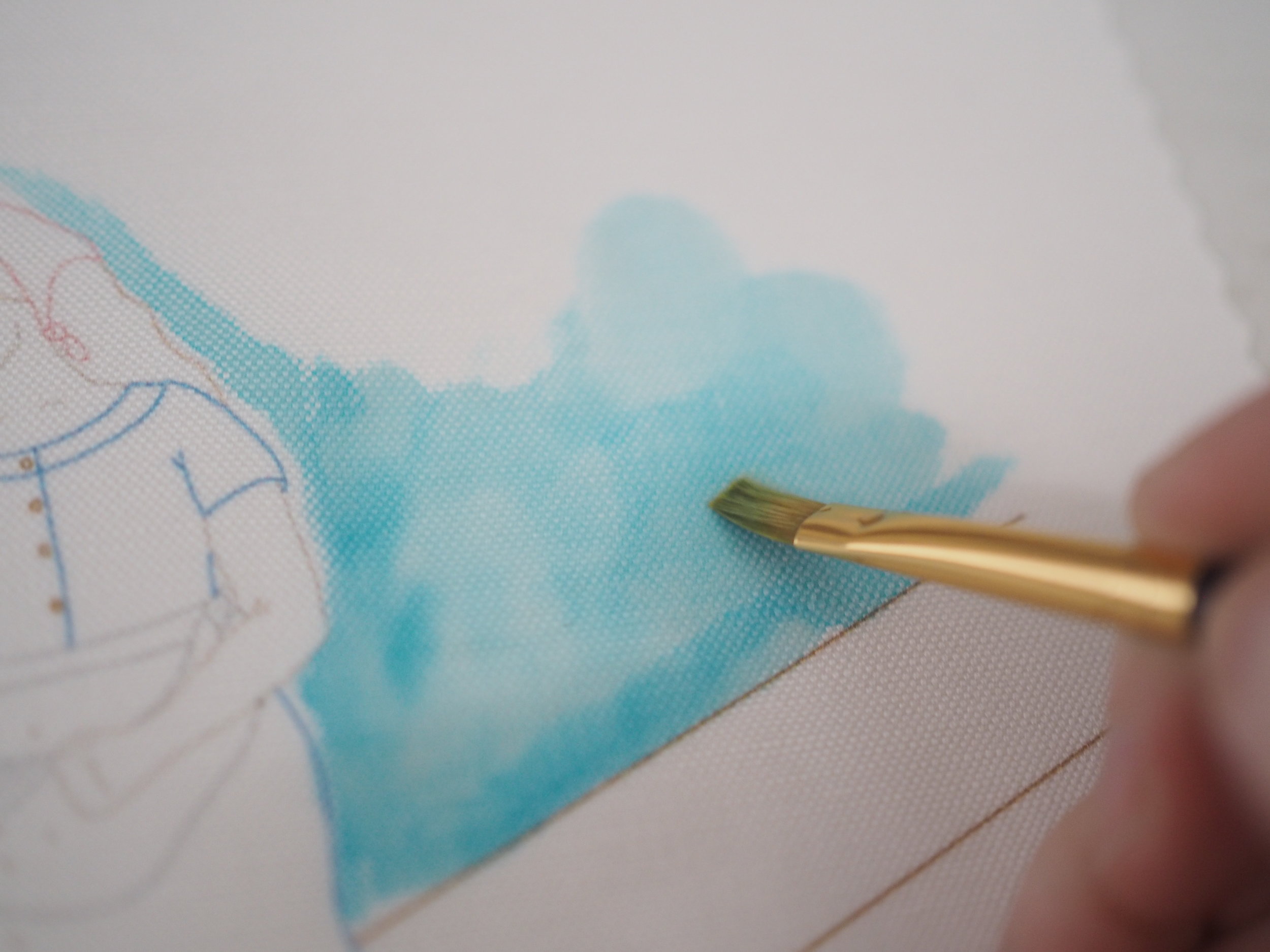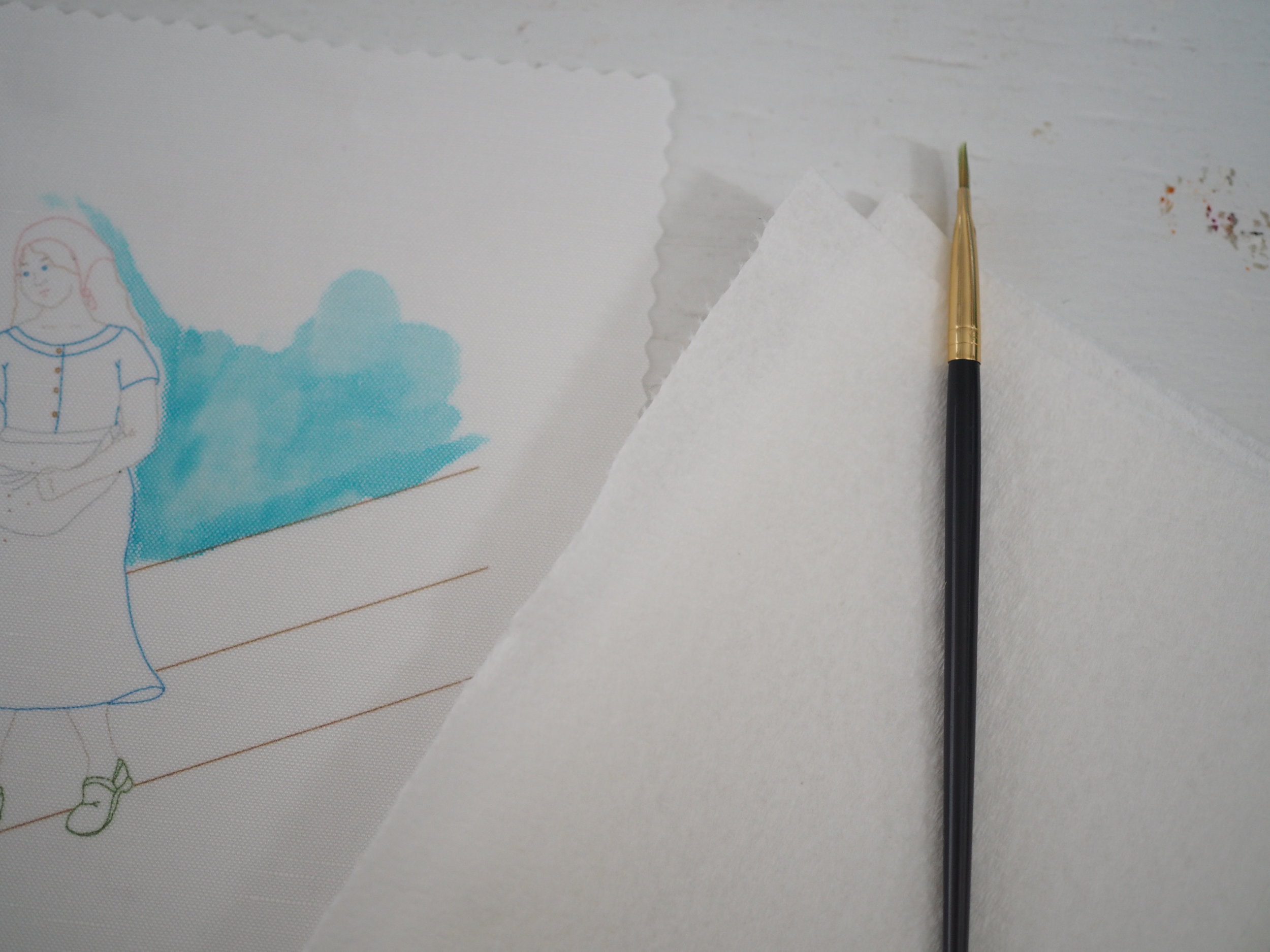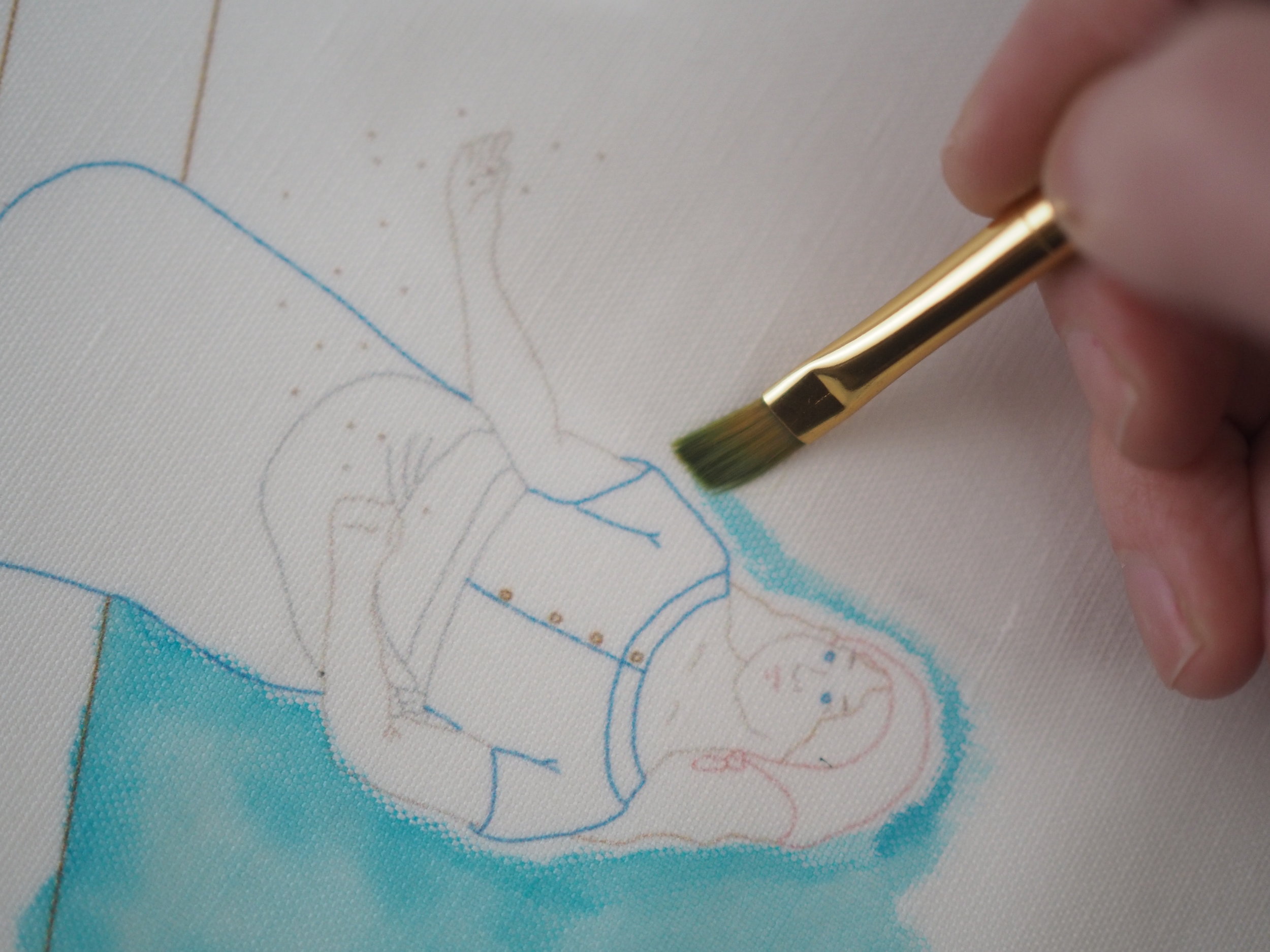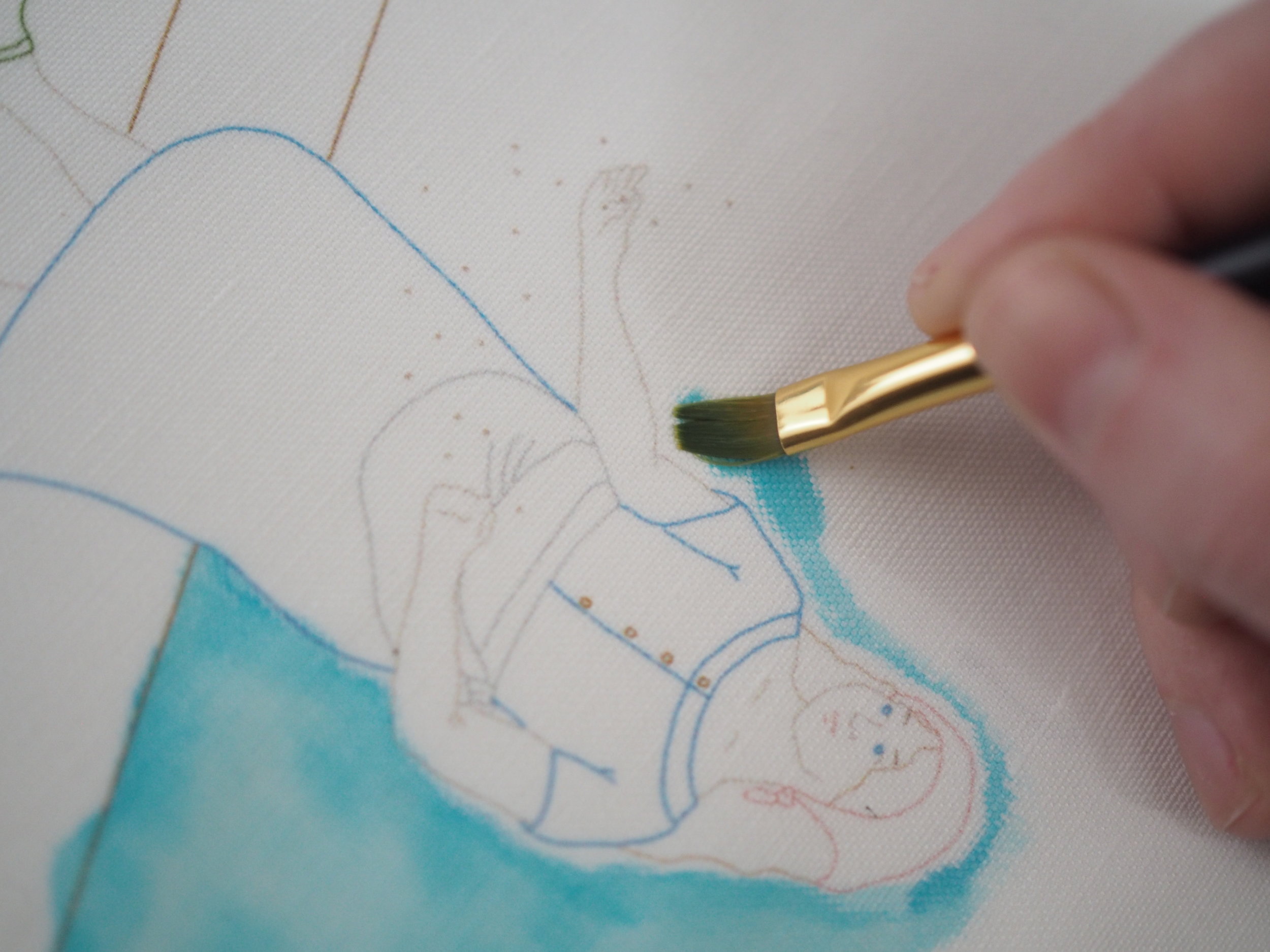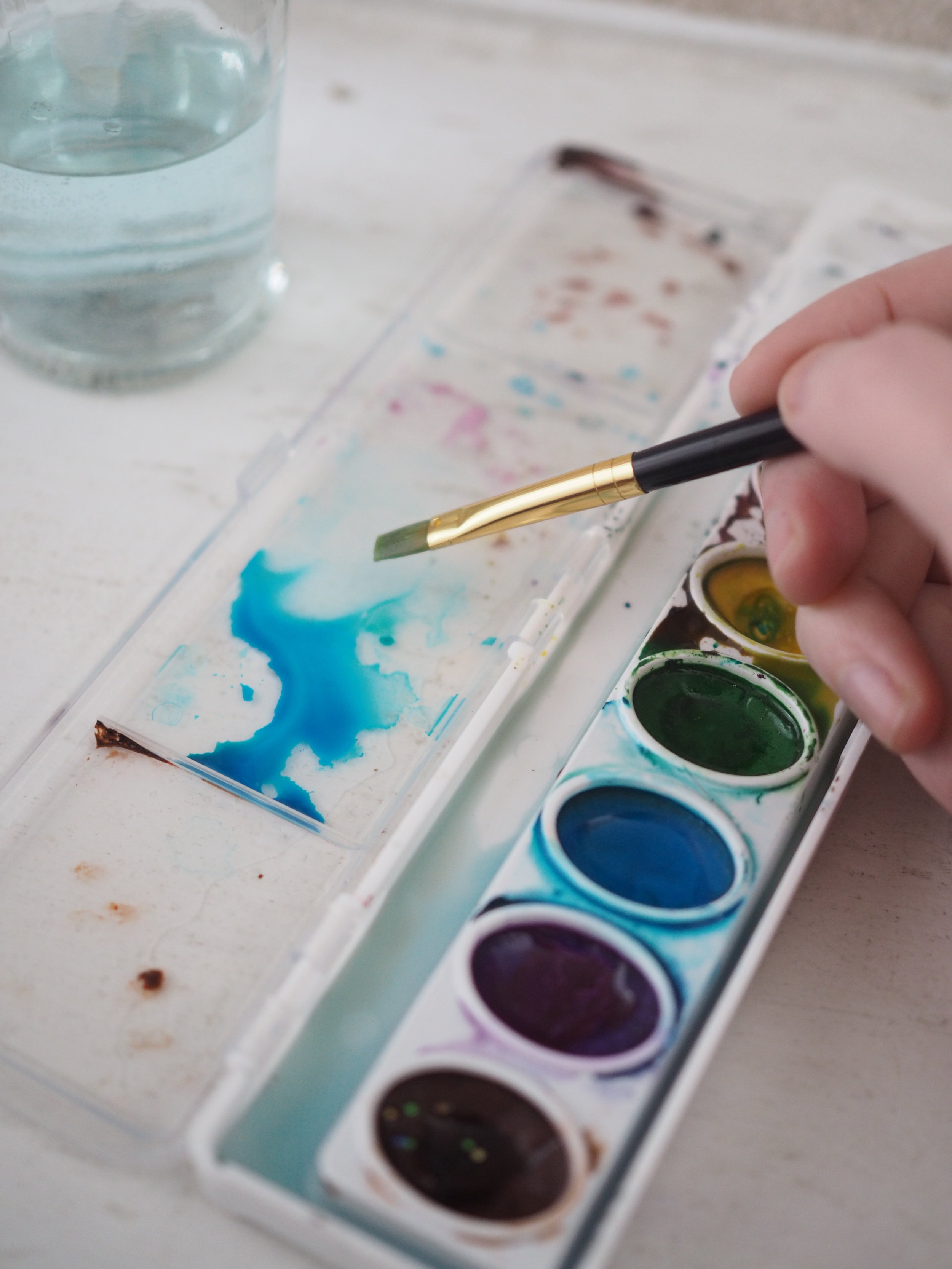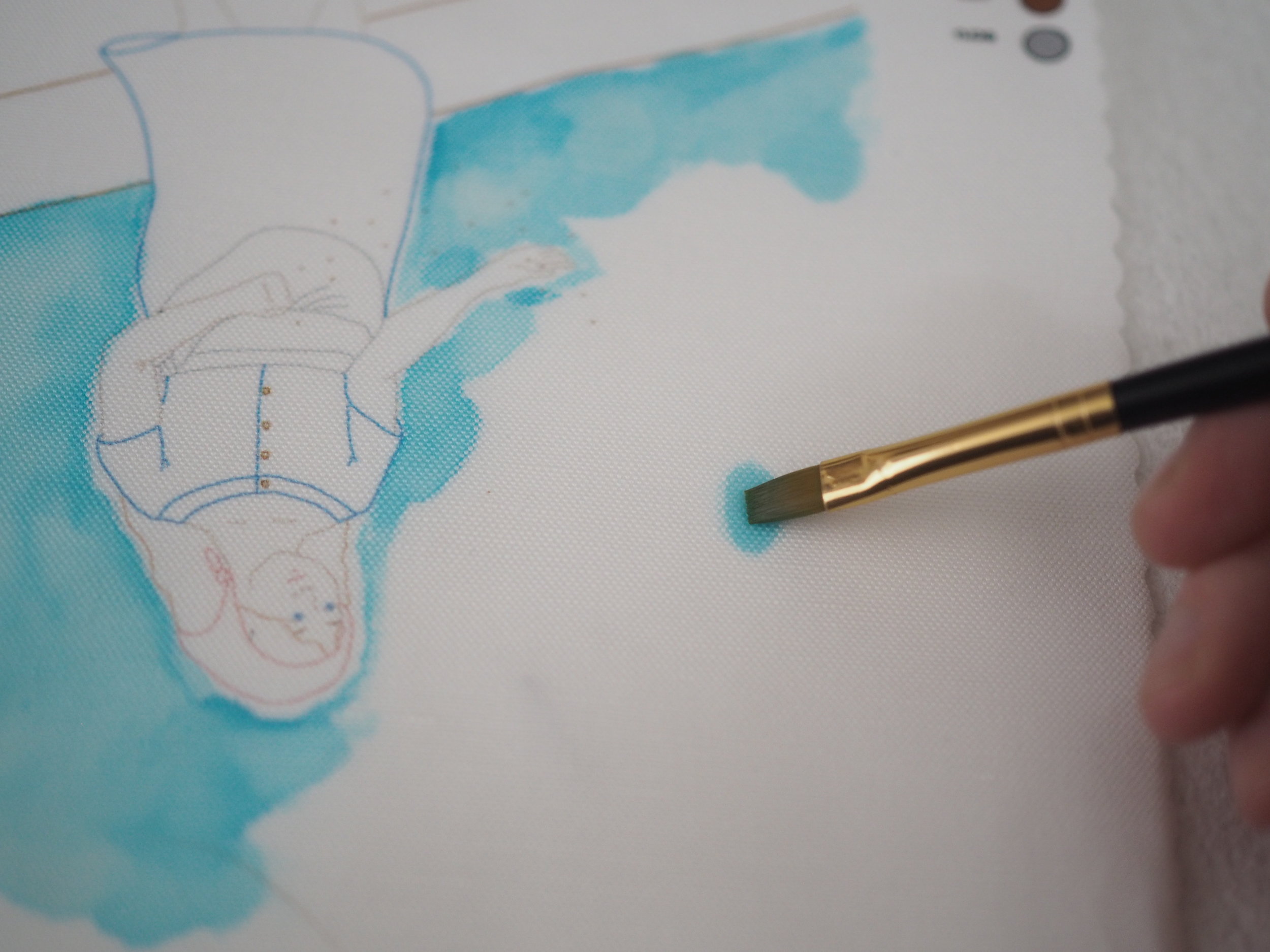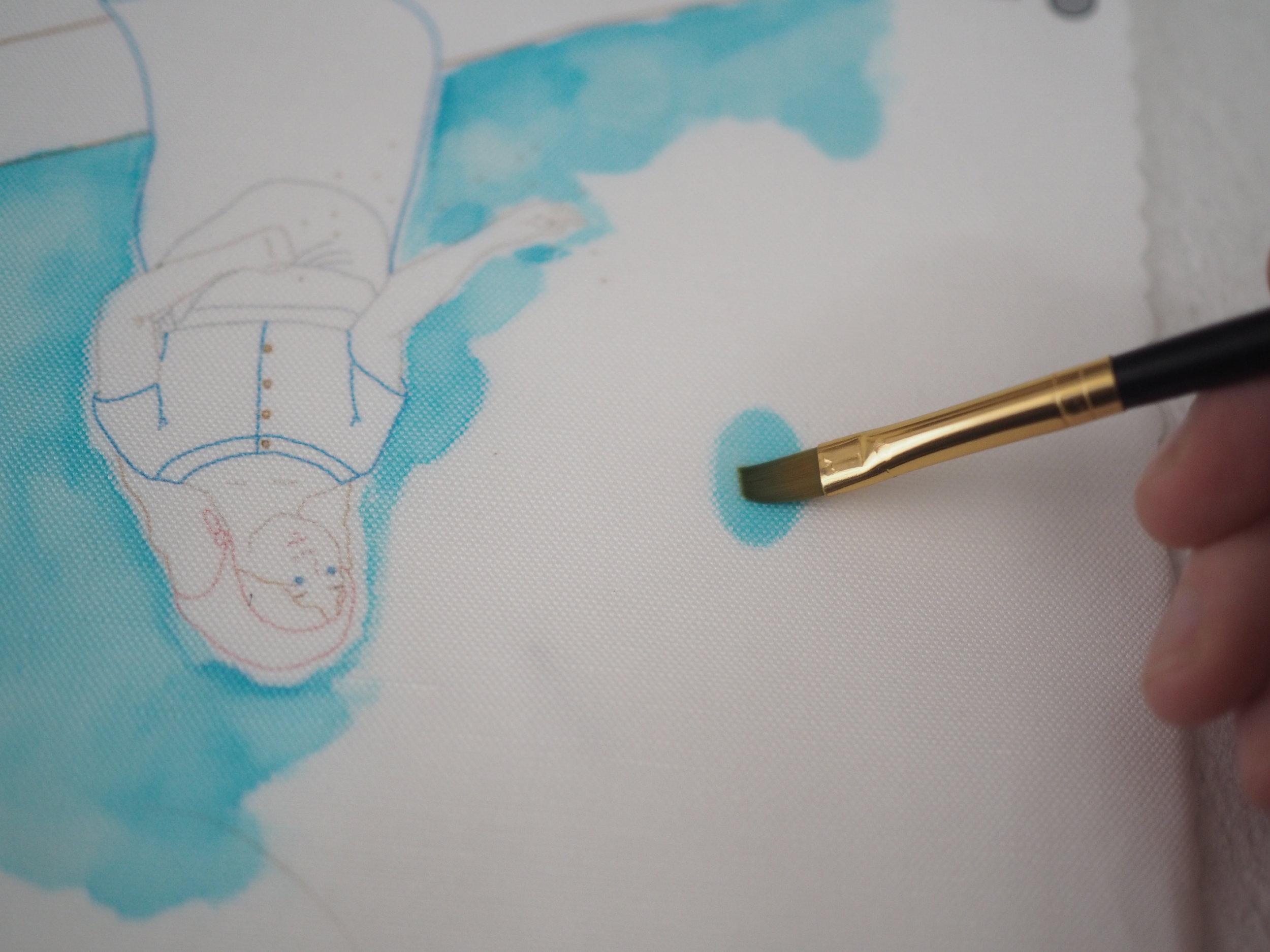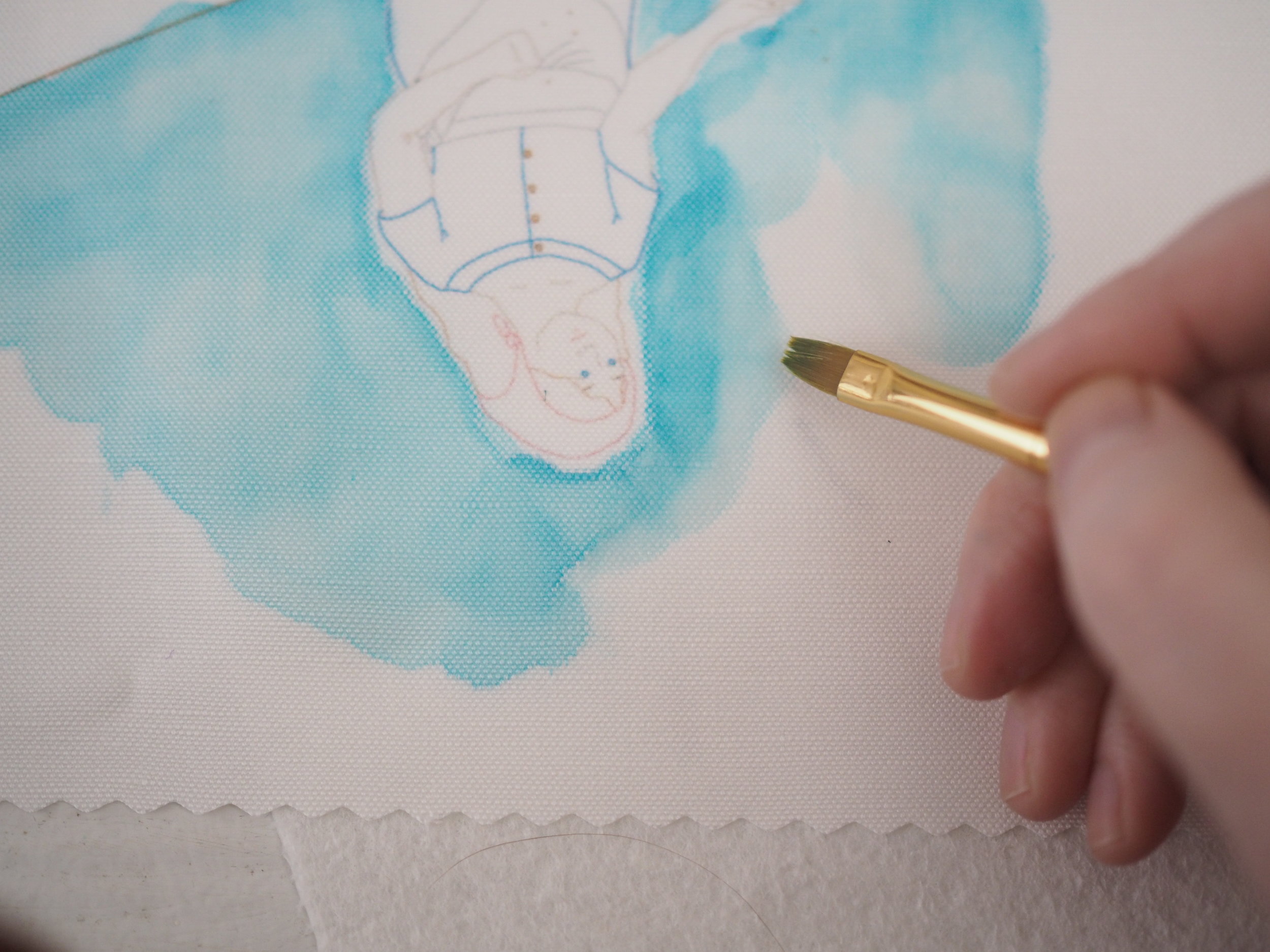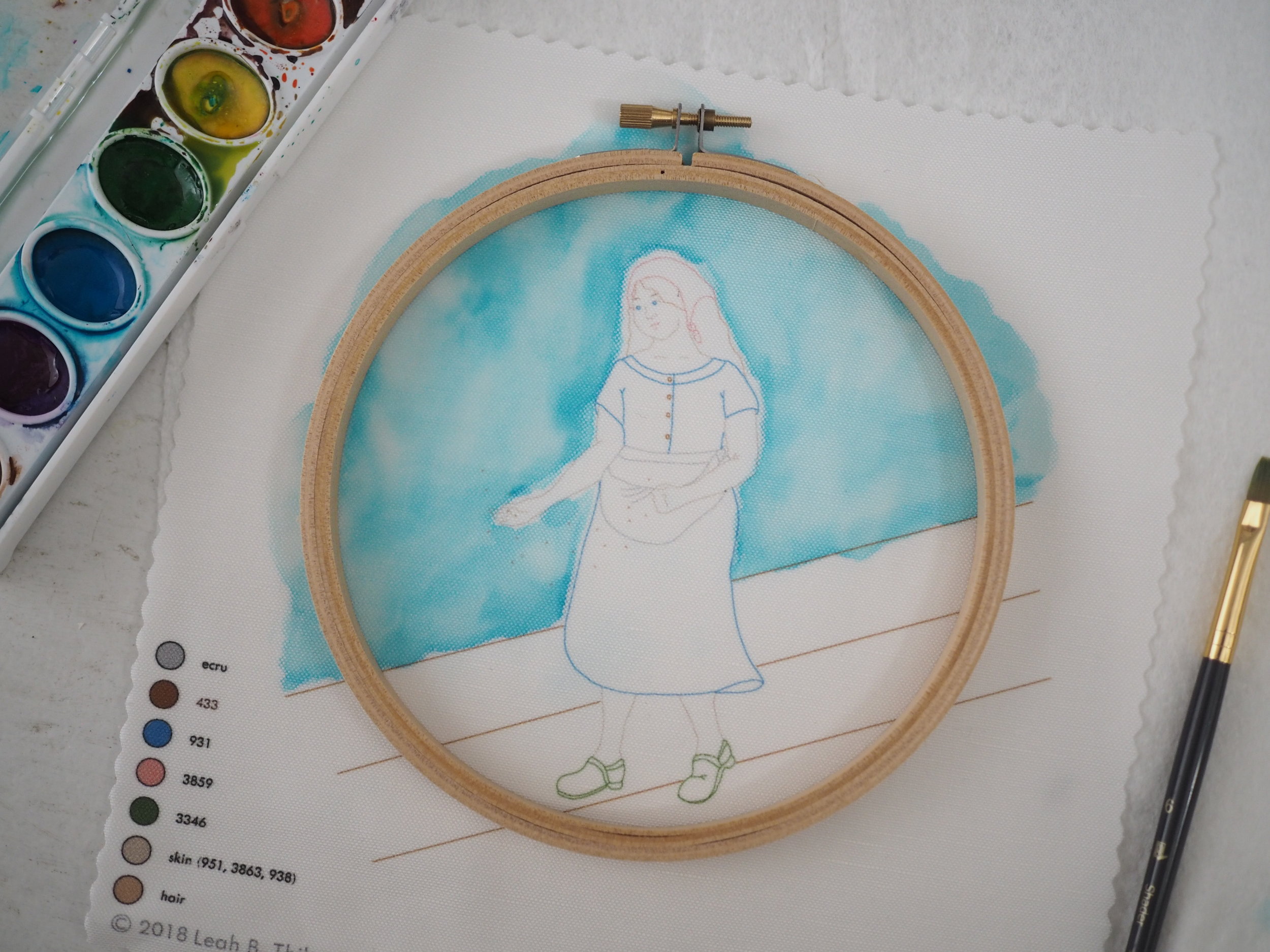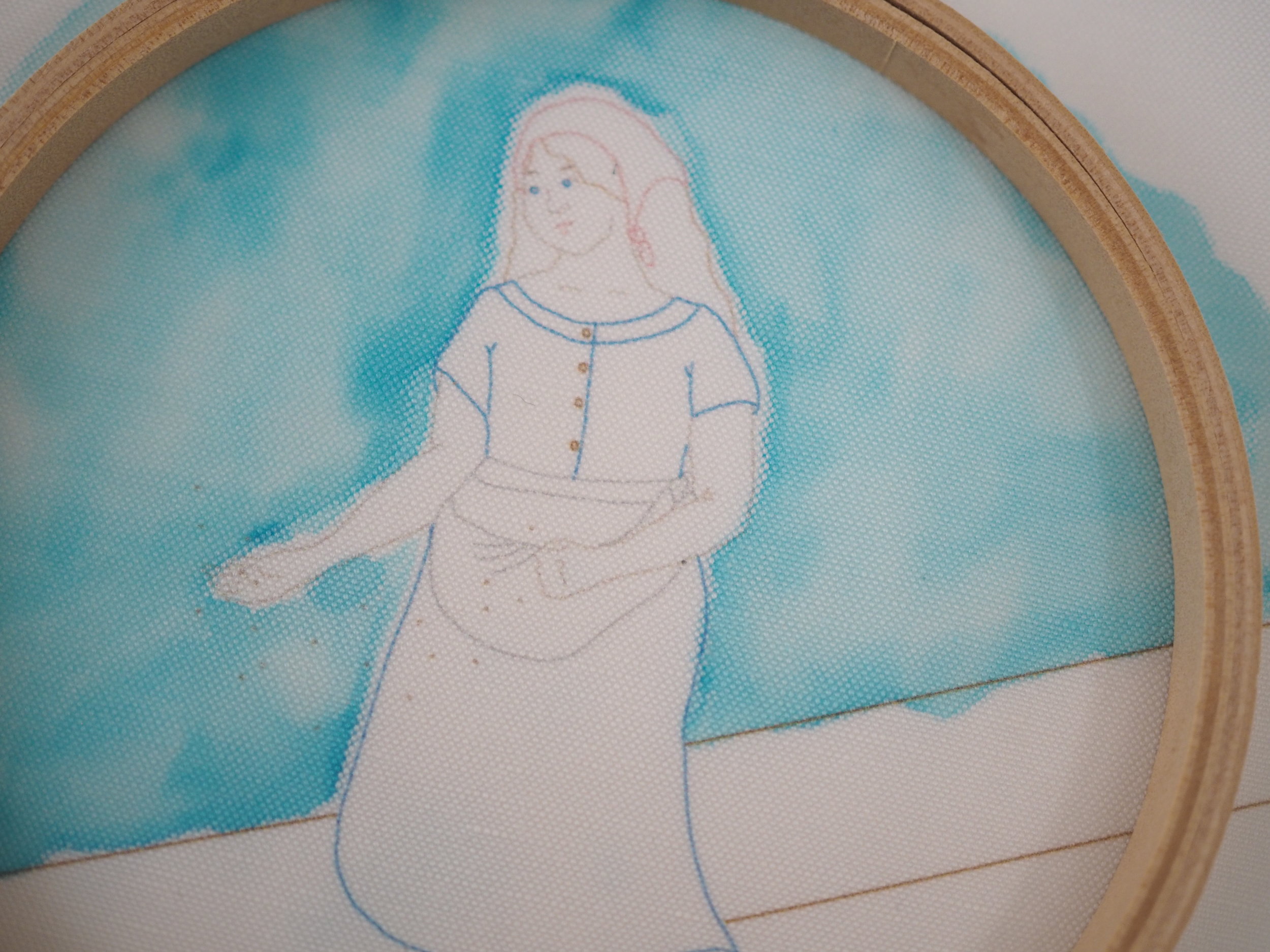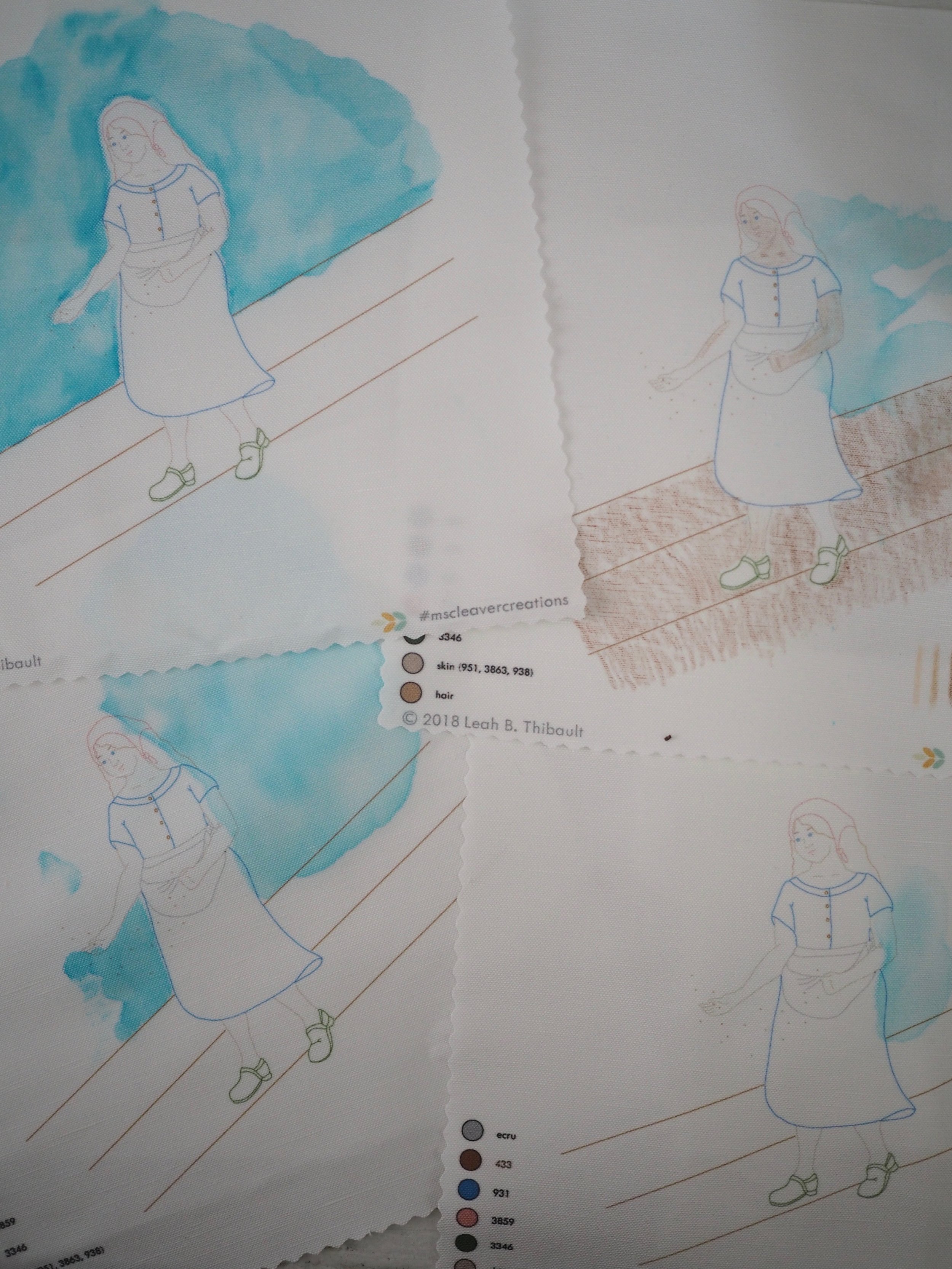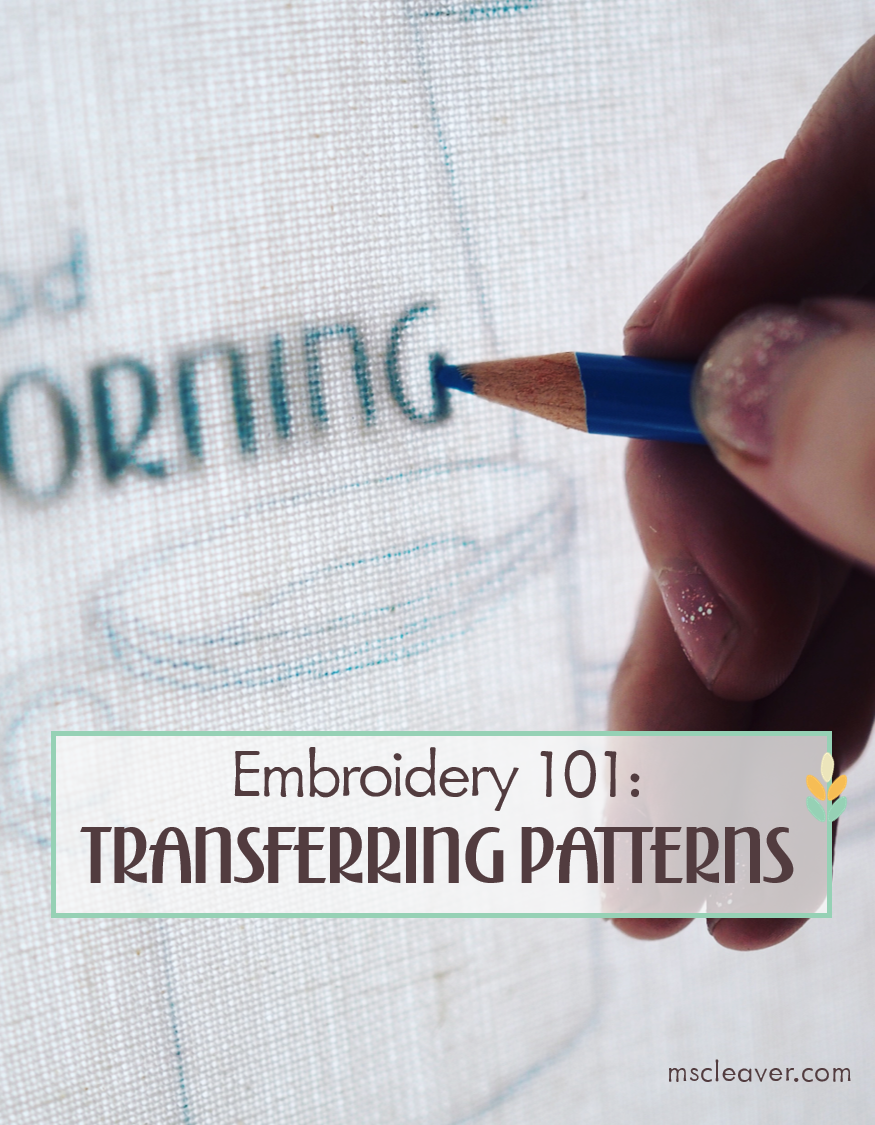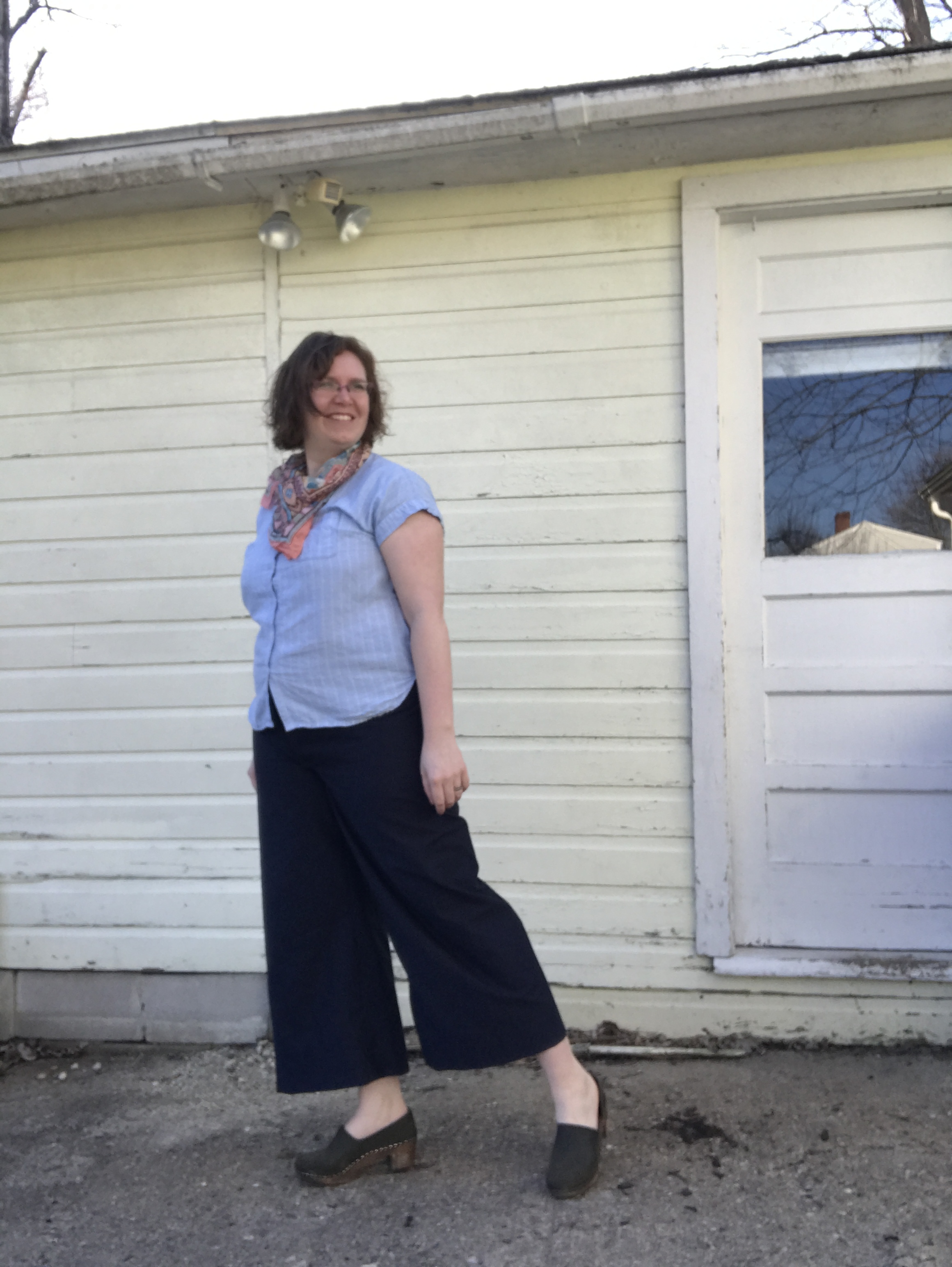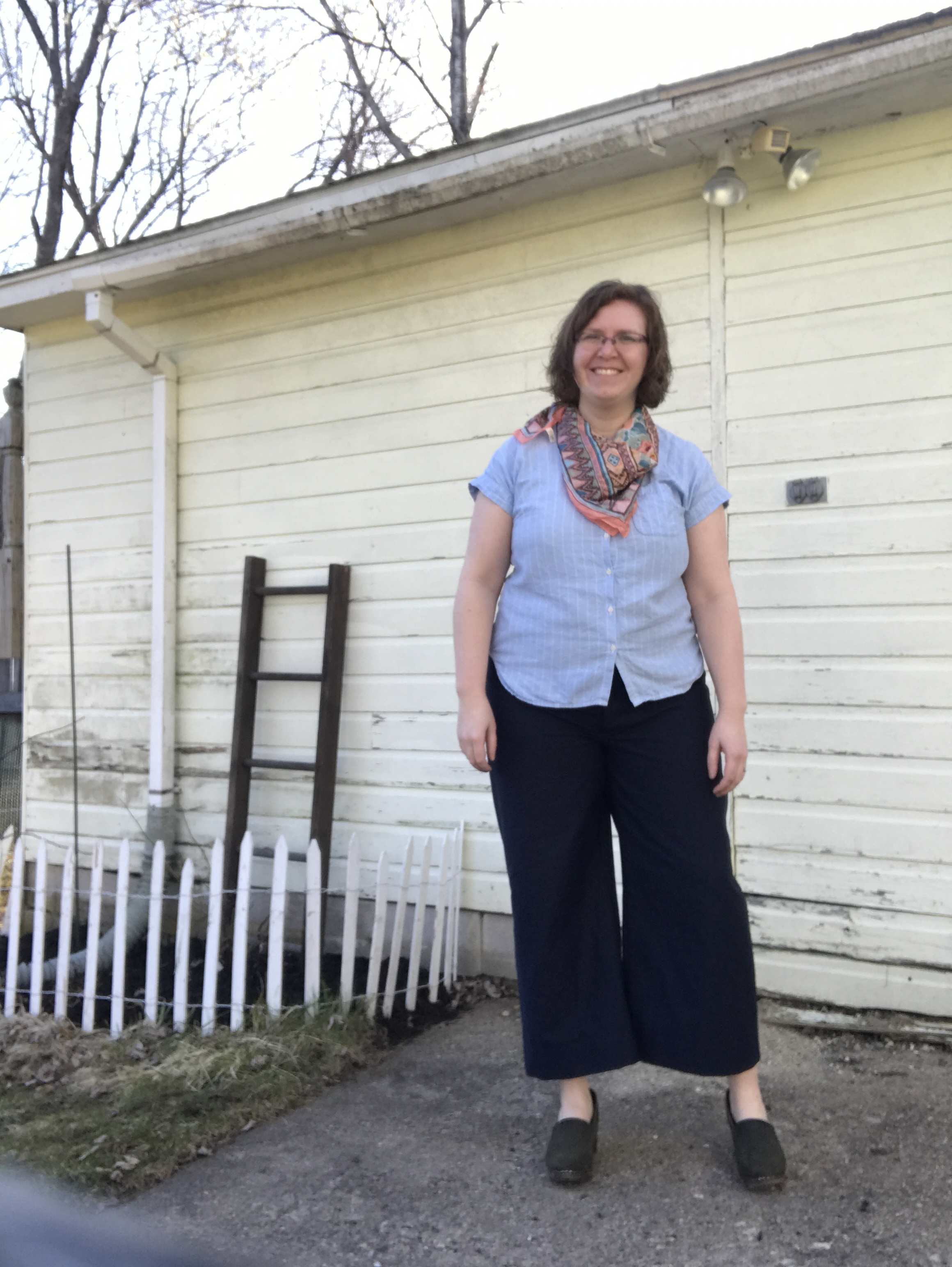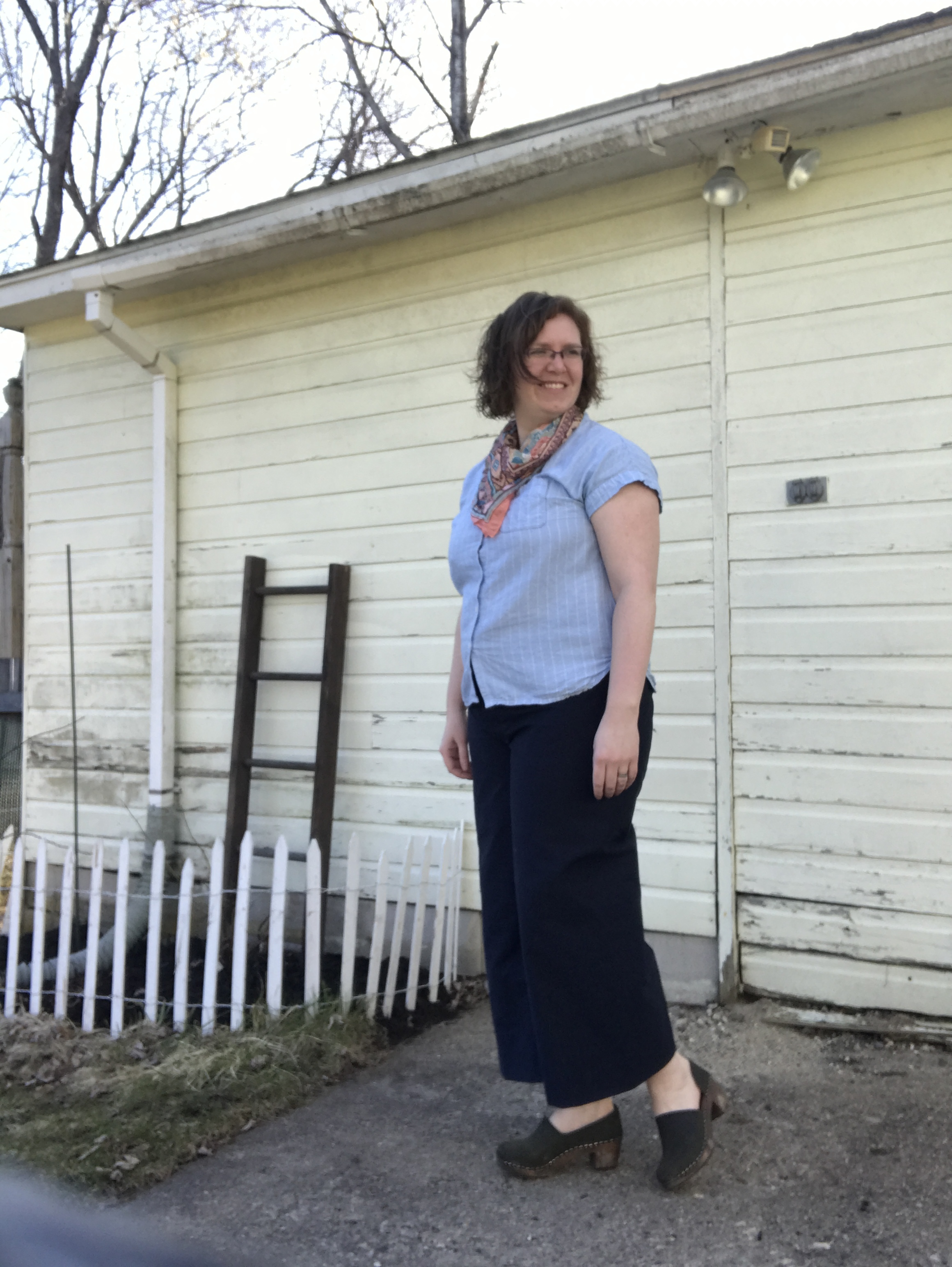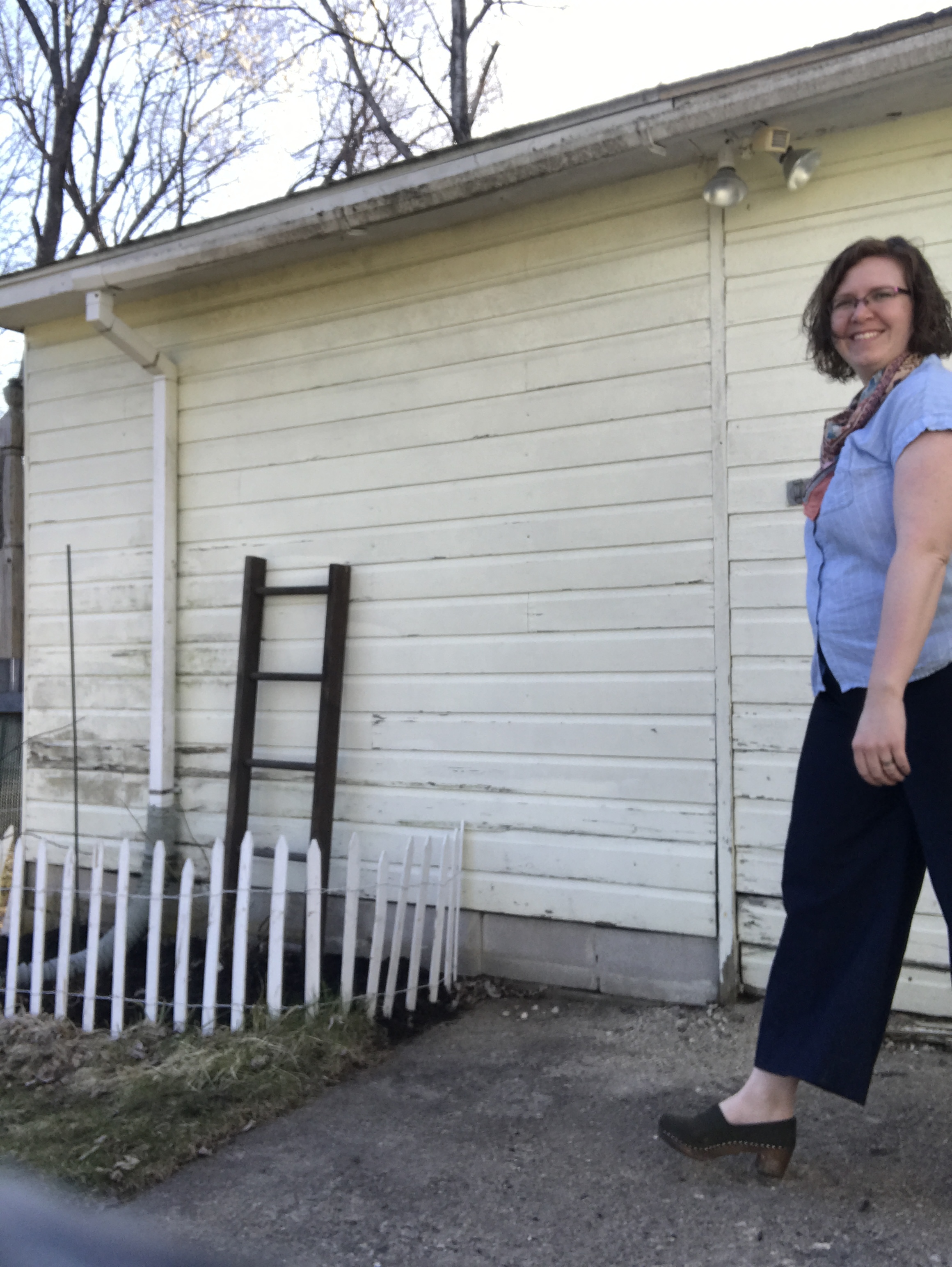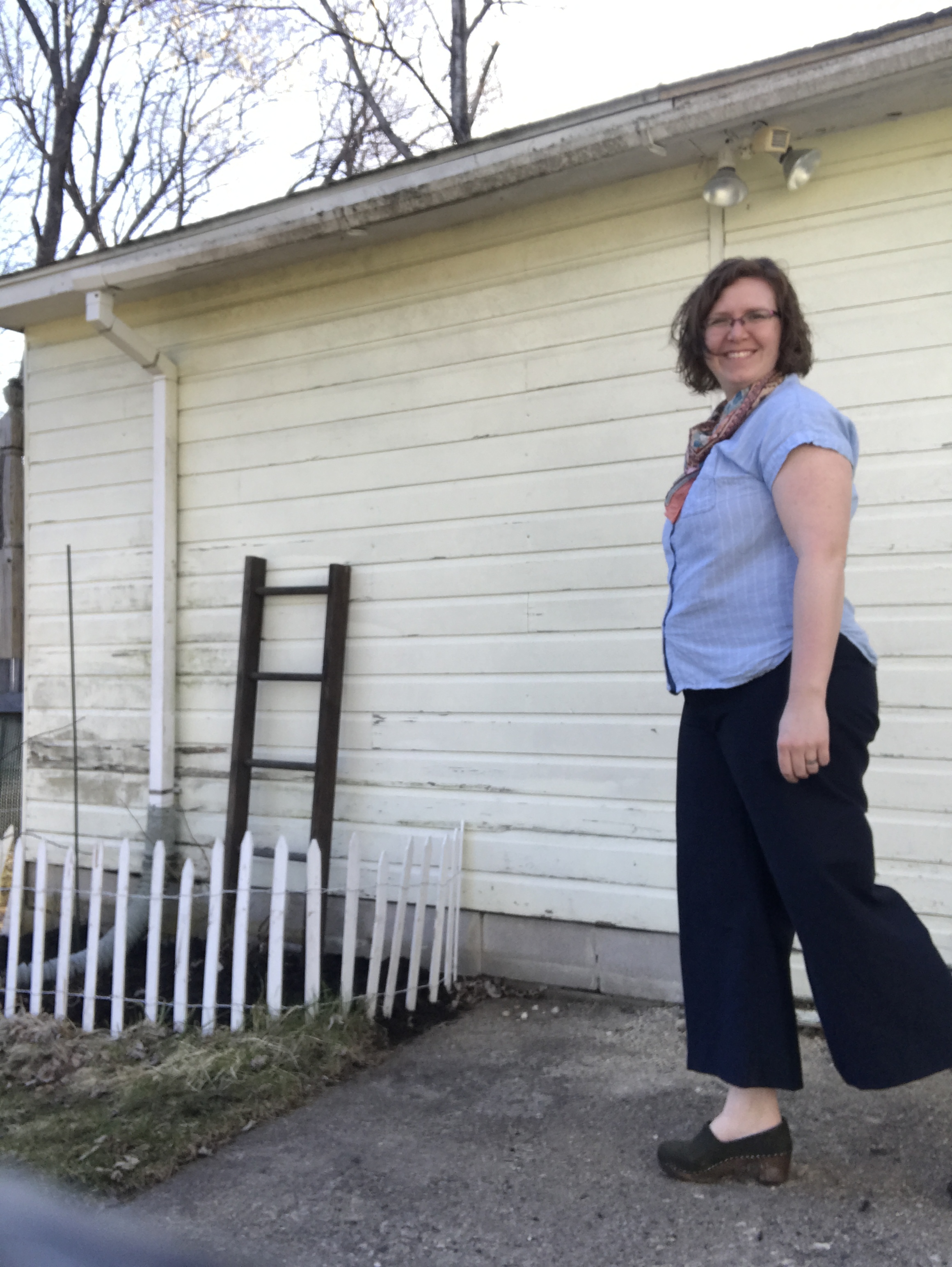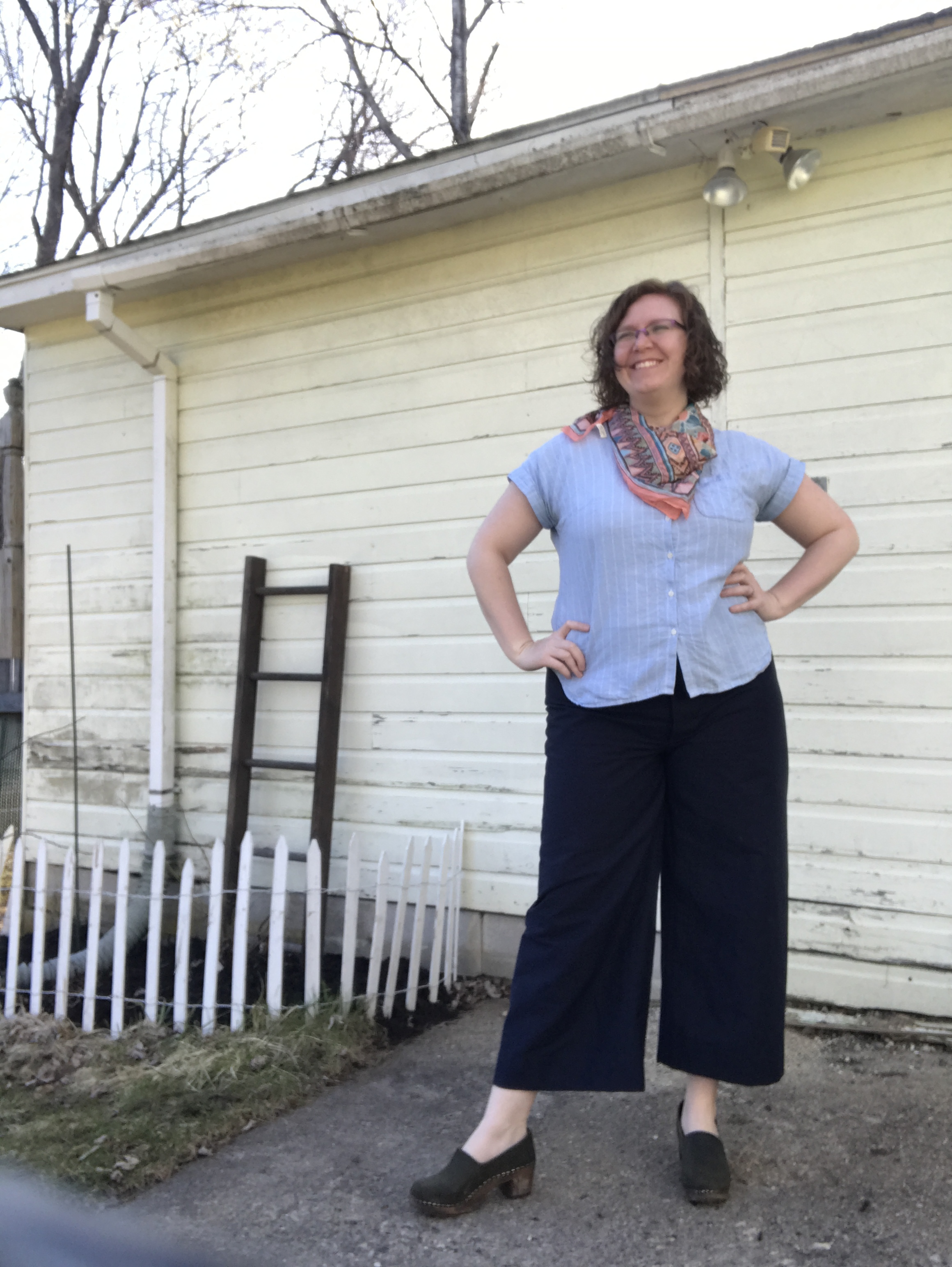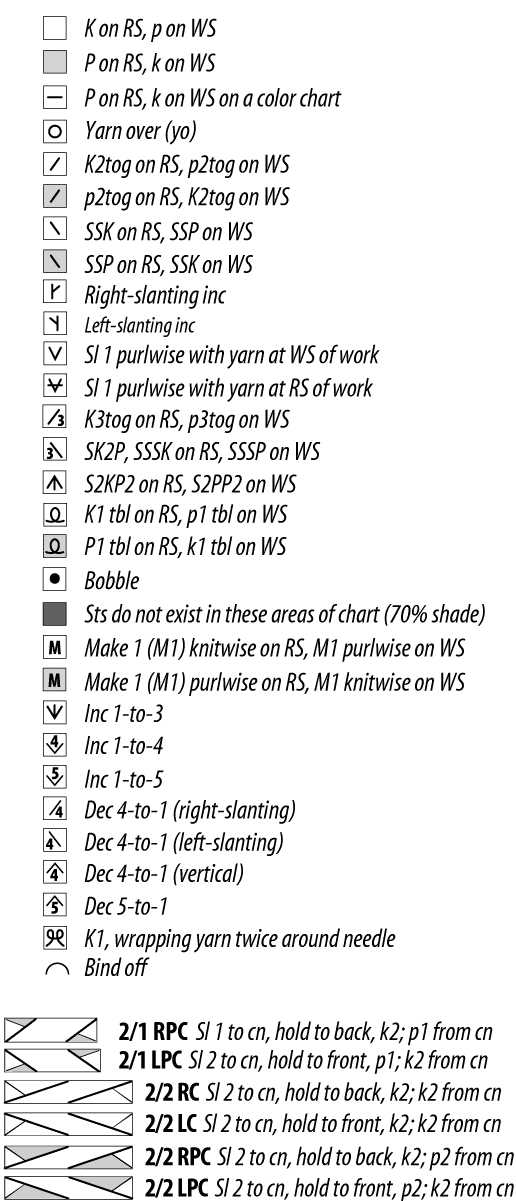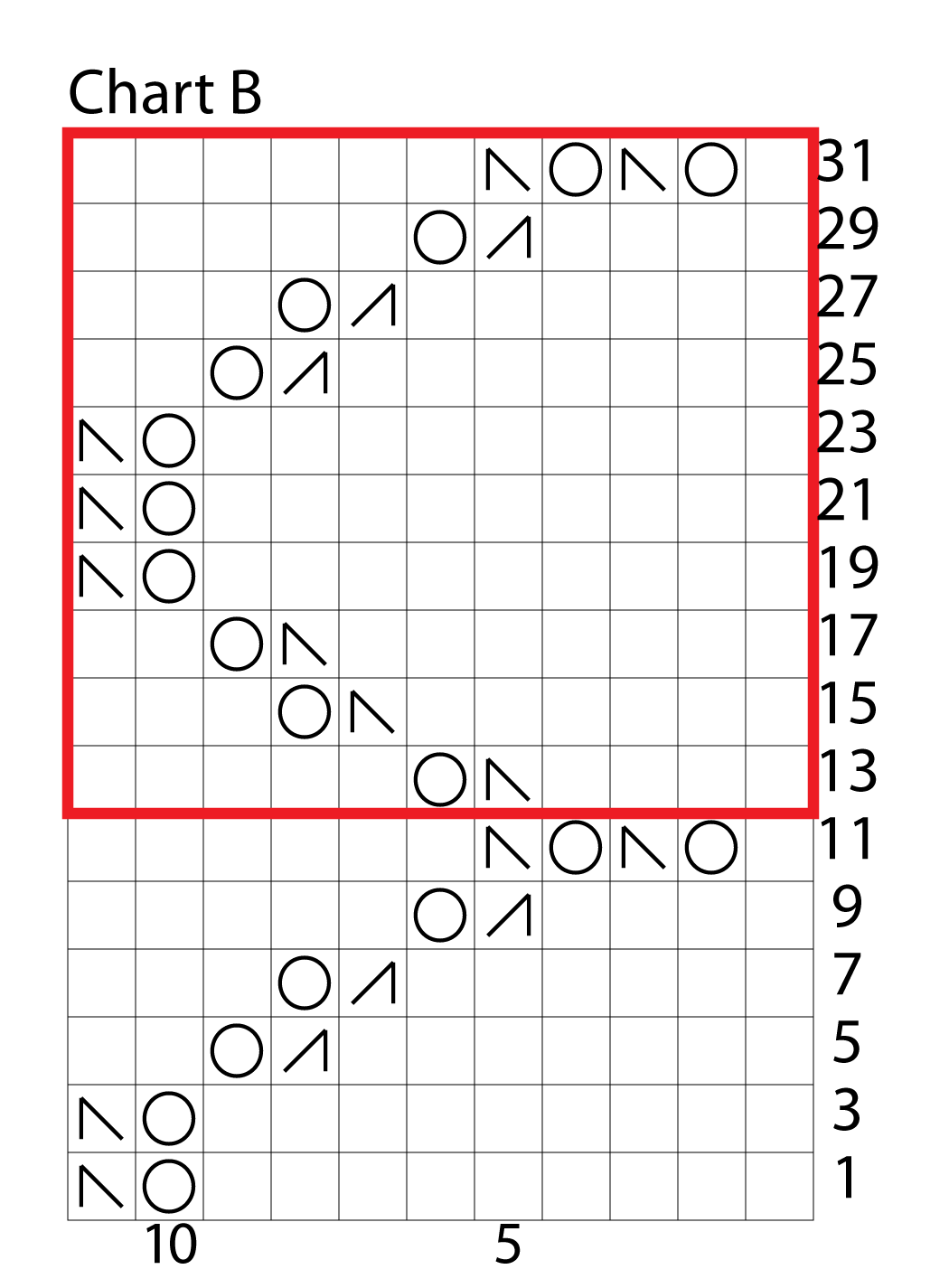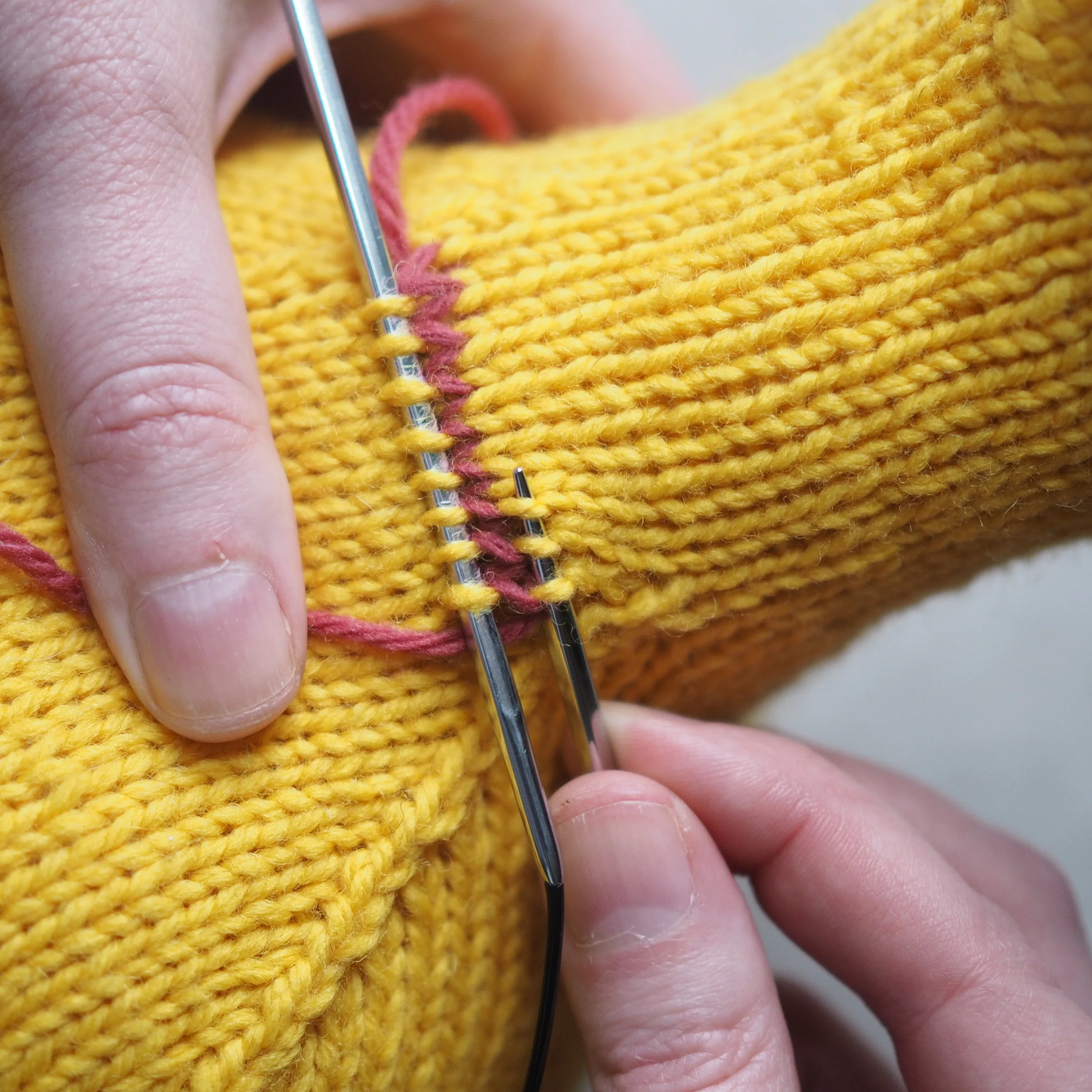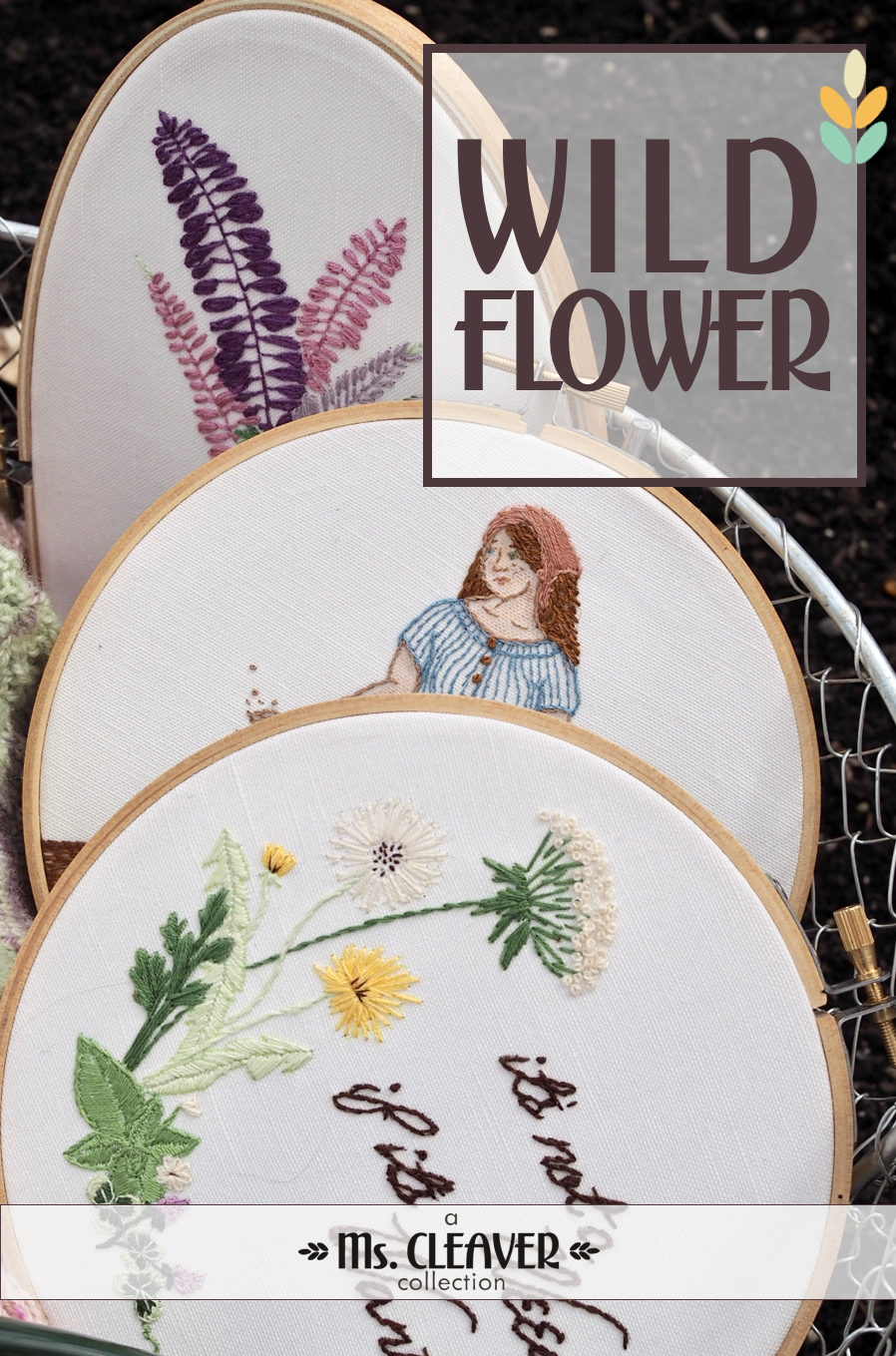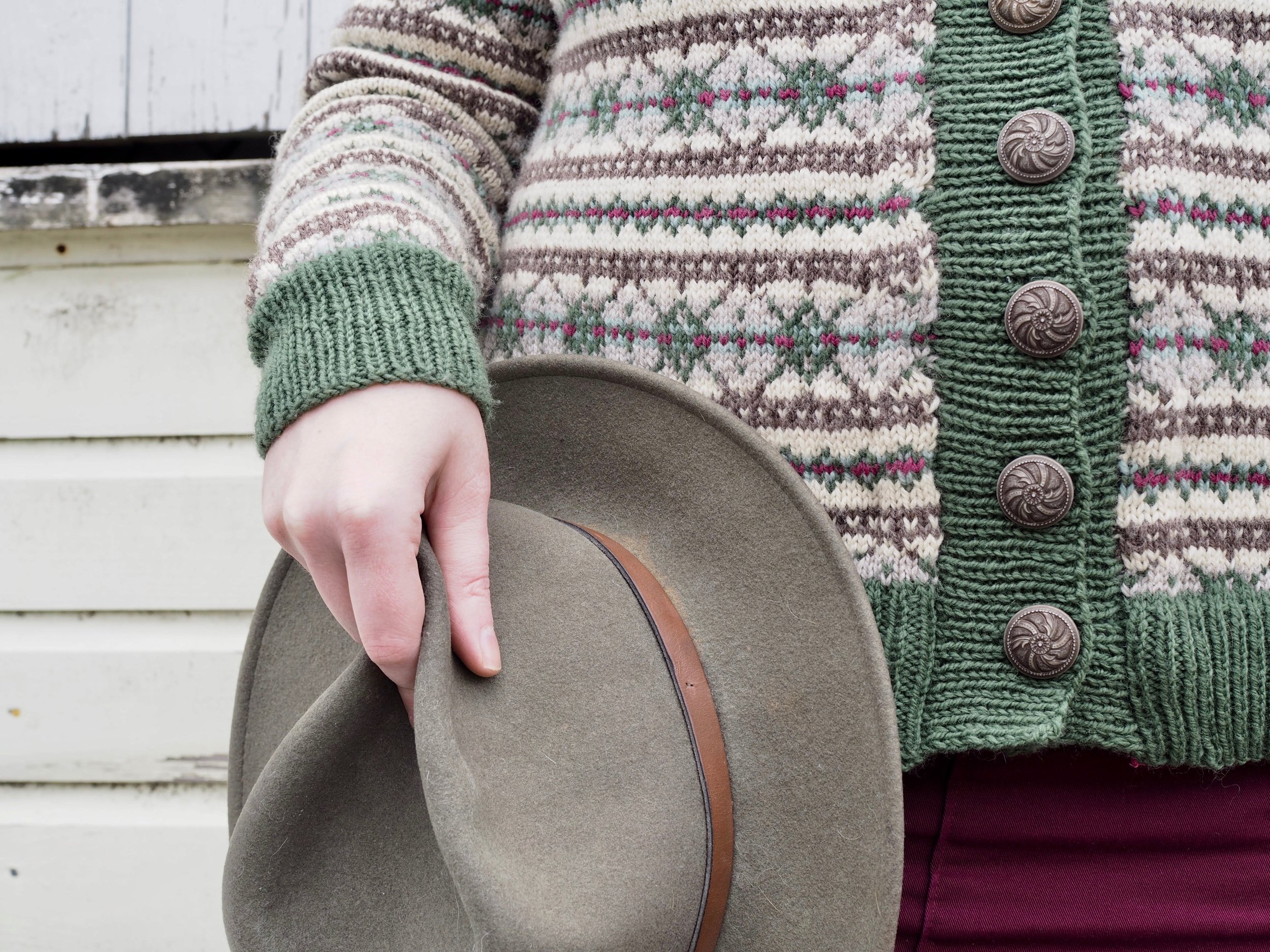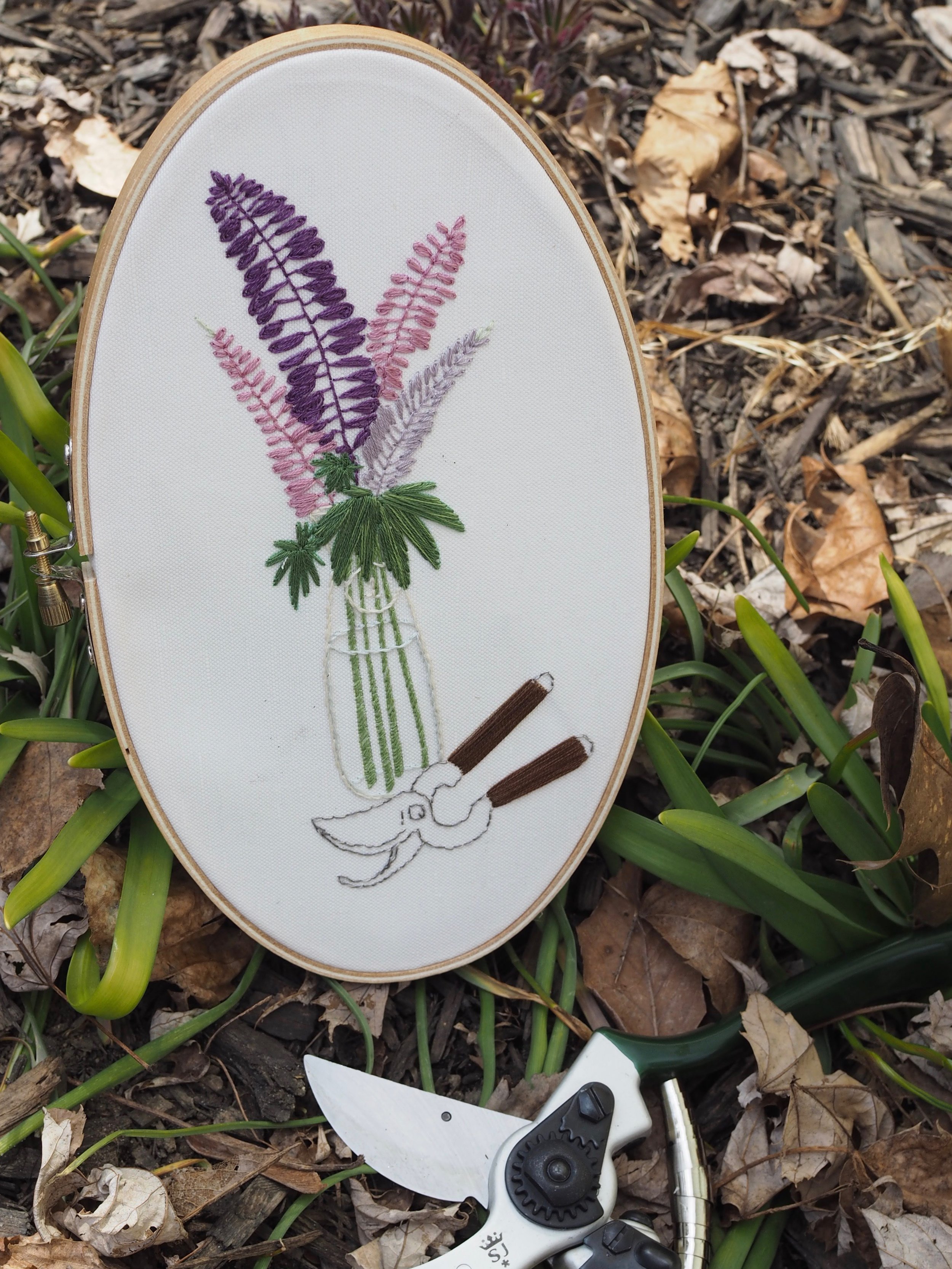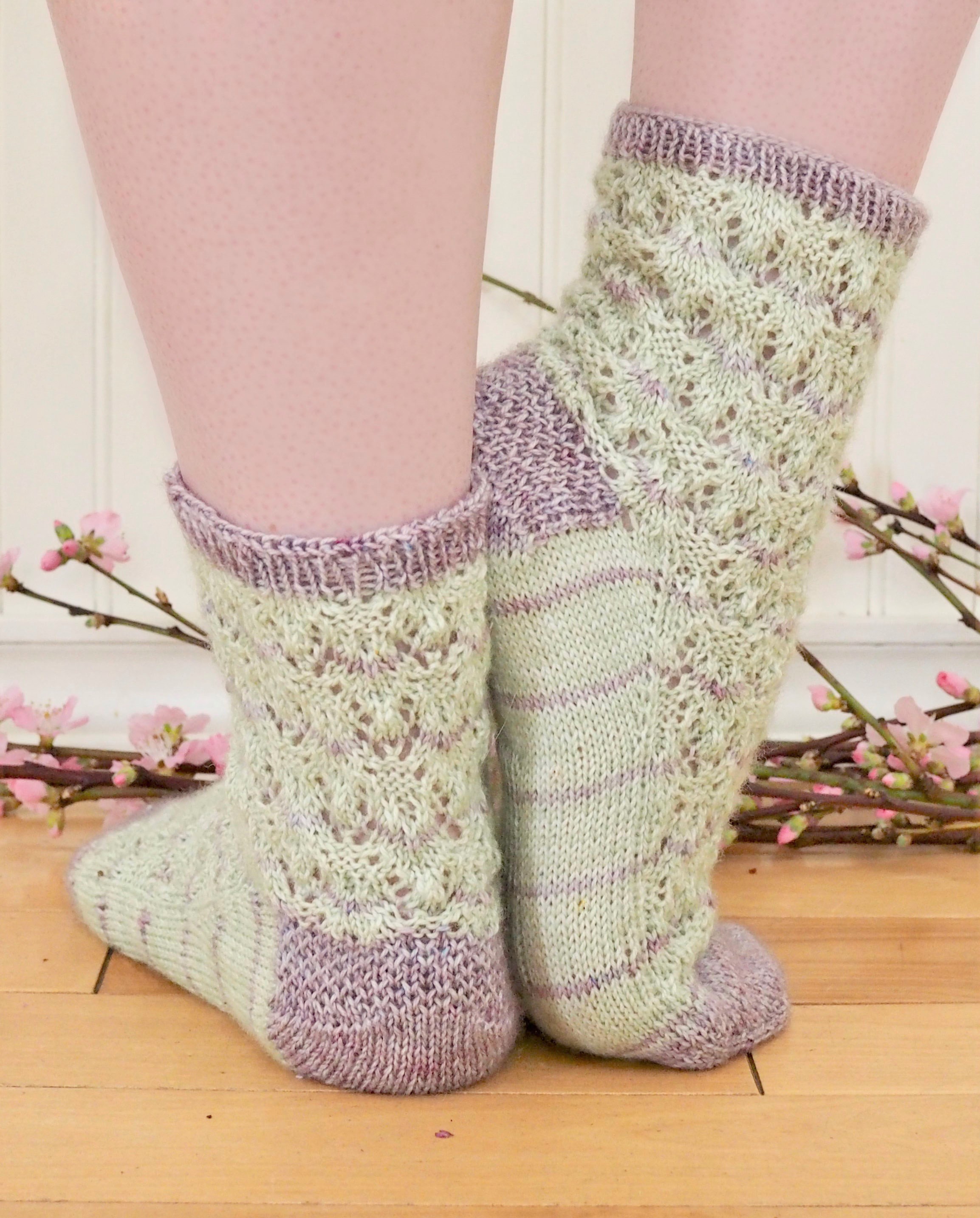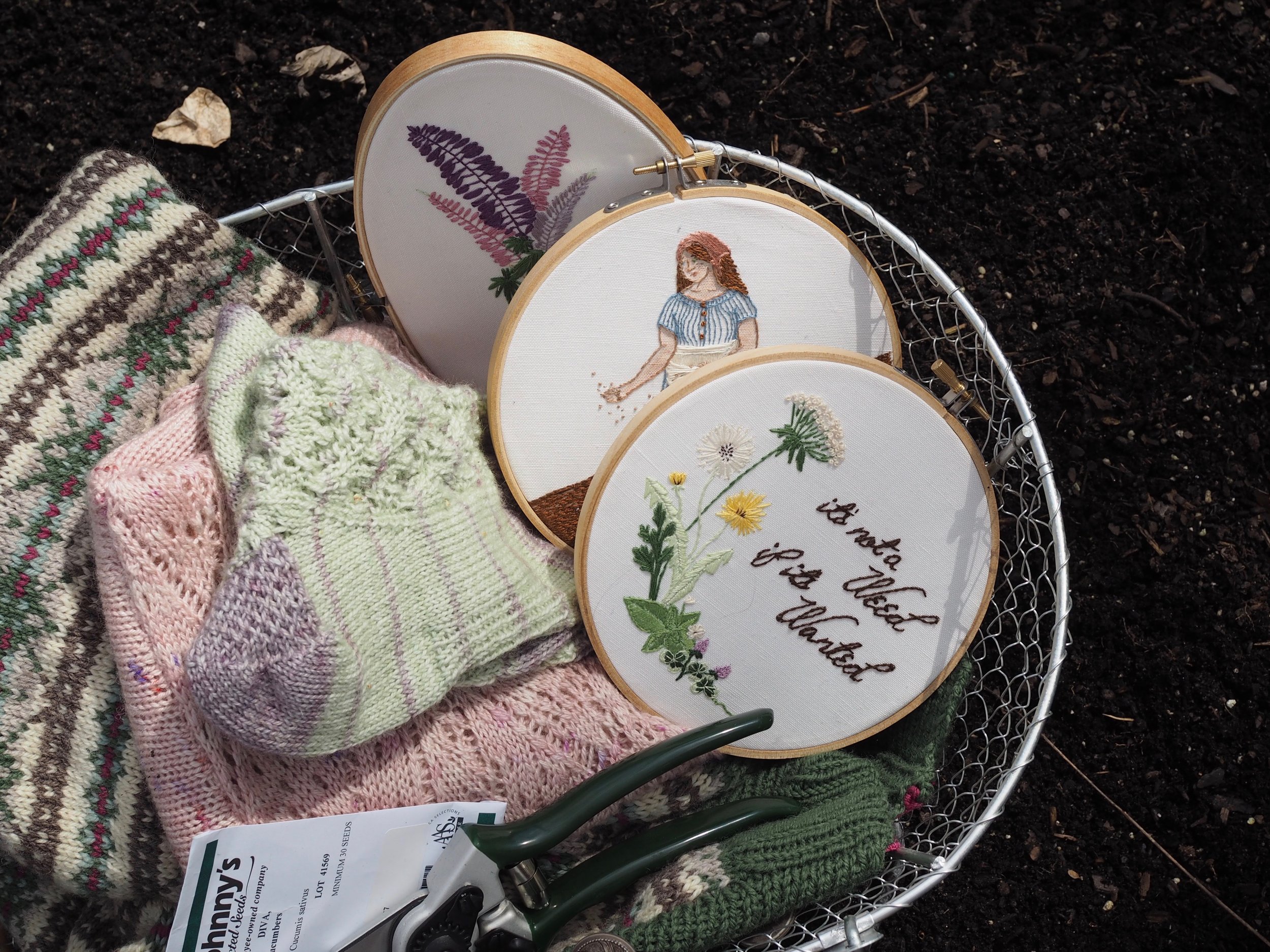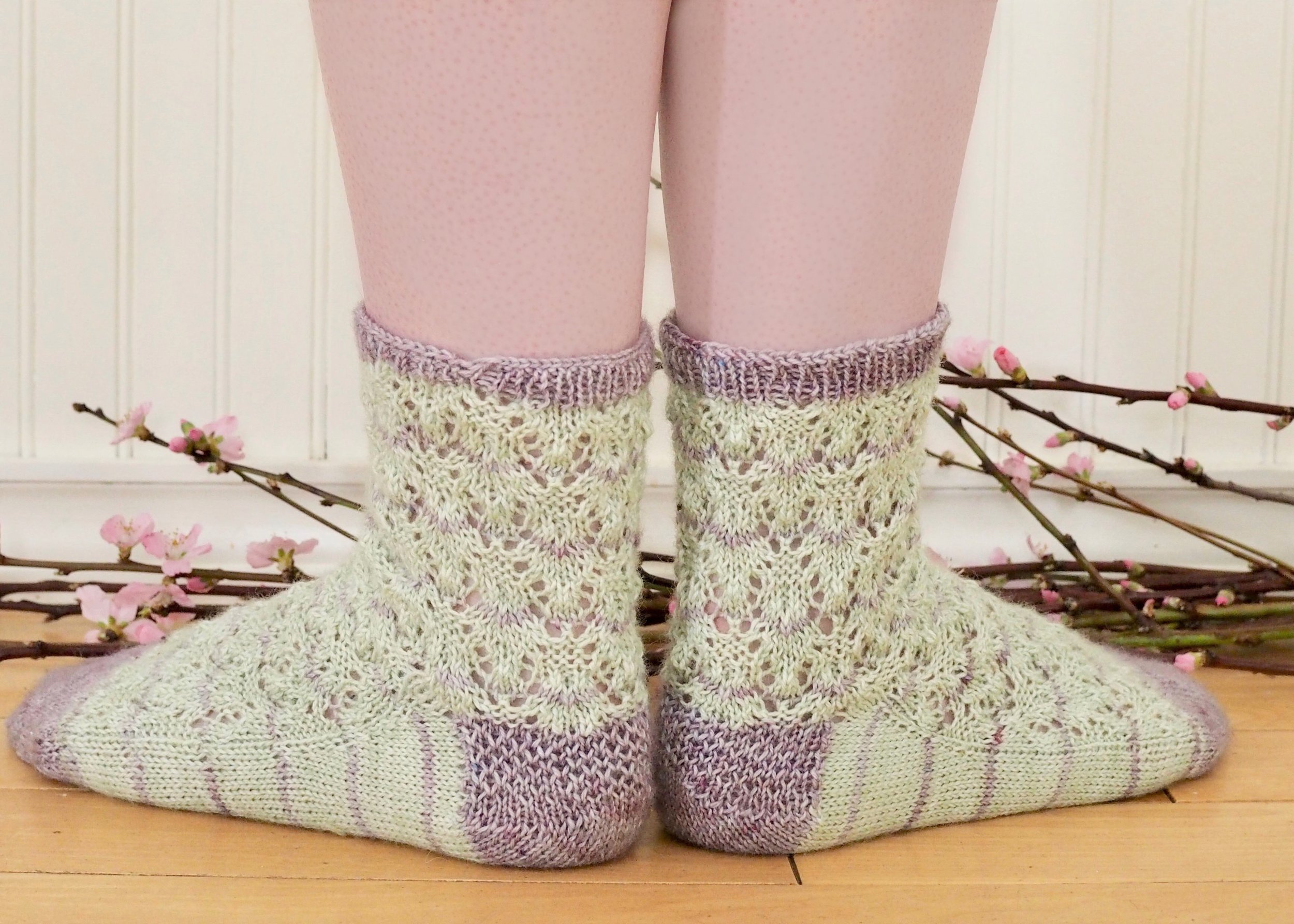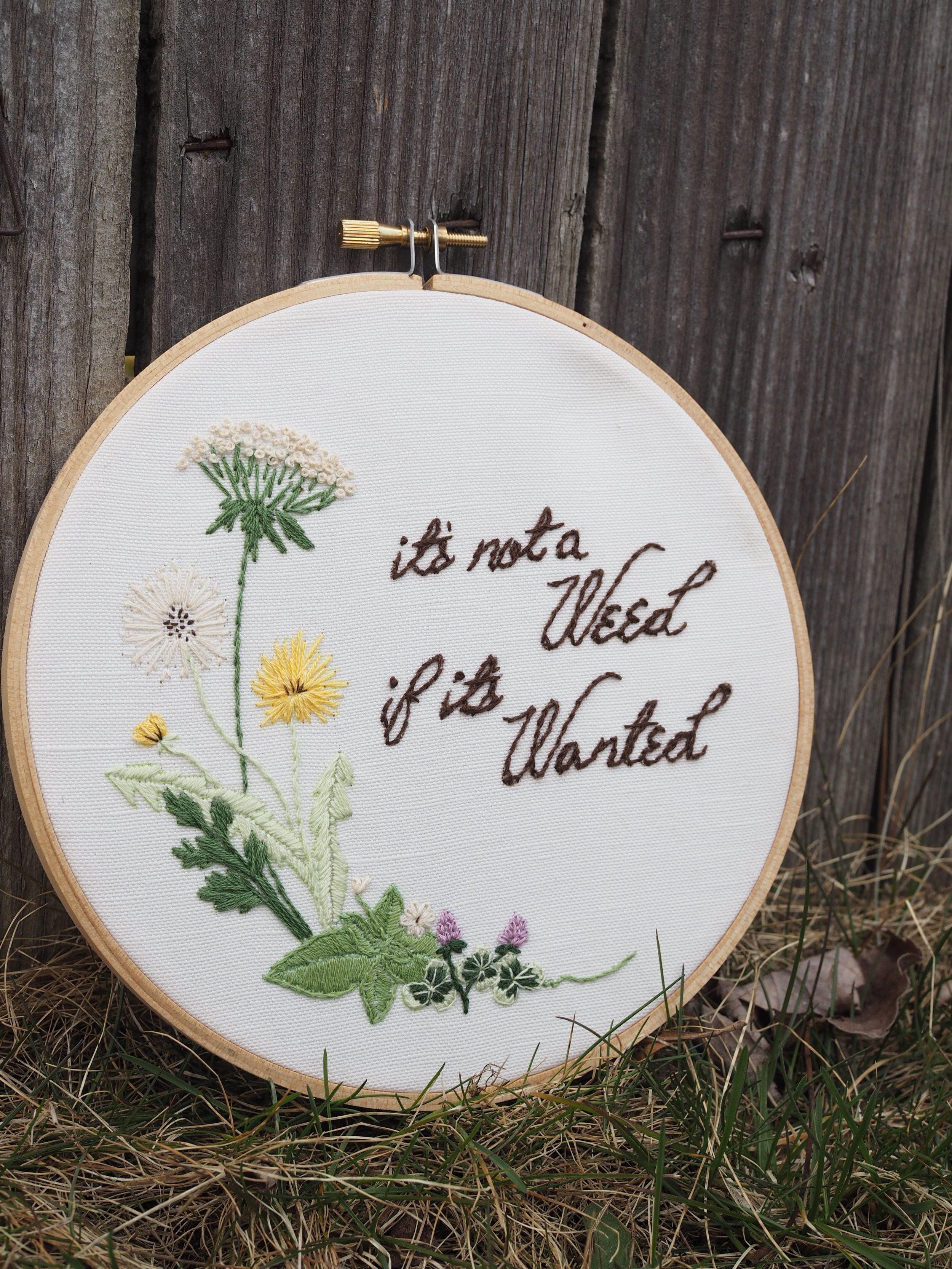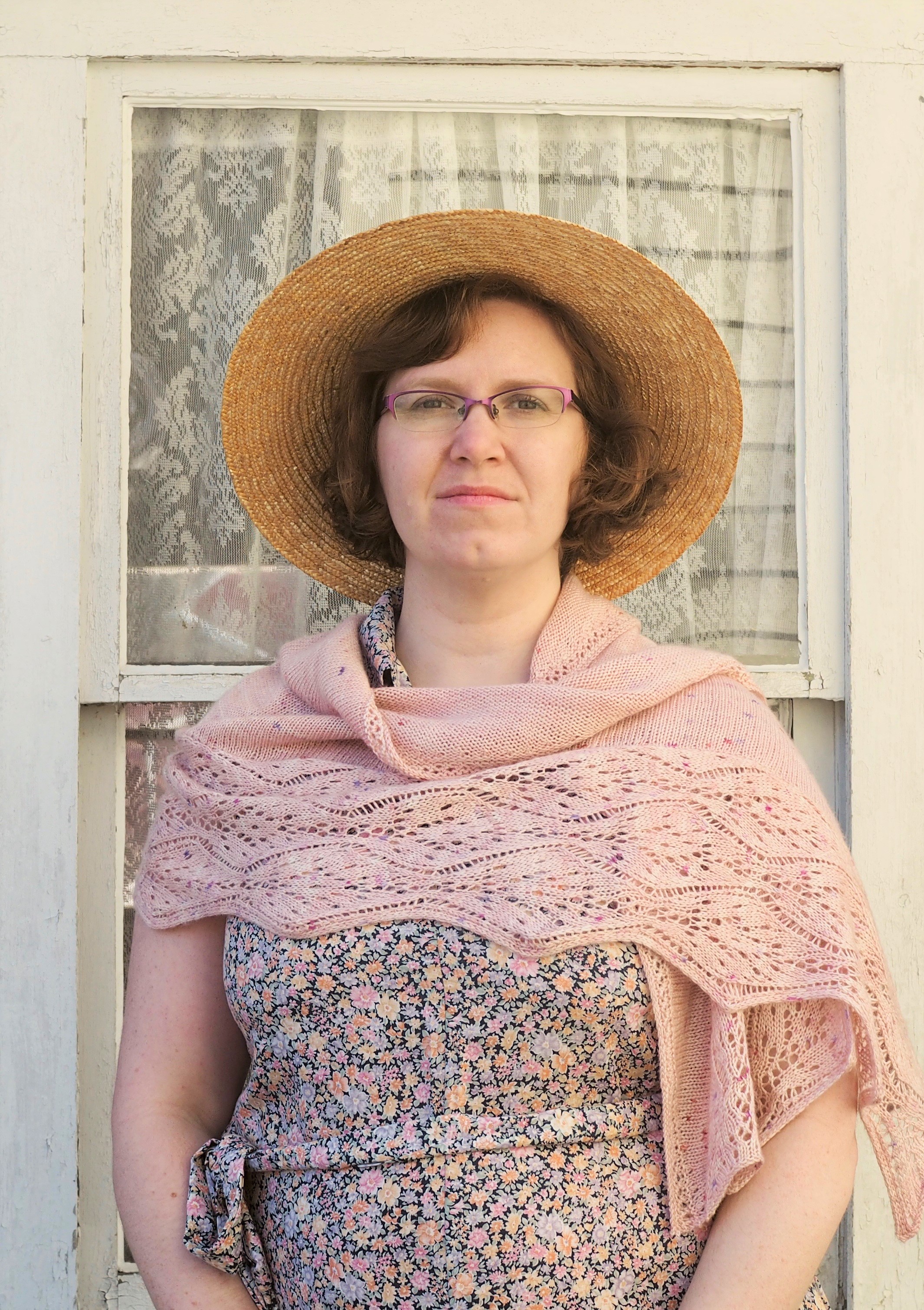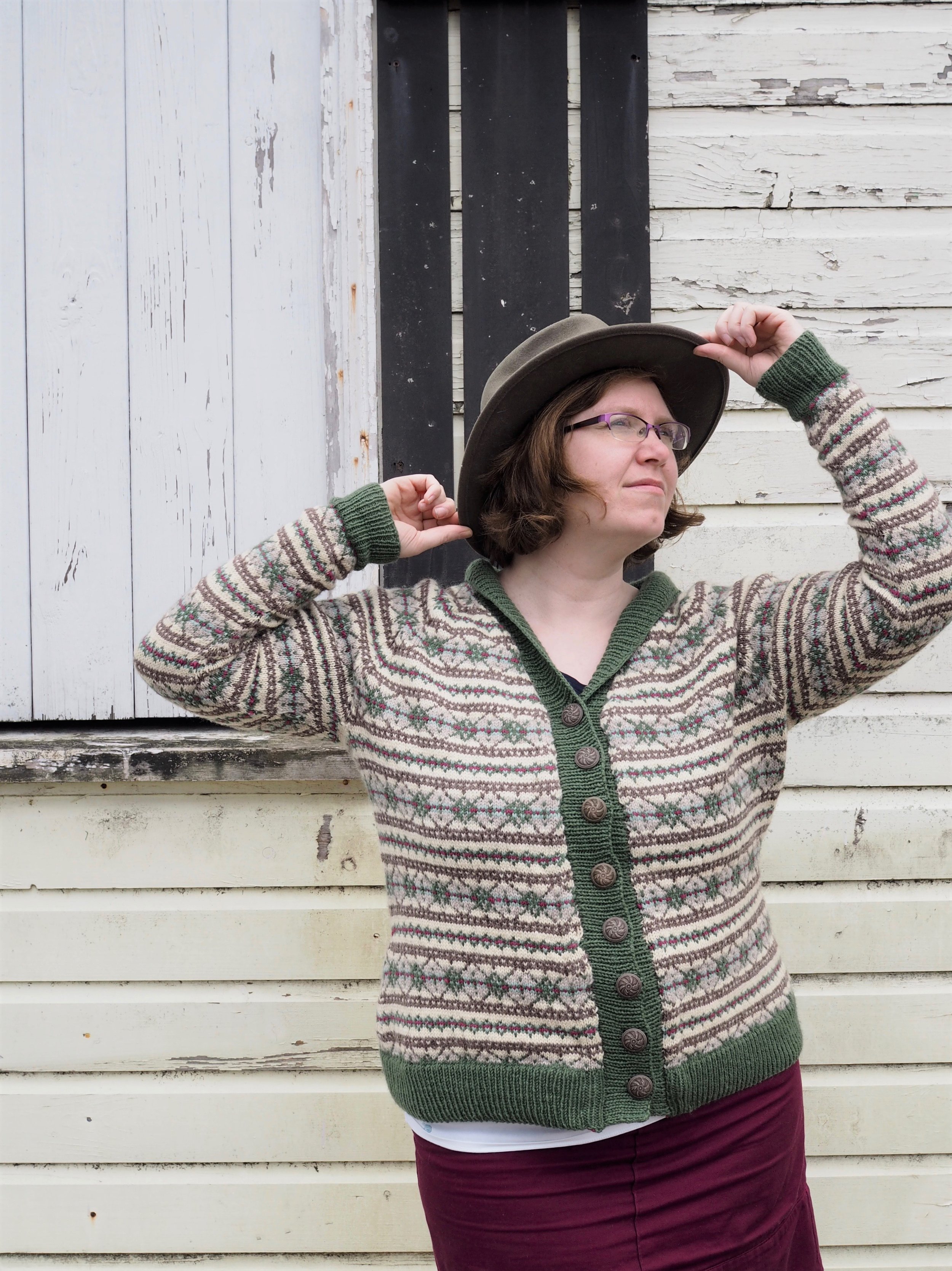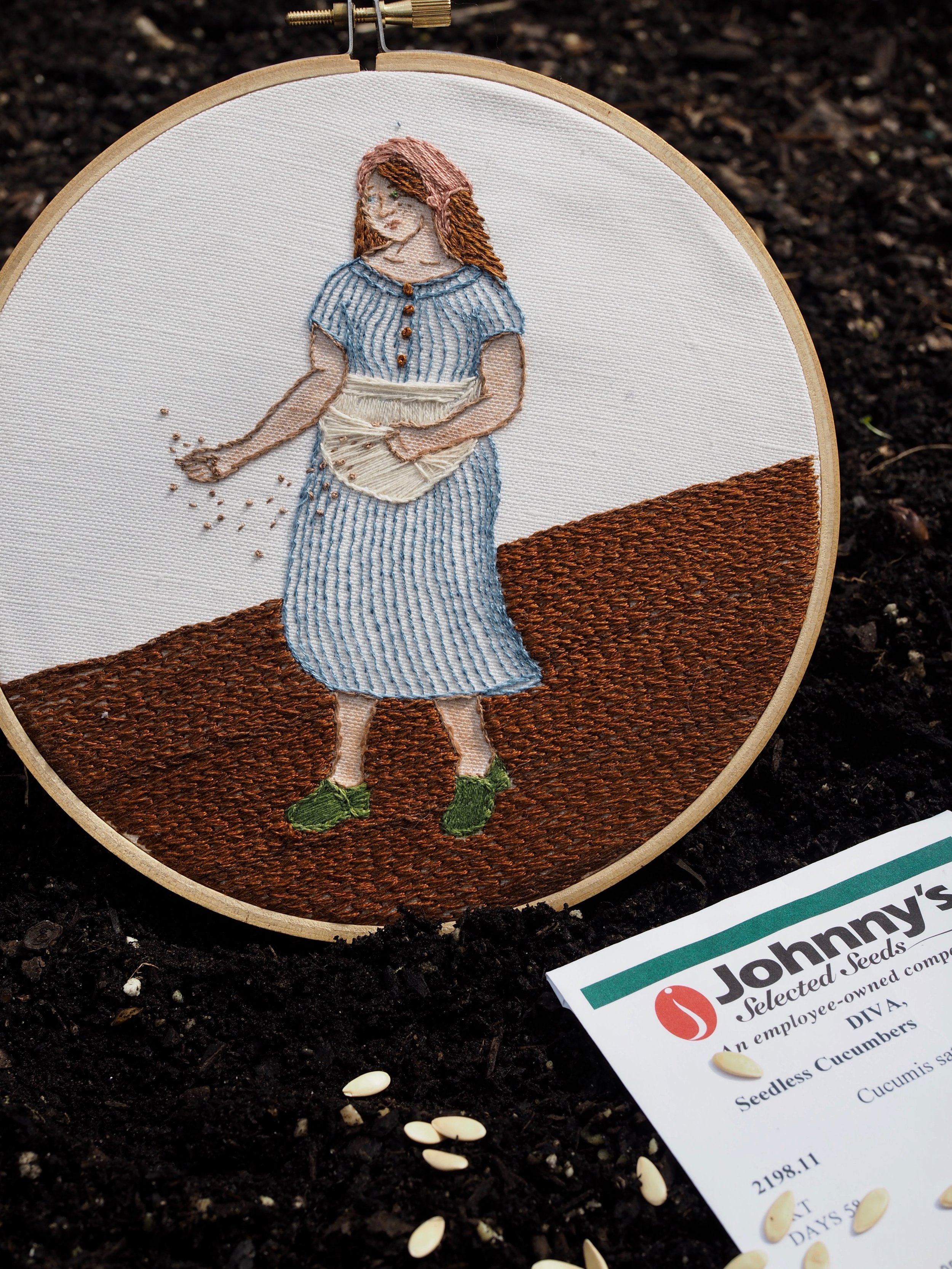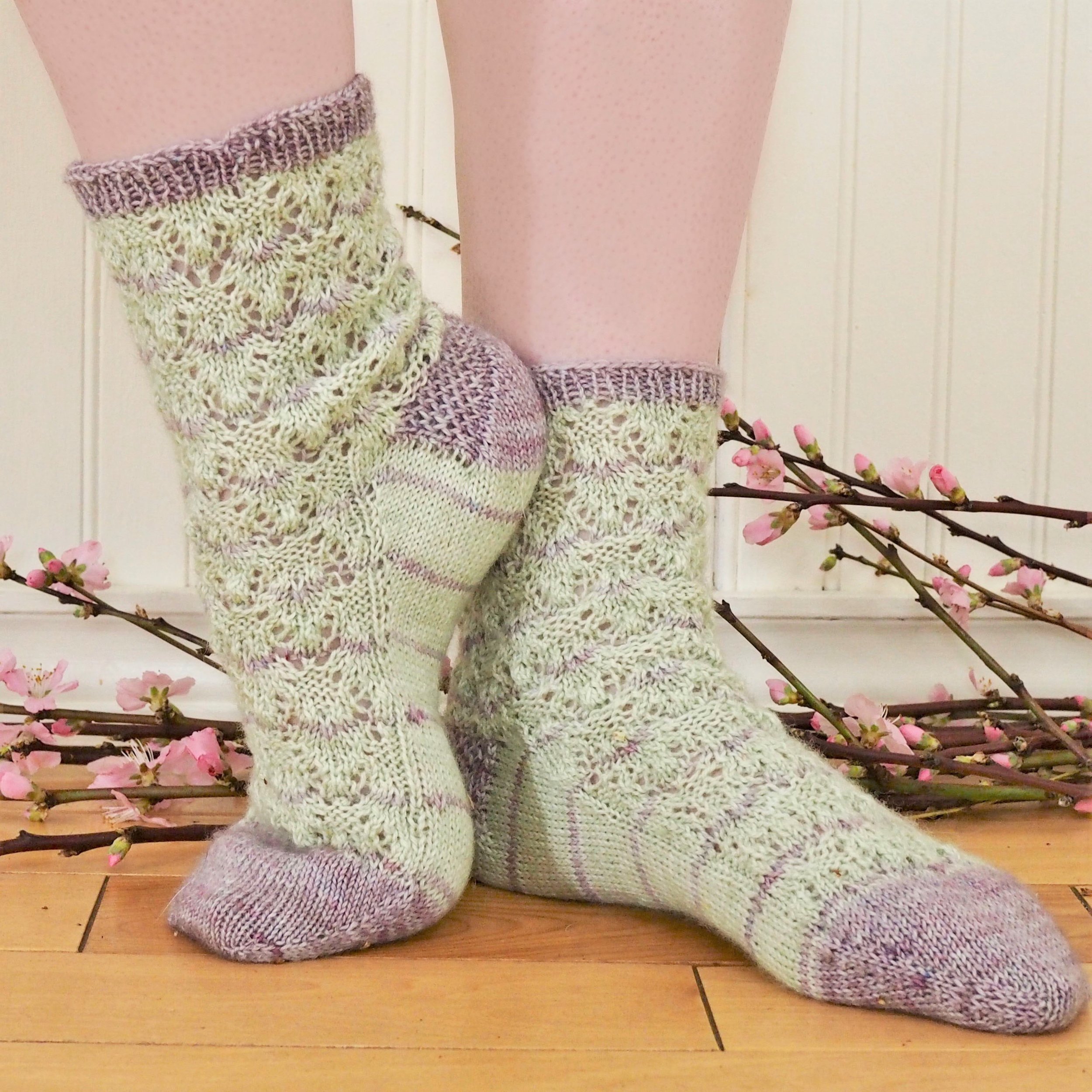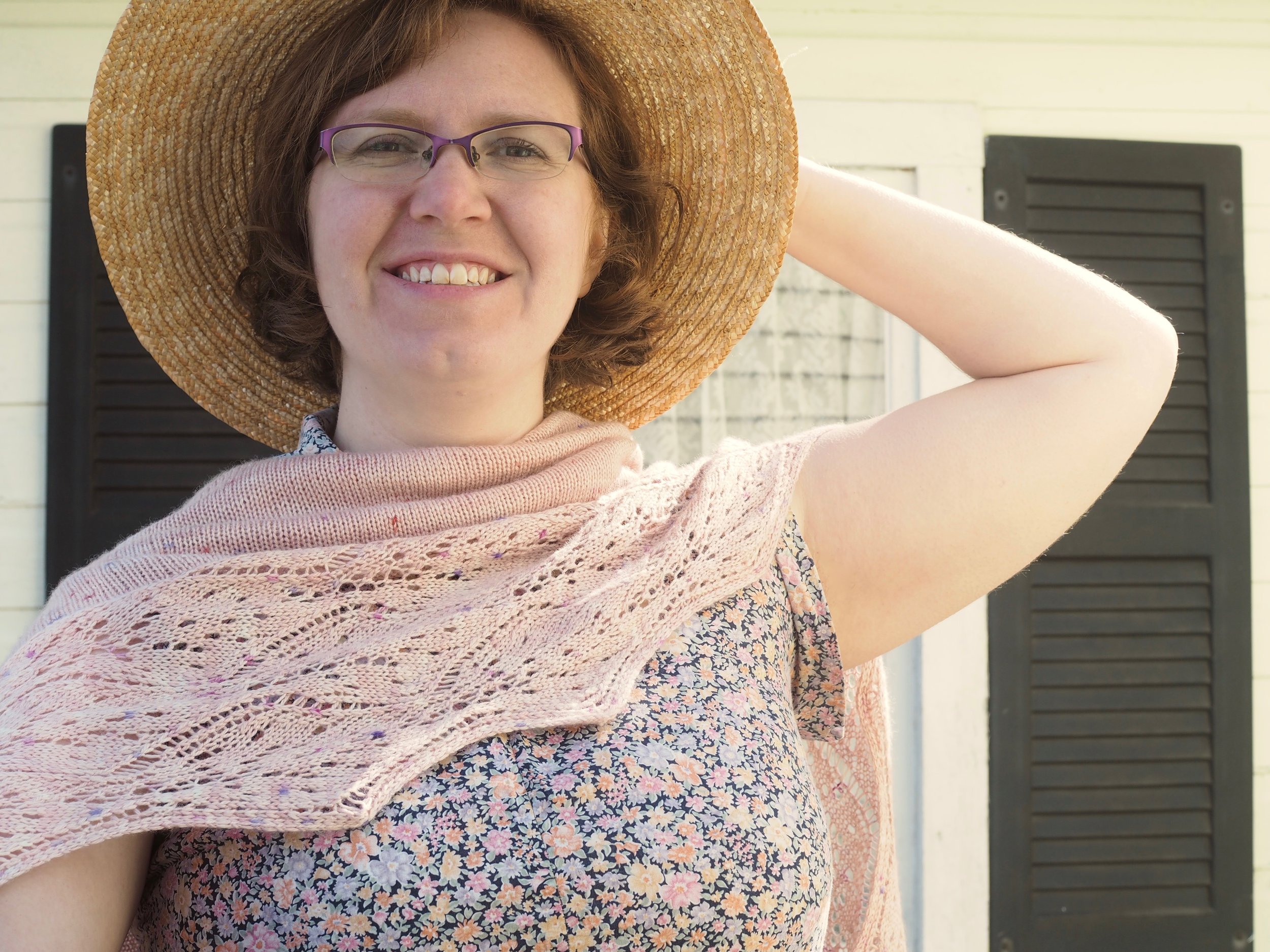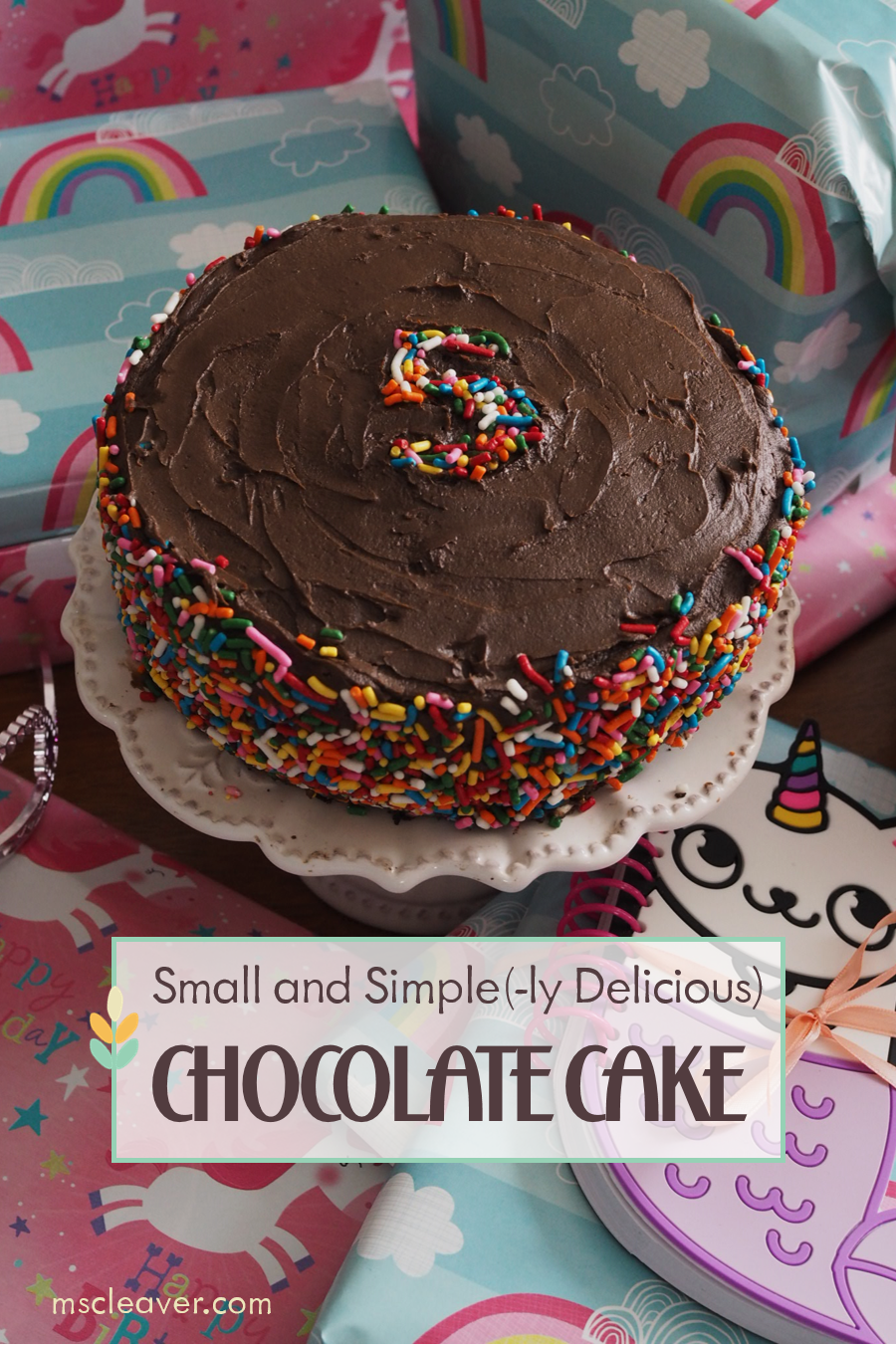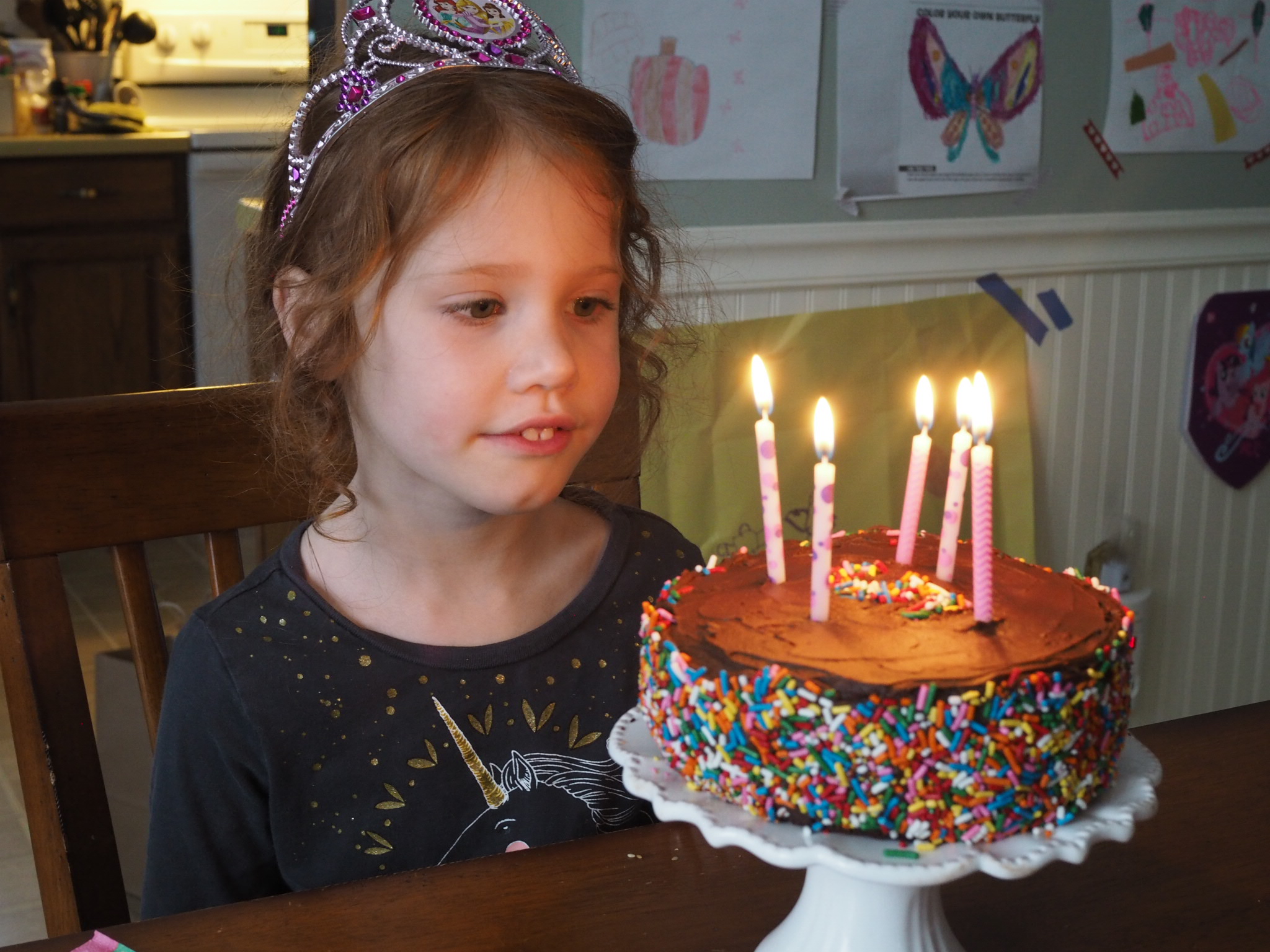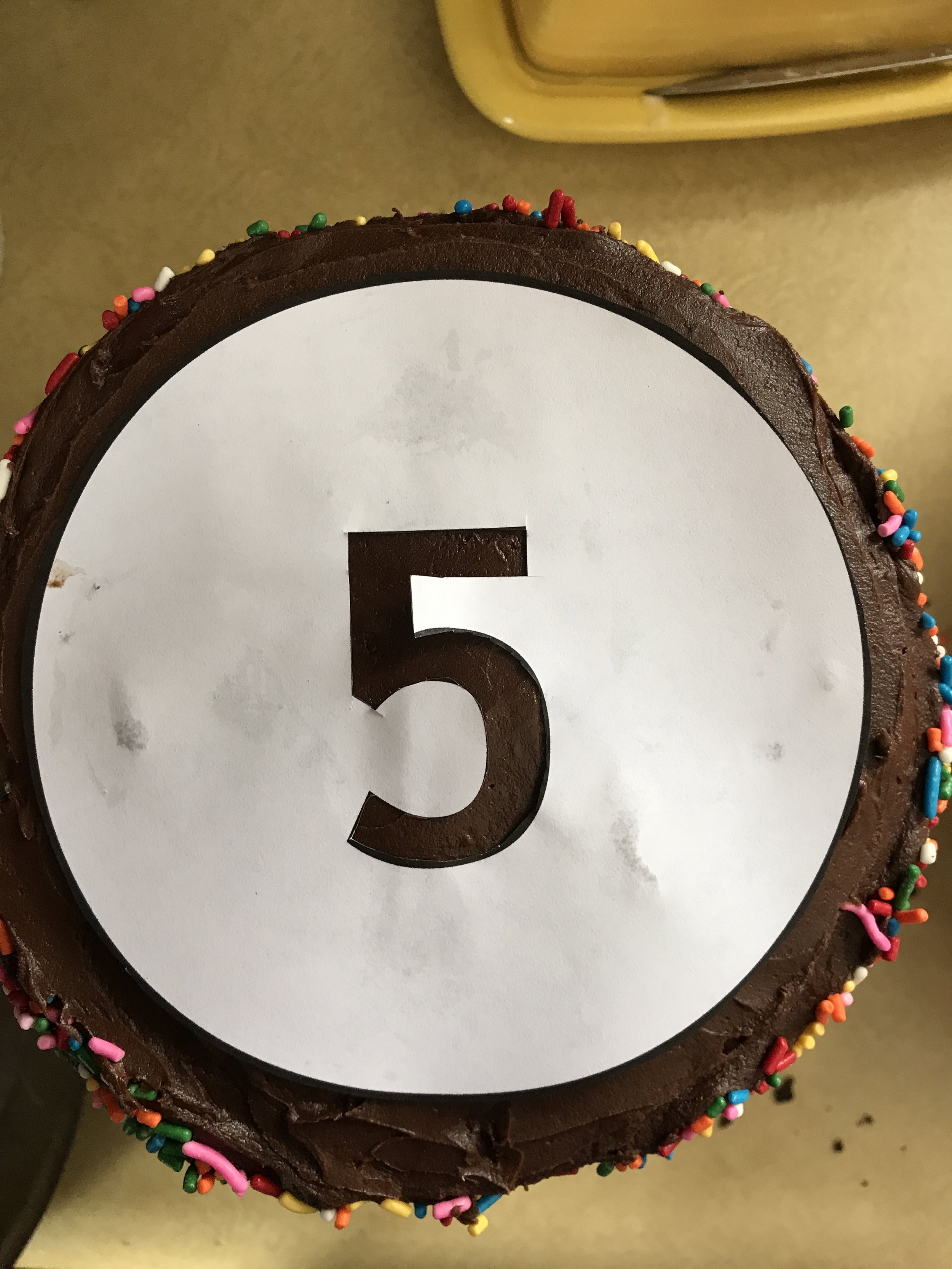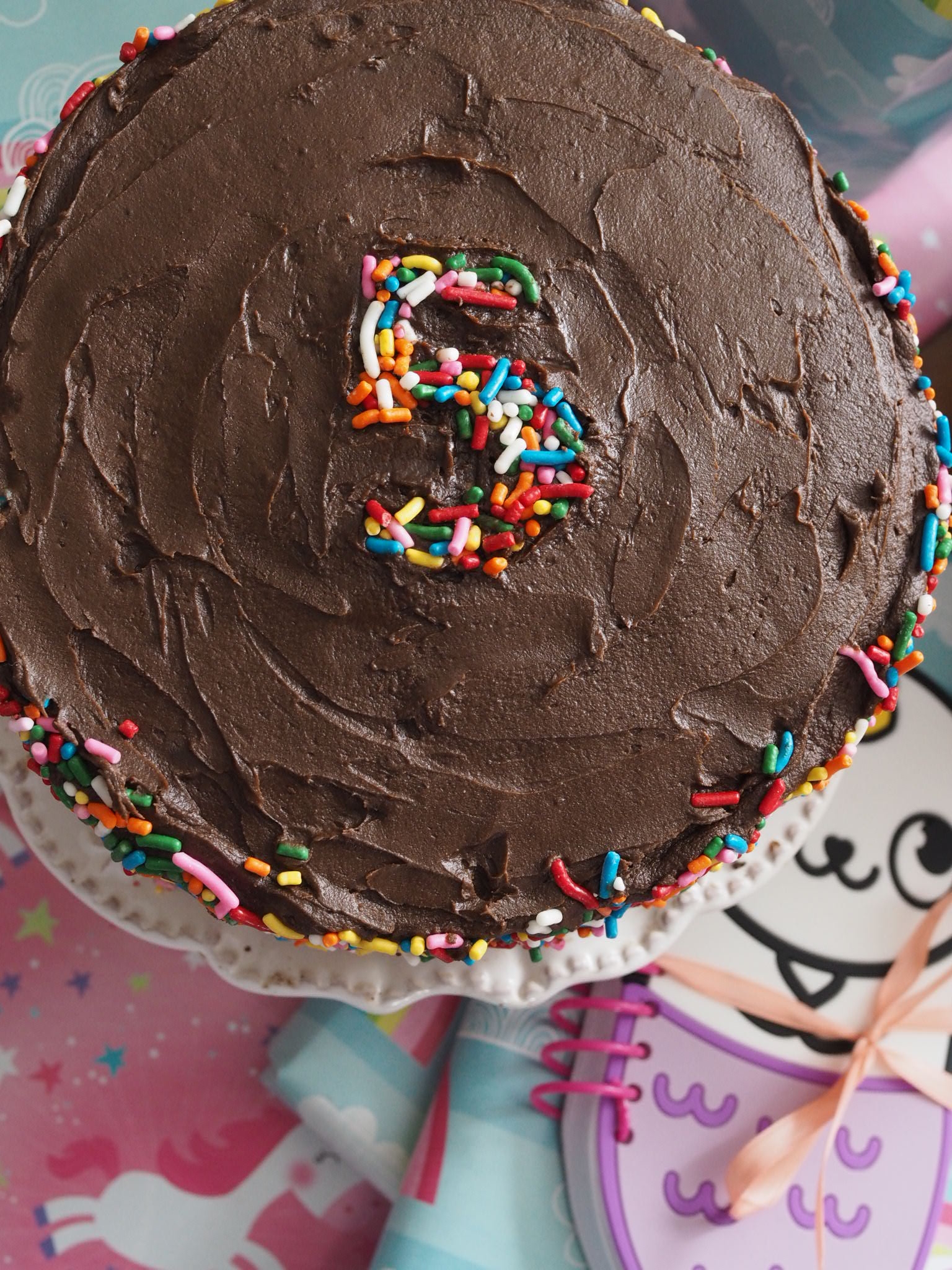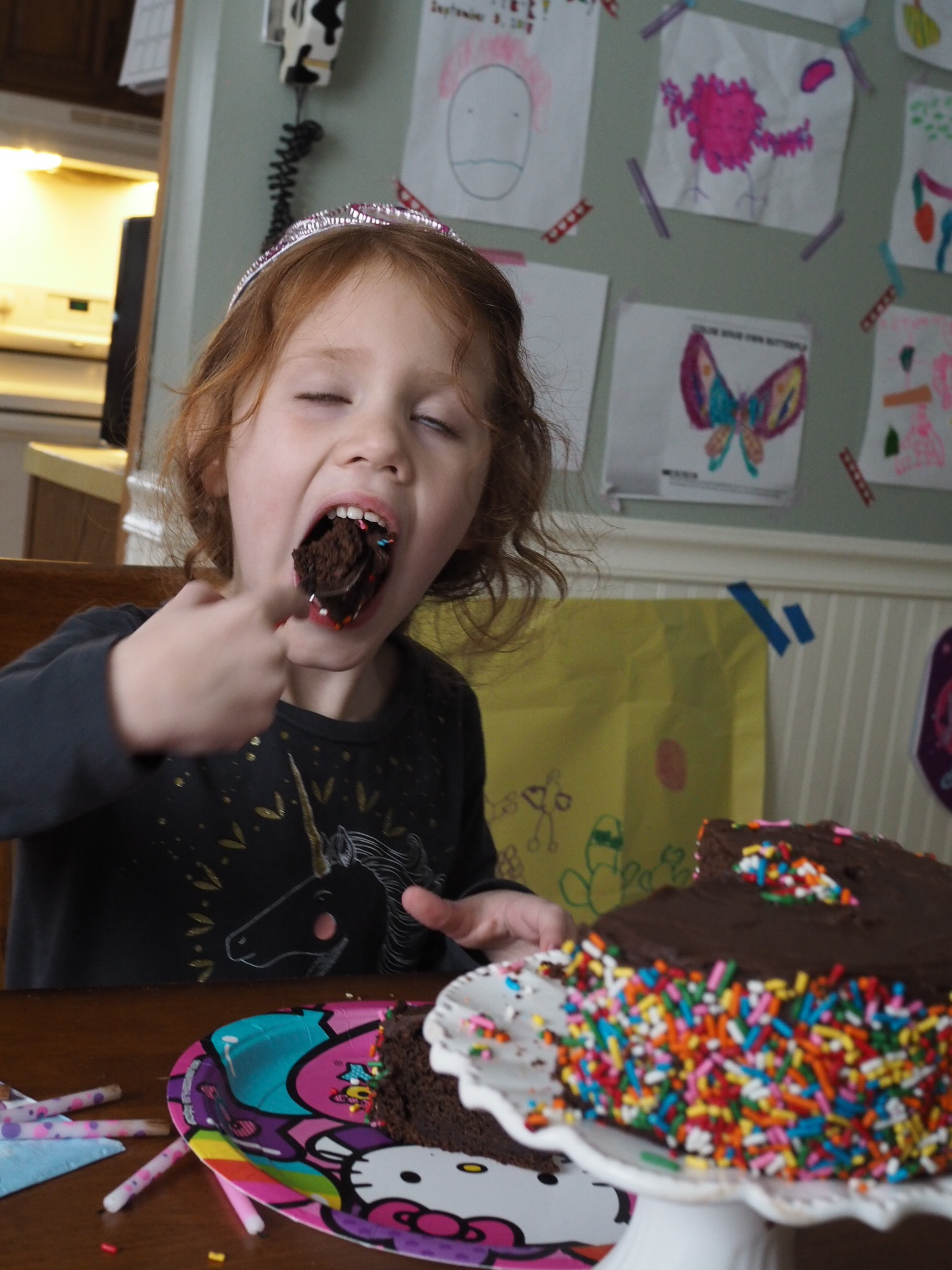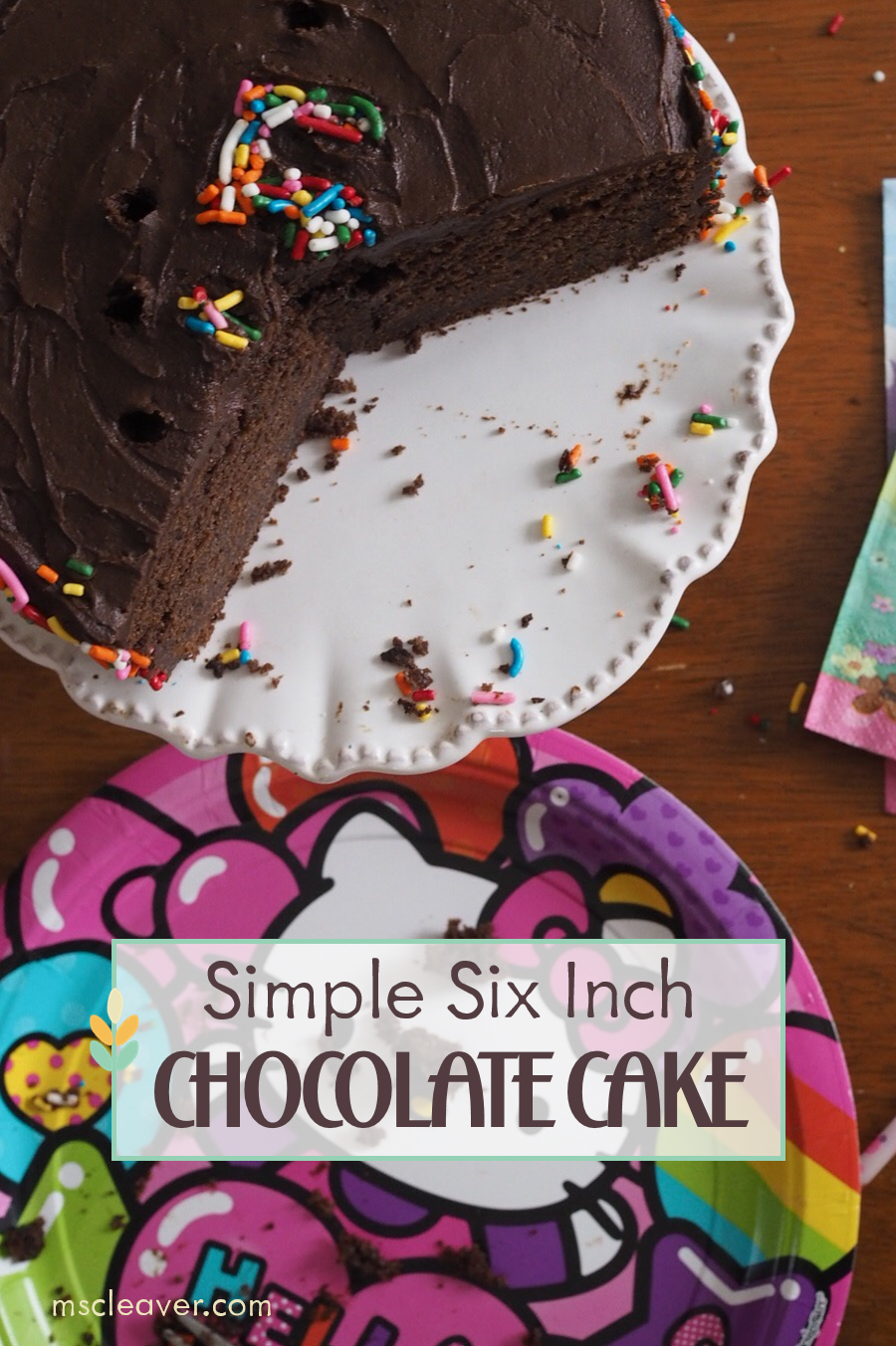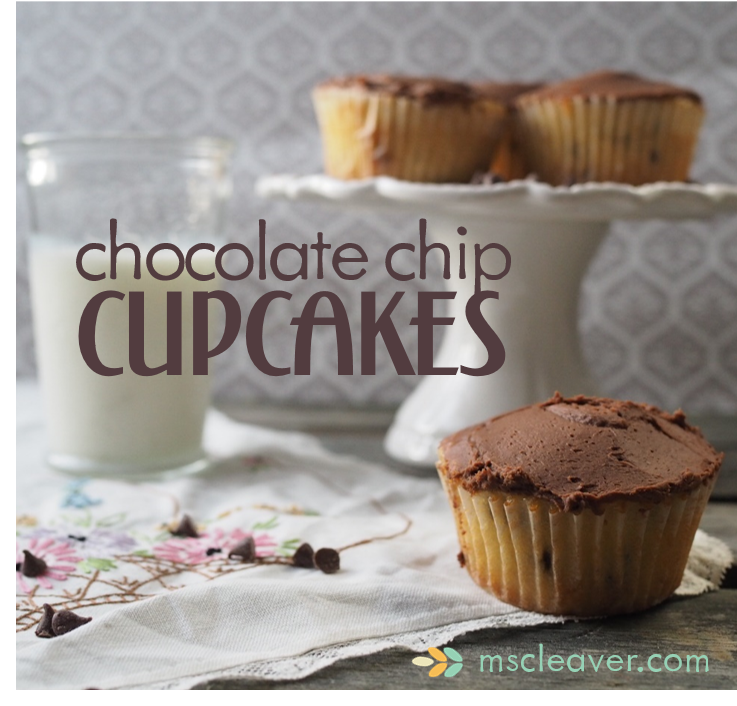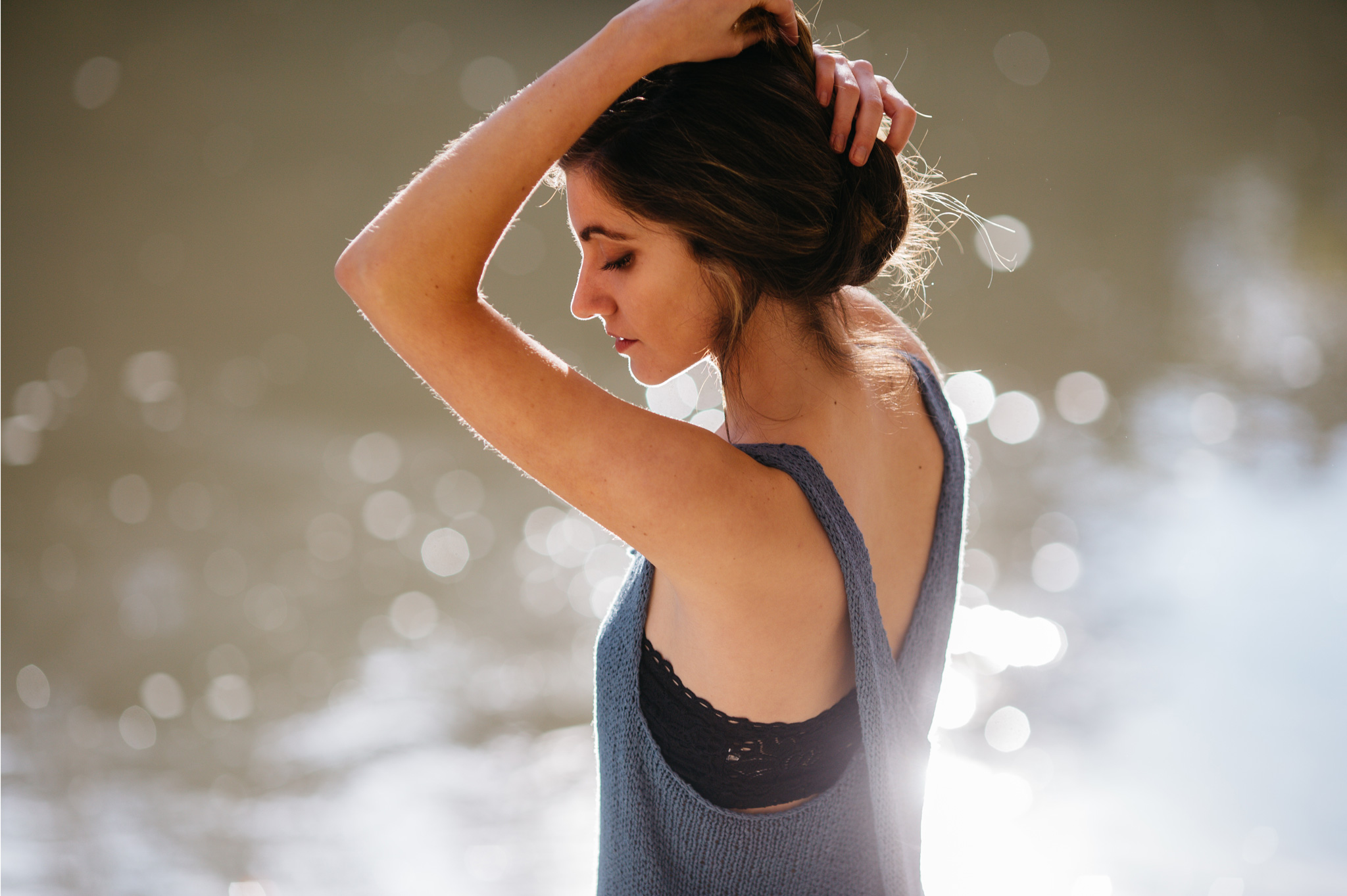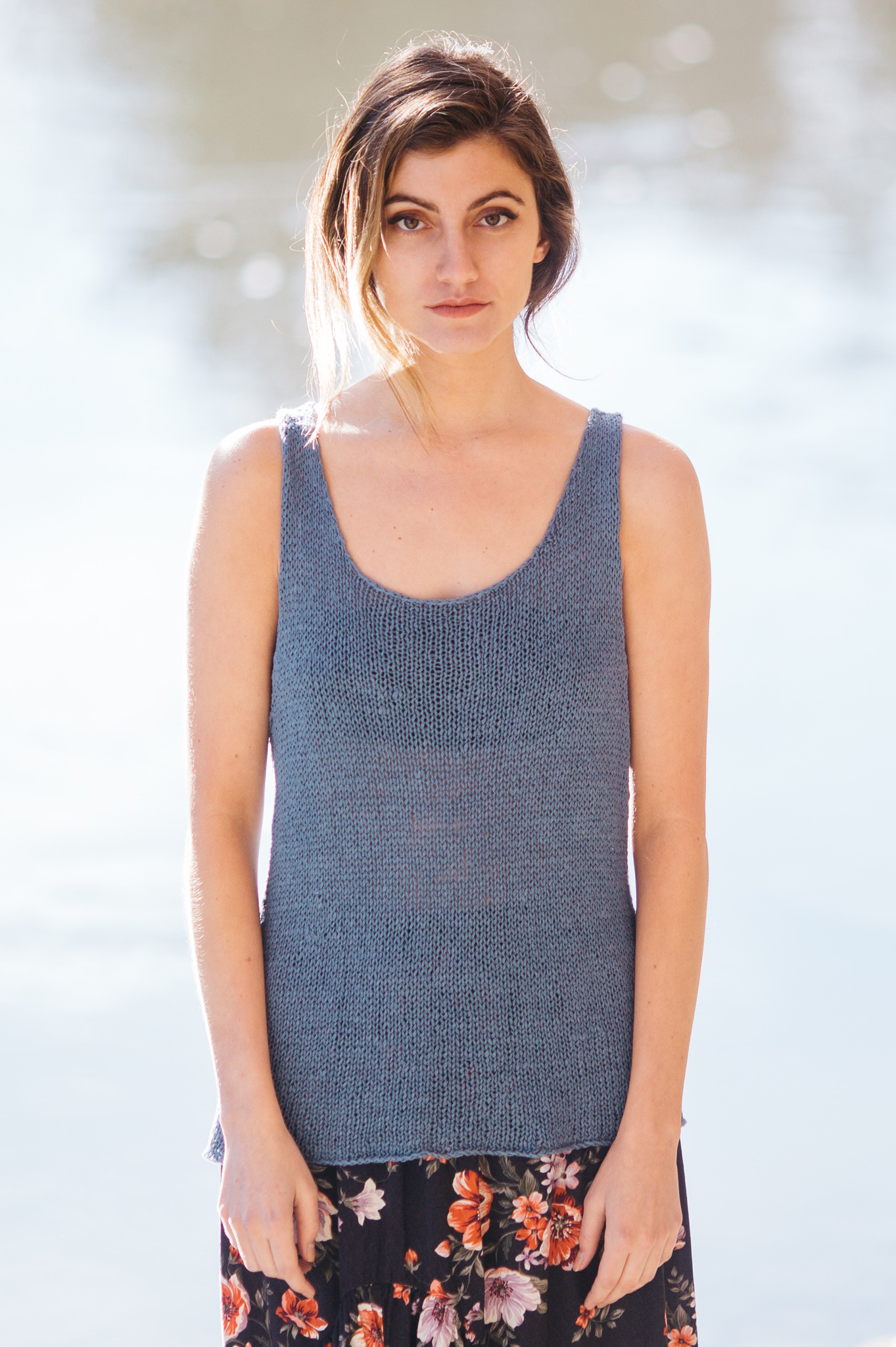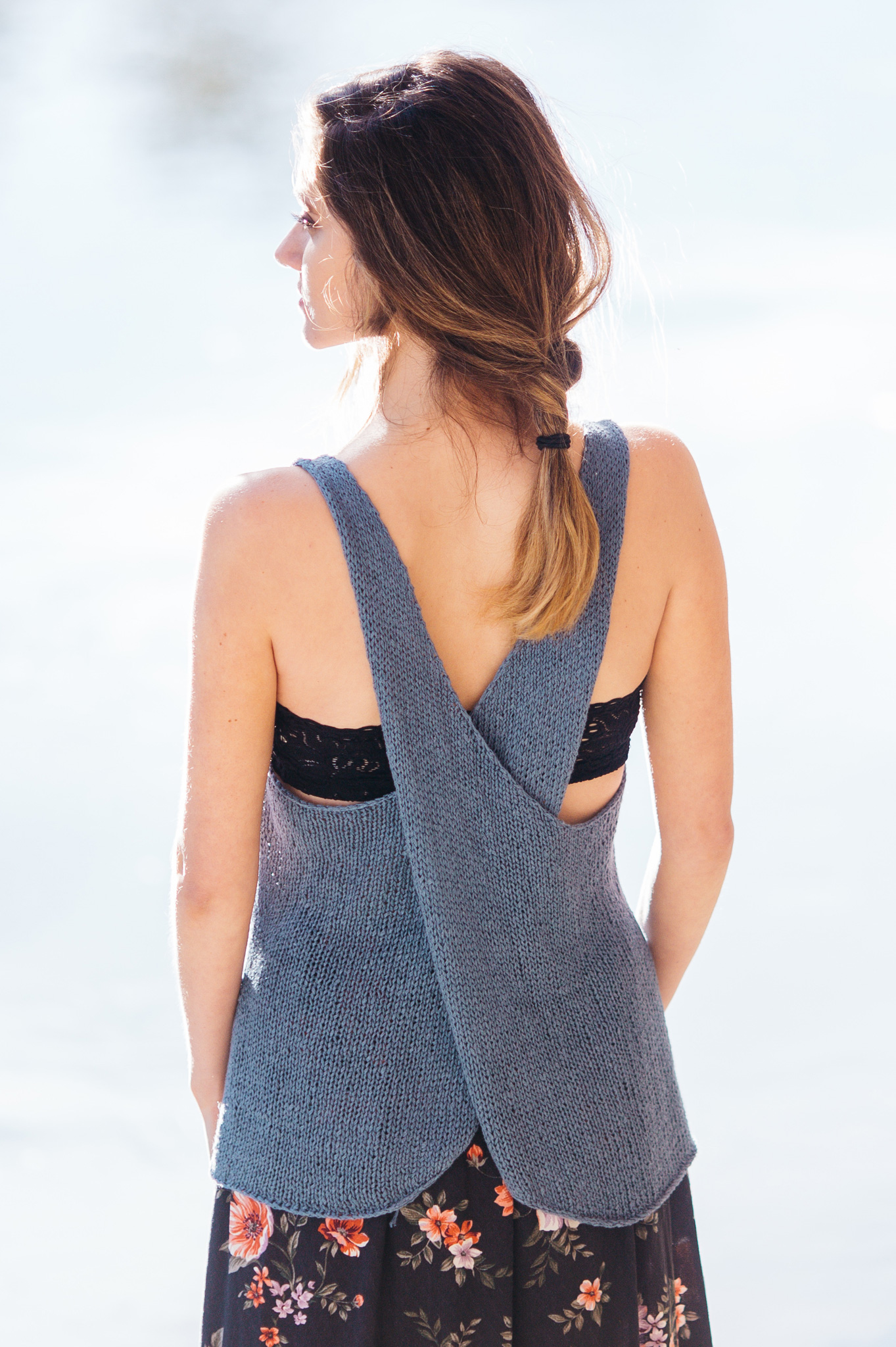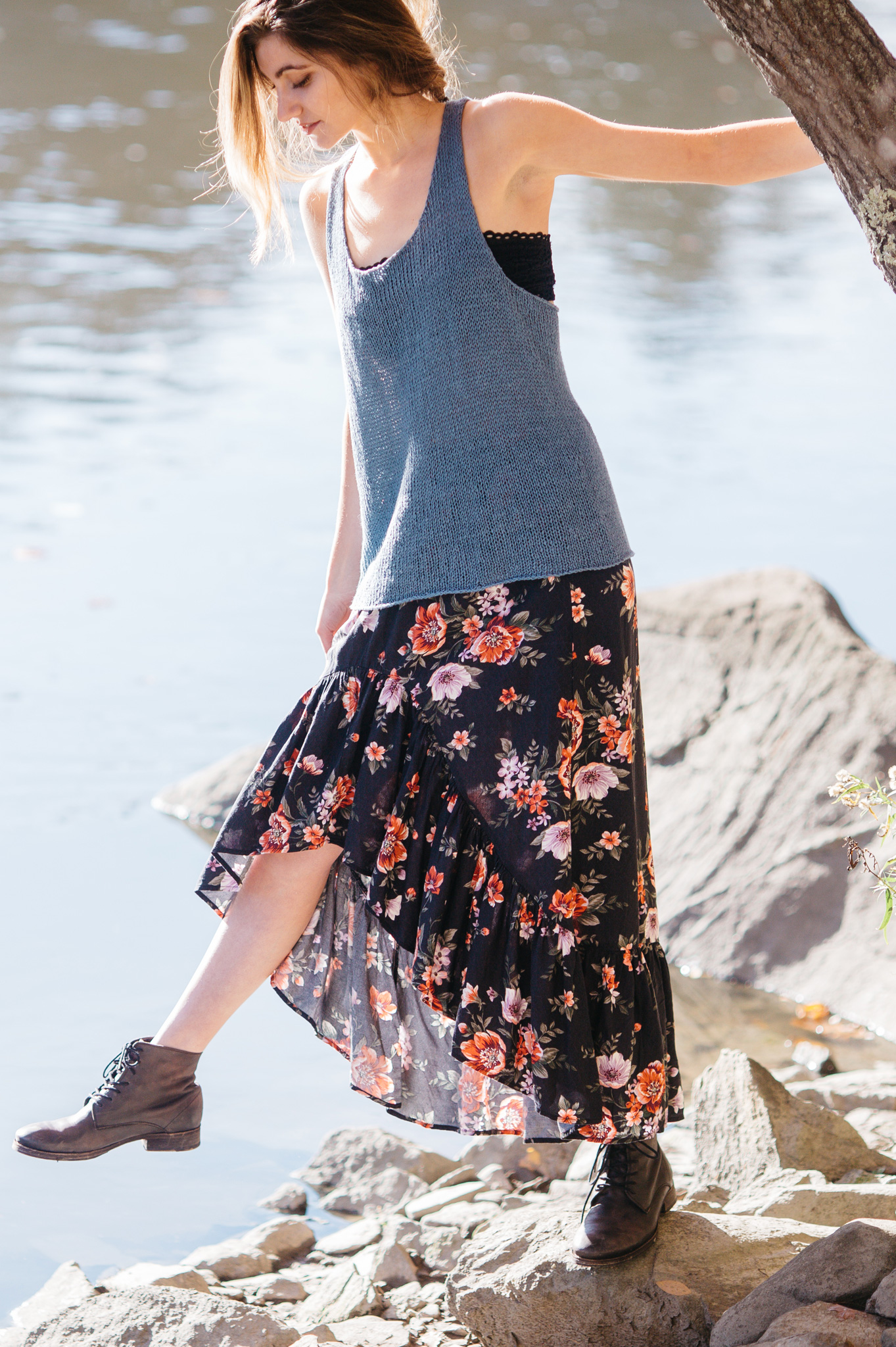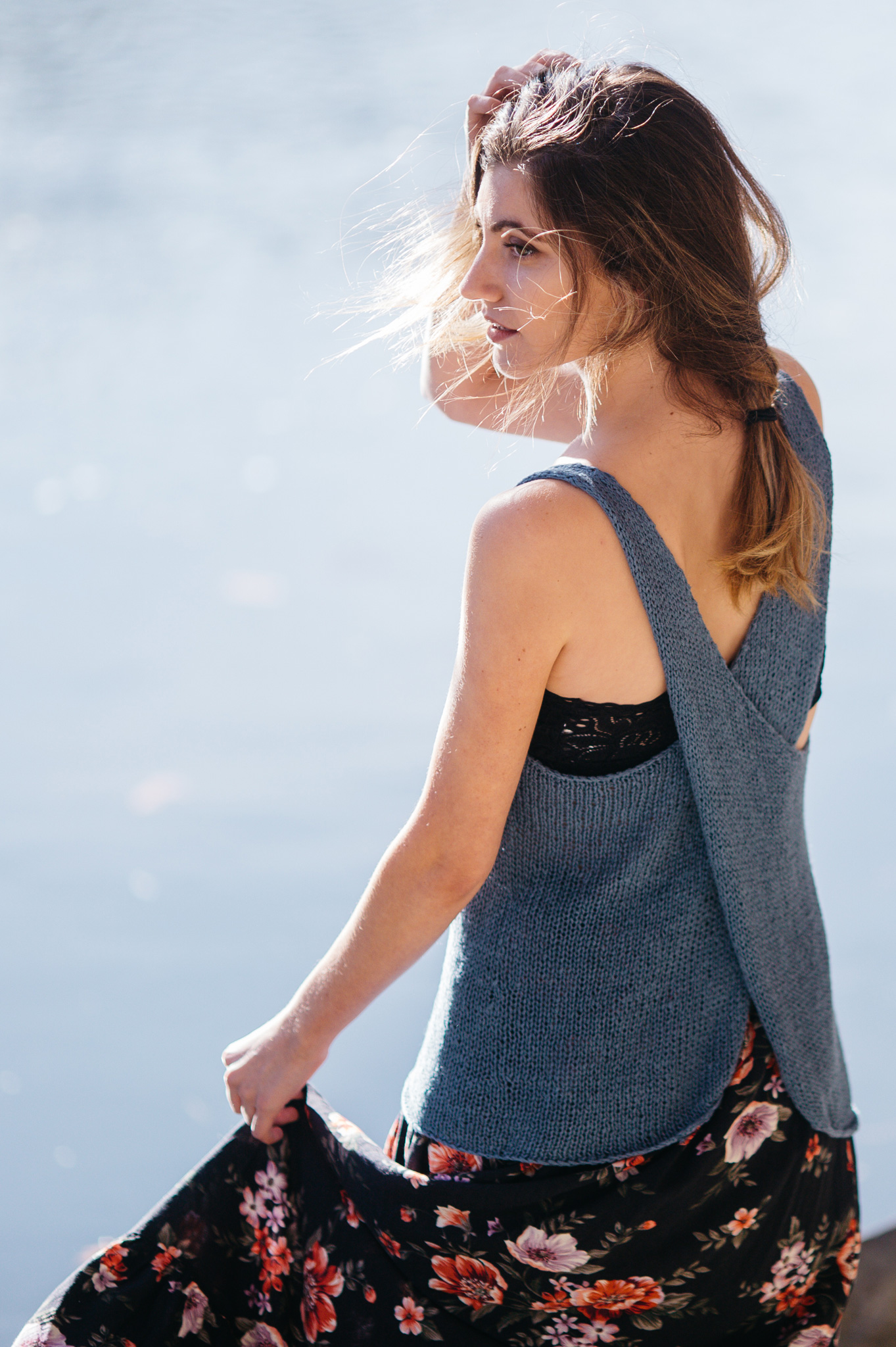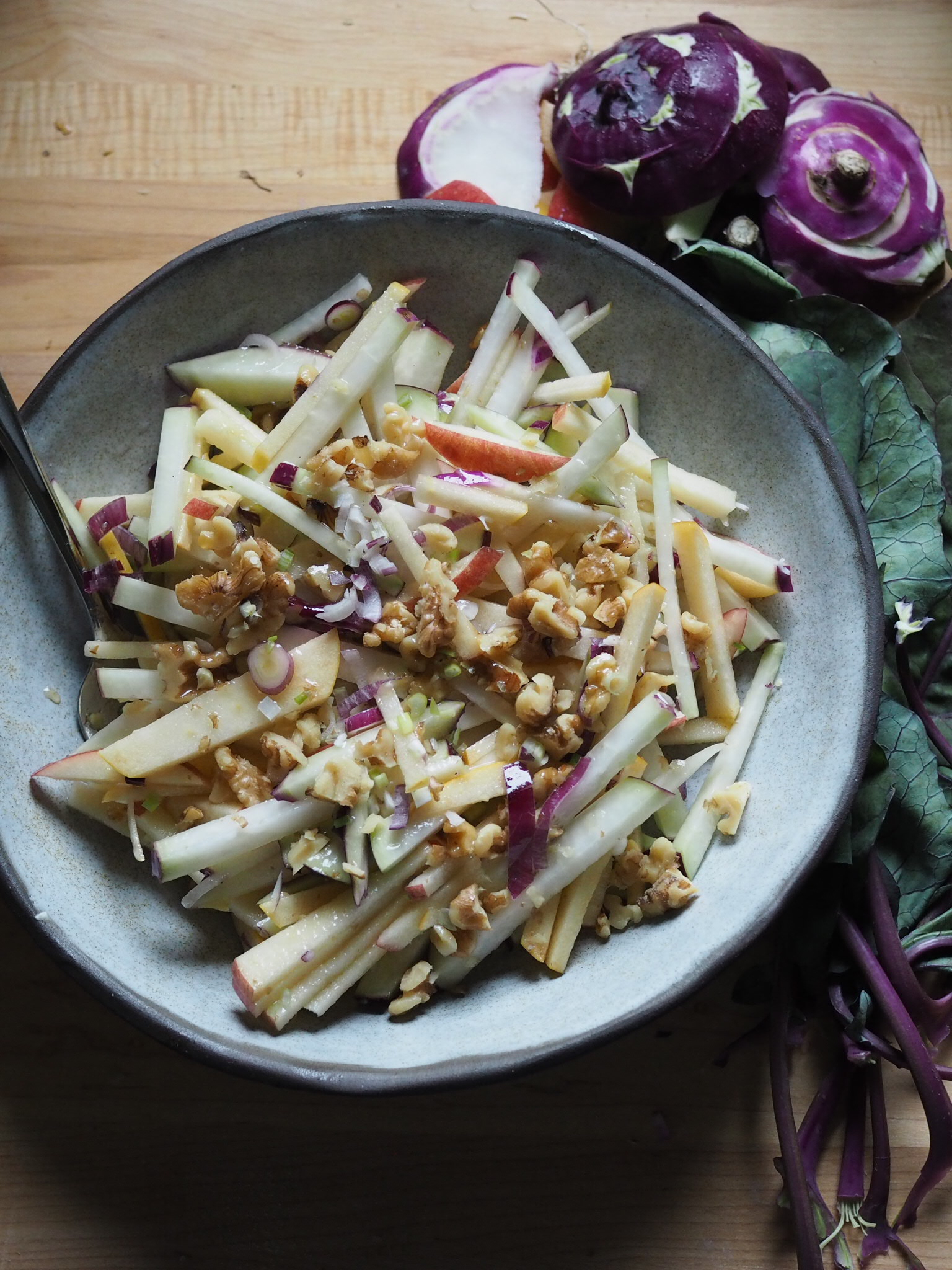
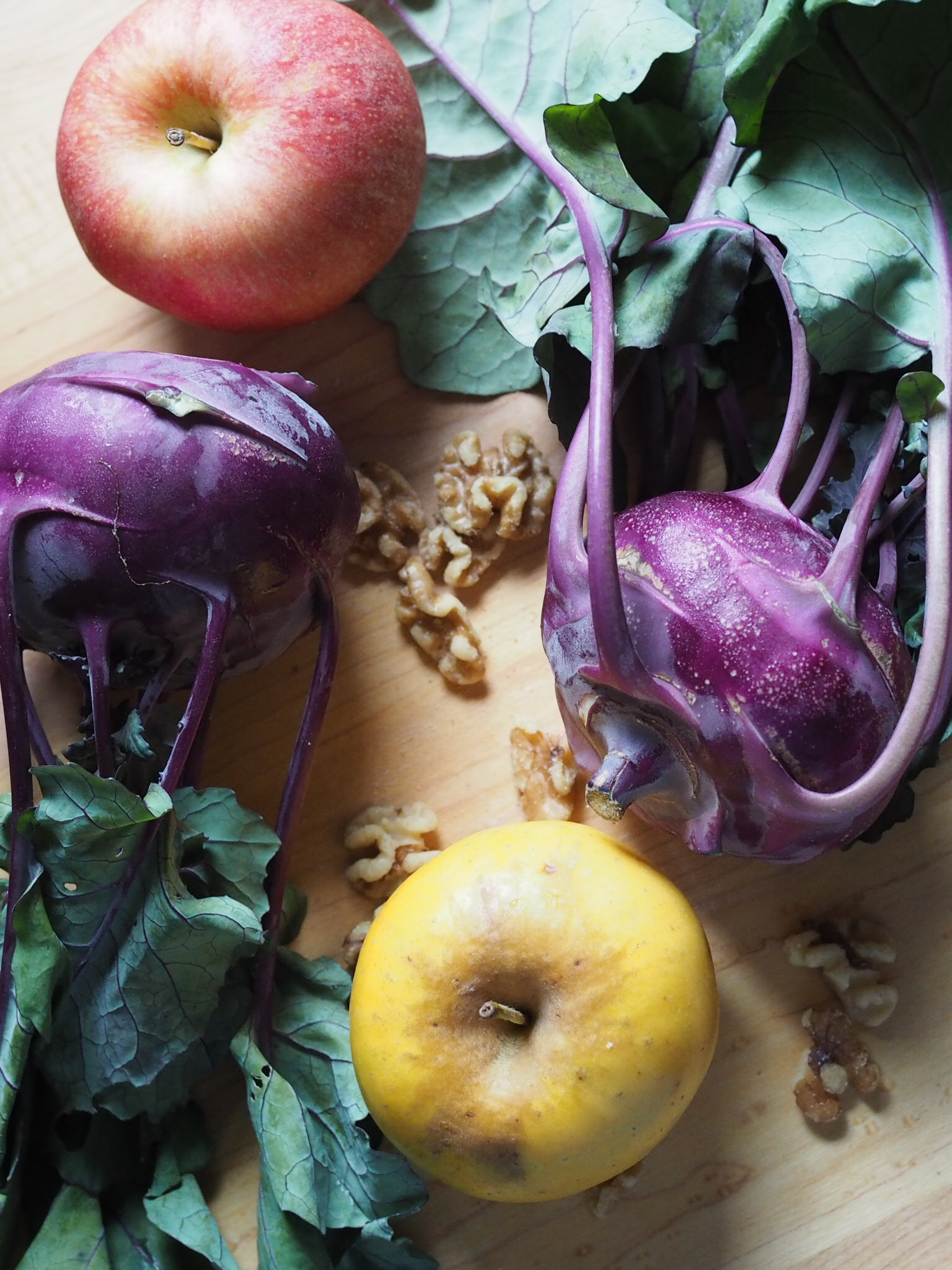
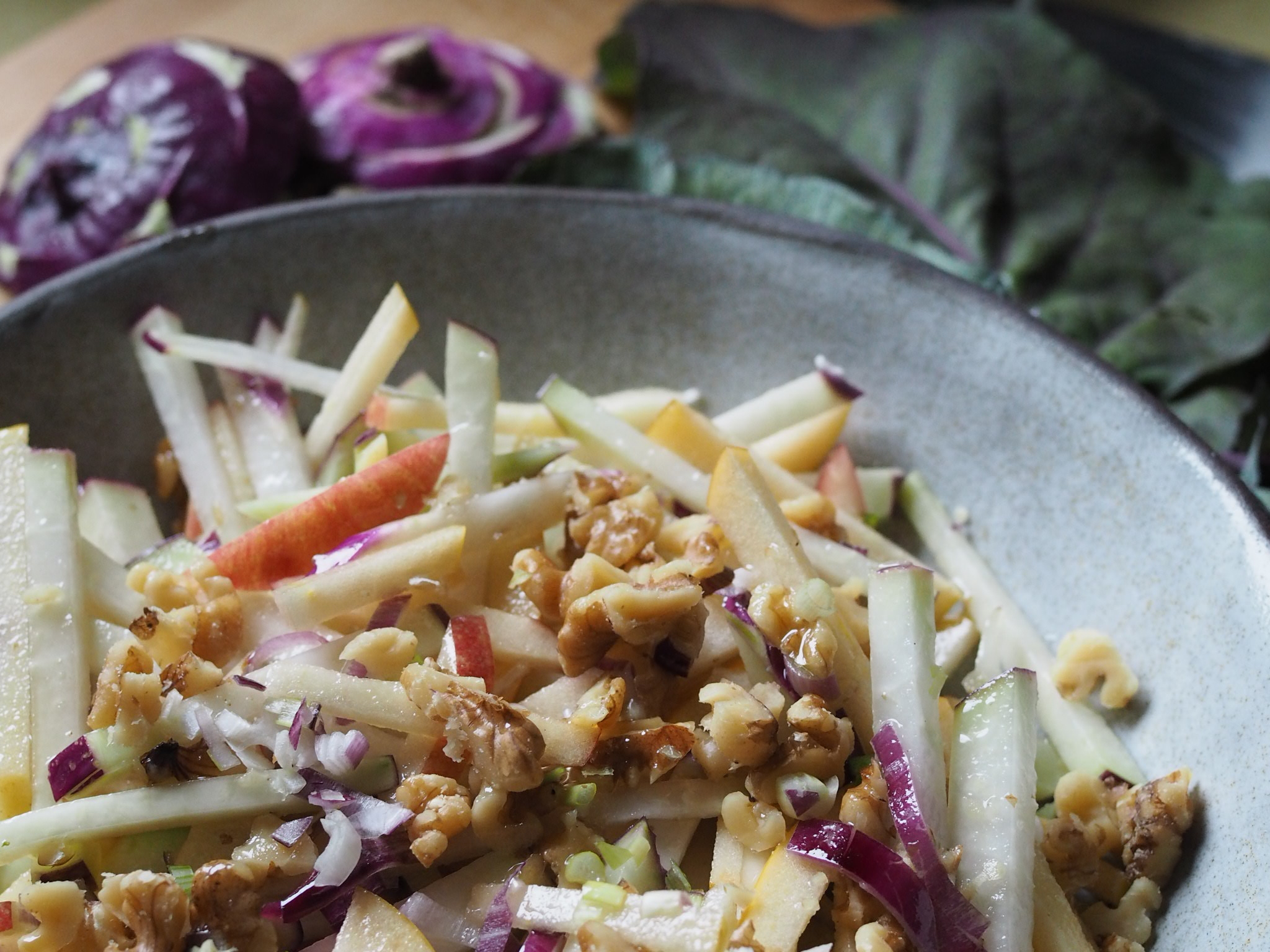
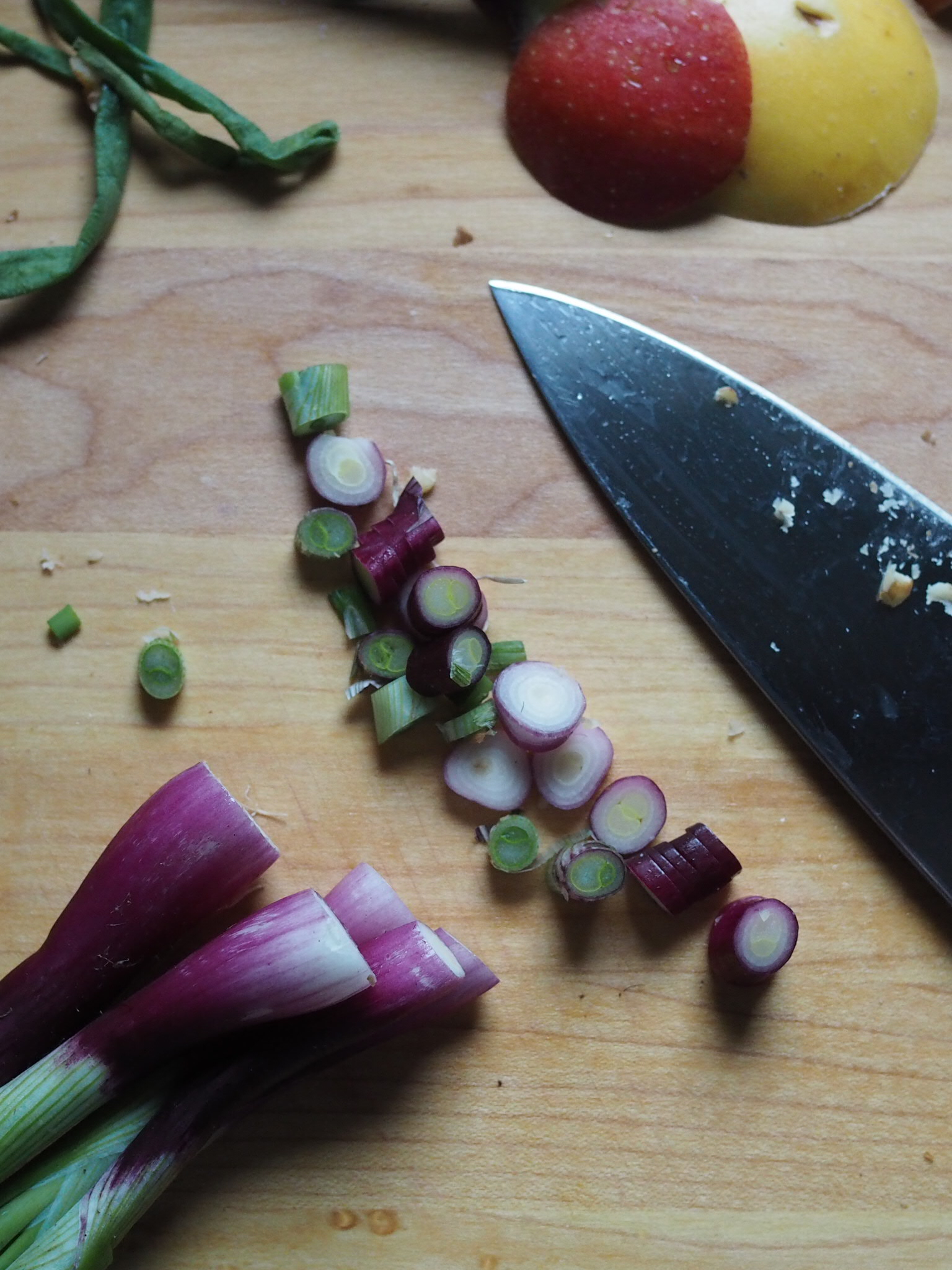
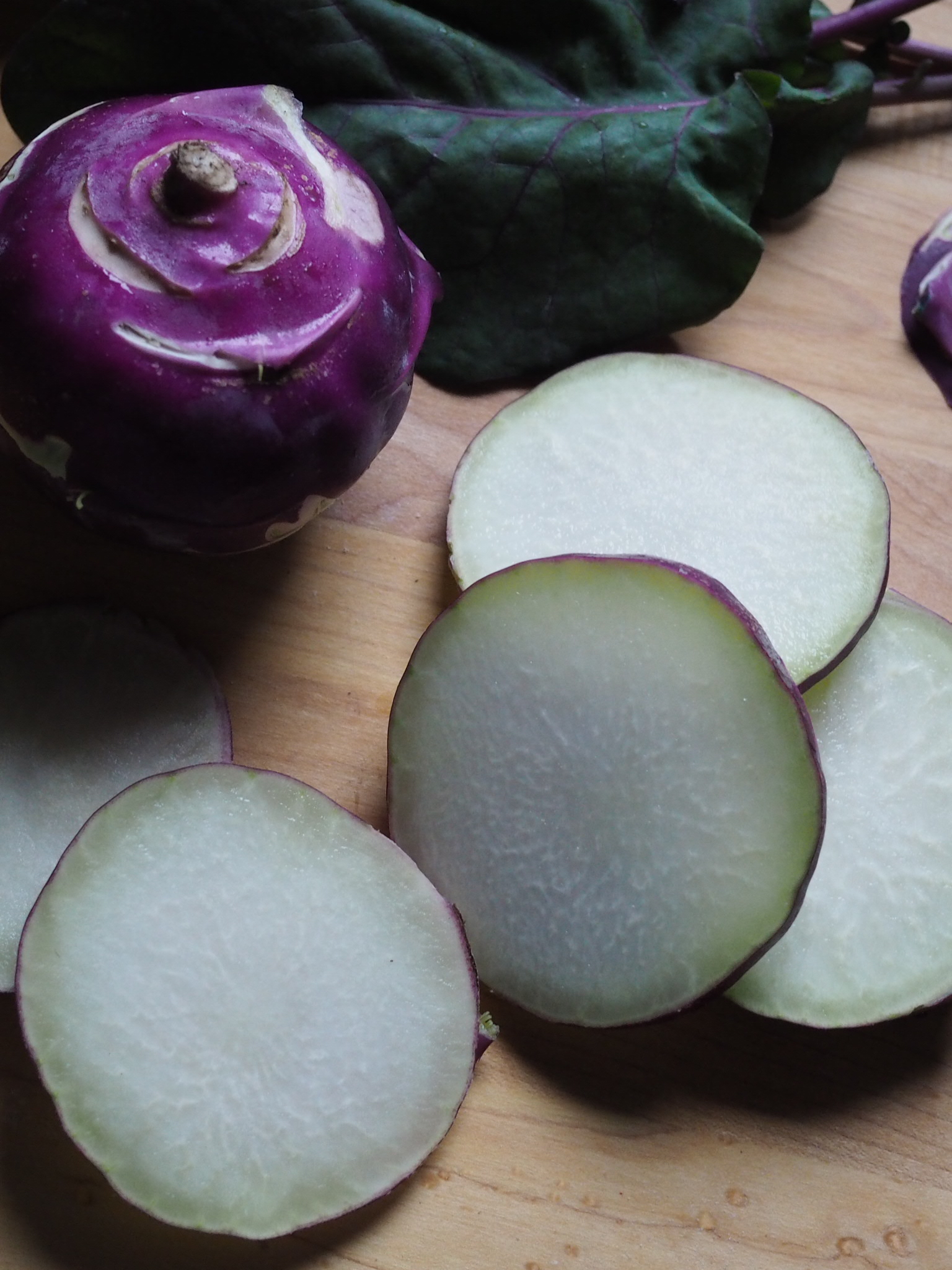
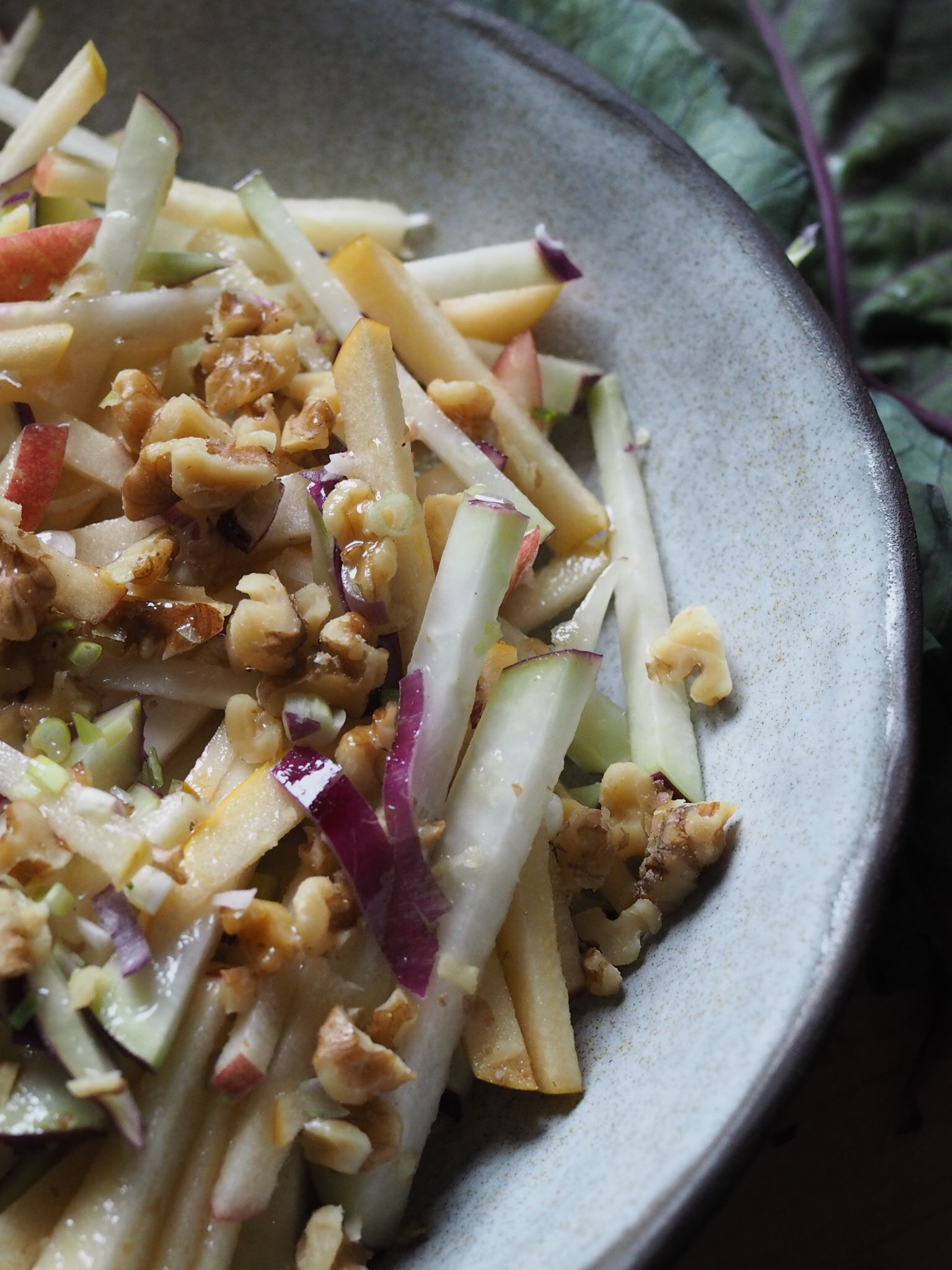
This year I signed up for a farmshare (or Community Supported Agriculture) from Crystal Spring Farm, which means I get a box of farm fresh goodies once a week, which I cannot recommend highly enough. It's definitely upped my family's veggie intake and introduced us to some new flavors, as I've vowed to try everything that comes in the box, whether I recognize it or not.
My first new-to-me veggie was kohlrabi - an unusual-looking member of the broccoli family. There are a number of ways to try it ( I'll be trying roasted as fries with a future batch), but so far my family is loving this Kohlrabi, Apple and Walnut slaw, which is a sweet and crisp companion to your summer meals and is a great pairing with pork of all kinds.
Kohlrabi, Apple, and Walnut Slaw
serves 8 (can be easily halved)
Ingredients
2 Kohrabi, greens removed
2 firm apples (here I used a Gala and a Golden Delicious)
1 cup walnuts, chopped
1 bunch (6-8) red spring onions/scallions (you can use green scallion, the red just adds an additional punch of color)
1/2 cup sunflower or walnut oil
1/4 cup apple cider vinegar
2 Tablespoons maple syrup
Directions
Chop unpeeled kohlrabi and apples into matchsticks. With the apple, it helps to cut thin slices from the outside of the apple to the center, using the core as a handle. Finely mince scallions.
Set aside a small amount of walnuts and scallions. Combine remaining kohlrabi, apples, walnuts, scallions and fluids in a large mixing bowl and toss to coat. Put in fridge and let rest to deepen flavors. Sprinkle reserved nut and scallions on top before serving cold.
Adapted from Vicky at Things I Made Today on Food 52.
To print, see button at bottom of post.
Kohrabi, Apple, and Walnut Slaw
Serves 8 Ingredients: 2 kohlrabi 2 firm apples 1 cup walnuts 1/2 cup sunflower or walnut oil 1/4 cup apple cider vinegar 2 tablespoons maple syrup 1 bunch spring onions or scallionsKnitting Colorwork: Tips & Tricks
I love knitting colorwork. But, for the uninitiated, colorwork can be quite intimidating. How you choose the right colors? Why does it make my gauge all weird and pucker-y?? What do I do with all these ends?!!
Today, I'll be sharing some tips and tricks for success with colorwork. This isn't a be-all, end-all guide, but it should help get you starting on or improving your colorwork skills.
Read moreHomemade Soft Pretzel Recipe
In the past few years, I've had the good fortune to becoming friends with a handful of lovely German women (yay for the Internet!), and, as a result, have become increasingly interested German culture, politics and cuisine. I'm sure my family could do less with me talking about proportional representation in the Bundestag, but they put up with it if I make them Schnitzel, Spätzle, or the all-around favorite, Pretzels (or Brezeln).
Like most yeasted bread products, these need to be kneaded and have time to rise, but if you have the time (and aren't near a German bakery where you can just get them easy-peasy) they're totally worth it. Also, the boiling + bake method that gives pretzels their unique texture it quick and fun to do!
[NB: These are a little underdone in the photos. Proper pretzels should be a more uniform golden brown like the top one in the trio above, but I was in a hurry to get these on the table for supper. Don't try to blog your dinner before you eat it folks. ]
Homemade Soft Pretzel Recipe
Dough
Makes 6 Pretzels (can be doubled)
- 1 cup warm (not hot) water
- 1 Tablespoon dark brown sugar
- 1 packet quick-rise yeast (1/4 oz)
- 3 1/4 cups bread flour
- 1 Tablespoon kosher or sea salt, plus more for sprinkling
- 1/2 stick (1/4 cup) cold butter, diced into small pieces.
Cooking Water
- 8 cups water
- 1/2 cup baking soda
- 1/4 cup dark brown sugar
- 1/2 cup lager or pale ale
Directions
In a large mixing bowl, combine warm water, yeast and sugar. Let still until mixture becomes foamy. Using a dough whisk or sturdy wooden spoon, add the flour, salt and butter, stirring until the mixture becomes shaggy. It's okay if not all the butter is worked in yet, the kneading will take care of that.
Roll up your sleeves and turn out your dough onto a floured work surface. Vigorously knead your dough until it becomes smooth and elastic. Return the dough to a clean bowl and cover with a damp towel, letting it rise until doubled in size. (You can do this overnight in the fridge, or on a warm spot on your counter).
Preheat your oven to 450 degrees Fahrenheit. Combine all cooking water ingredients in a large pot and set to boil.
Roll out the dough into a long rectangle and cut it into 6 long strips, about an 1" wide each.
Roll/stretch each strip until it forms a coil about 34" long (I measure them by the length between my fingertips and shoulder joint). Form each coil into a "U", twist the tops, and the press the ends down onto the bottom of the U.
Line a large baking sheet with parchment and reduce cooking water to a simmer. Boil pretzels one at a time by lowering it gently into the water with a slotted spoon. Remove the spoon and let pretzel cook for about 30 seconds. The pretzel will float to the top as it cooks. remove pretzel with spoon and place on prepared baking sheet. [NB: The cooking water will form a foam as you cook the pretzels, just scoop it off as needed.]
Sprinkle the pretzels with your salt of choice.
Bake the pretzels for about 15 minutes, rotating the baking sheet halfway through. Let them get nice and golden brown (see note in post).
Remove from oven and transfer to wire rack to cool. Serve warm with mustard and enjoy with the rest of that beer!
Adapted from Olivia's Cuisine
To print, see button at bottom of post.
Homemade Soft Pretzels
Serves 6 Ingredients: 1 cup warm (not hot) water 1 Tablespoon dark brown sugar 1 packet quick-rise yeast (1/4 oz) 3 1/4 cups bread flour 1 Tablespoon kosher or sea salt, plus more for sprinkling 1/2 stick (1/4 cup) cold butter, diced into small pieces. 8 cups water 1/2 cup baking soda 1/4 cup dark brown sugar 1/2 cup lager or pale aleFO Roundup - Spring 2018
One of the most fun parts of being a designer is seeing how others interpret your designs. Spring is in the air, which means there's a lot more linen and short sleeves popping up on the internet - here are a few of my favorite finished objects (FOs) of late. Click on any image to visit the maker's Instagram or Ravelry page!
Want to share your knits with me? Tag me @mscleaver on Instagram, or if it's on Ravelry, I'll see it. :)
Want to make one of your own? Grab the patterns below!
Embroidery 201: Coloring Your Embroidery
I often describe doing embroidery as "Coloring with Thread" and more specifically, to think about working satin stitch as coloring with a very sharp colored pencil. Turning that one it's head, today I'm going to talk about how to color your embroidery with colored pencils, crayons, and watercolors.
All the coloring implements used in this tutorial are your basic Crayola crayons, colored pencils, and watercolors, which I borrowed from my five year old (like you do). The techniques will work with whatever materials you have on have, but I chose to use the Crayola products because they're inexpensive and widely available - all of which is to say, you don't need fancy art supplies to make these techniques work.
Skin tones in colored pencil makes the suits "pop"
Skin tone in satin stitch makes a bolder statement
If embroidery is like coloring, why would you want to color your embroidery?
A reasonable question.
One of the great things about embroidery is that is provides a fabulous texture and dimension to your work, but that texture isn't always want you want. For me, this usually happens in regards to skin and backgrounds. I don't want a heavily textured background, because I want my primary image to "pop." I don't always want to stitch in the skin tone, because it can make the skin look "lumpy".
Other times, it may just be that your hoop needs a bit more color, and you don't fill like satin stitching inches of sky or dirt. Either way, it's a good technique to have in your toolbox.
A few things to keep in mind when using any of the three techniques below:
- Test your color on a corner of your fabric - it may not look the same as on paper.
- Just because the crayon/pencil/marker/etc says it's washable, doesn't mean that it's totally washable. Once you start coloring, you're probably committed, so keep that in mind and test first.
- It's easier to color your fabric before you do the stitching. I'm terrible at following this tip, but it is true. And if worse comes to worse, you can always cover up a color you don't like with stitching, rather than having to pull out stitching because your watercolors bled.
Crayon
- Crayons give a nice soft color and are easy to blend and build to darker colors.
- The higher the amount of pigment the better - avoid waxy crayons.
- Crayons will pick up on any texture under them including the texture of the fabric. You can use this to your advantage - if, for example, you want a wood grain texture, place your fabric on top of a piece of plywood. If you don't want additional texture, make sure to work on a smooth surface.
Colored Pencils
- This is my personal favorite, easy to do, hard to screw up.
- The fine point of a pencil makes it easier to do detail work, especially if you've already stitched your piece.
- It won't pick up texture as much as crayon, but tends to create stroke lines.
- Build in layers to get darker tones.
Watercolor
The prettiest results are often the trickiest techniques. With watercolor, you're essentially spot-dying the fabric and it can be tricky to control. I literally went through four versions to get this technique right for this tutorial - so try on scrap fabric and don't get frustrated if you don't get it the first time.
Some tips for success:
- I'd only recommend watercolor for larger areas.
- Put a dry paper towel under the fabric - it will soak up the extra fluid and help control the bleed.
- Try to get your brush as dry as possible when working near the edges of the design.
- Barely touch the brush to the fabric. A tiny touch is all that's needed for the fabric to wick the fluid/color off the brush.
- Work from the outside in and start at least a quarter inch out from the line you're trying to color up to. This will give you a chance to figure out how much the fabric bleeds.
- Embrace the imperfections. Watercolor is going to give a mottled effect - if you want a solid color, go with crayon or pencils.
- Let the work dry completely before adding additional layers of color or beginning stitching.
Experiment and Have Fun!
Using traditional art supplies can be a fun way to add color to your embroidery pieces. And don't limit yourself to these three - try markers! Glitter glue! Have a mixed media field day!!
To get started on the next step of the process, check out the tutorials below or click here for a downloadable PDF of basic stitches
Persephone Pants
I finally sewed something again!
Seriously, it feels like ages. I think this is the first project I've sewn this year, which considering that it's April, is quite a dry spell for me.
But these pants were worth the wait.
The pattern is the newly released Persephone Pants from Anna Allen Clothing. It's a high-waisted, wide legged, button-fly(!) pant inspired by traditional Navy uniform trousers.
I've long loved her designs and volunteered to test these for her. I was a bit hesitant whether a high-waist would be comfortable, but they turned out great. I sewed a straight size 20 with a "full belly" adjustment (as found in Fit for Real People), which was an easy change. I also skipped the belt loops (wouldn't use them) and front pockets (don't need the extra bulk), so these came together very quickly one the pattern adjustments were in place. I love how the instructions for Anna's patterns include steps for getting a high-quality finish on the inside too.
The cropped length and wide leg make them stand out in my closet and although we've only had a few warm days thus far, these pants have been perfect for spring.
Here's to getting back into the sewing saddle!
Reading Lace Charts: A Tutorial
When a non-knitting colleague or friend sees me knitting with an open pattern in front of me, they’ll often take a quick glance and ask if I’m a) taking a multiple choice test or b) cracking a code.
I always get a good laugh because, in some ways, they’re absolutely right! If I’m knitting up a multi-sized pattern, and I’ve circled or highlighted the stitch counts for my size, that’s pretty much multiple choice and if you’re never come across the language and abbreviations for knitting before, it might as well be a foreign language.
The same goes for knitting charts - they are little boxes of code - but once you’ve cracked it (and have a few tricks up your sleeve) they’re a great tool!
Today, I’m going to walk you through reading a lace chart for soup to nuts. And all you need to do is ask yourself three simple questions.
THE KEY
A lace chart comes with two pieces: the Chart and the Key. The Chart shows you the stitch pattern and the Key shows you what all those little symbols mean.
Before you do anything, look at the Key. Some knitting symbols are fairly standard (a blank box is a knit stitch, a dot or a dash is a purl, a circle is a yarn over), but how different increases and decreases are displayed can vary by designer and publisher.
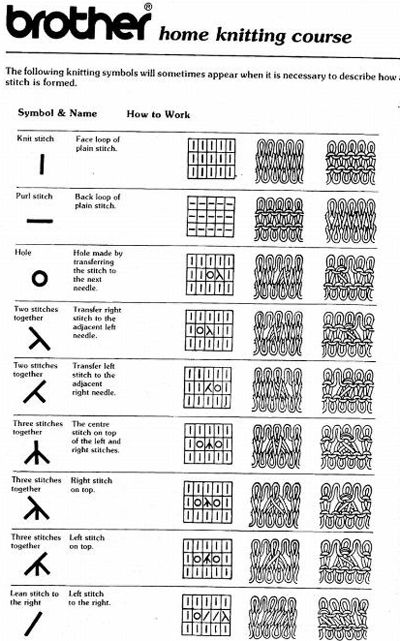

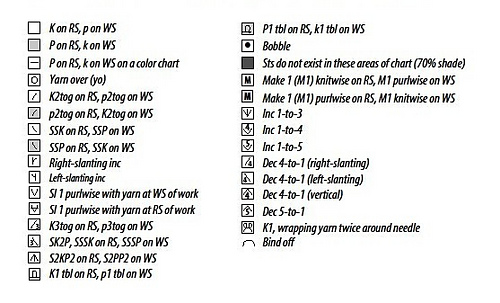
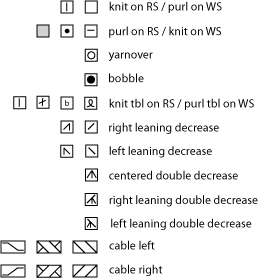
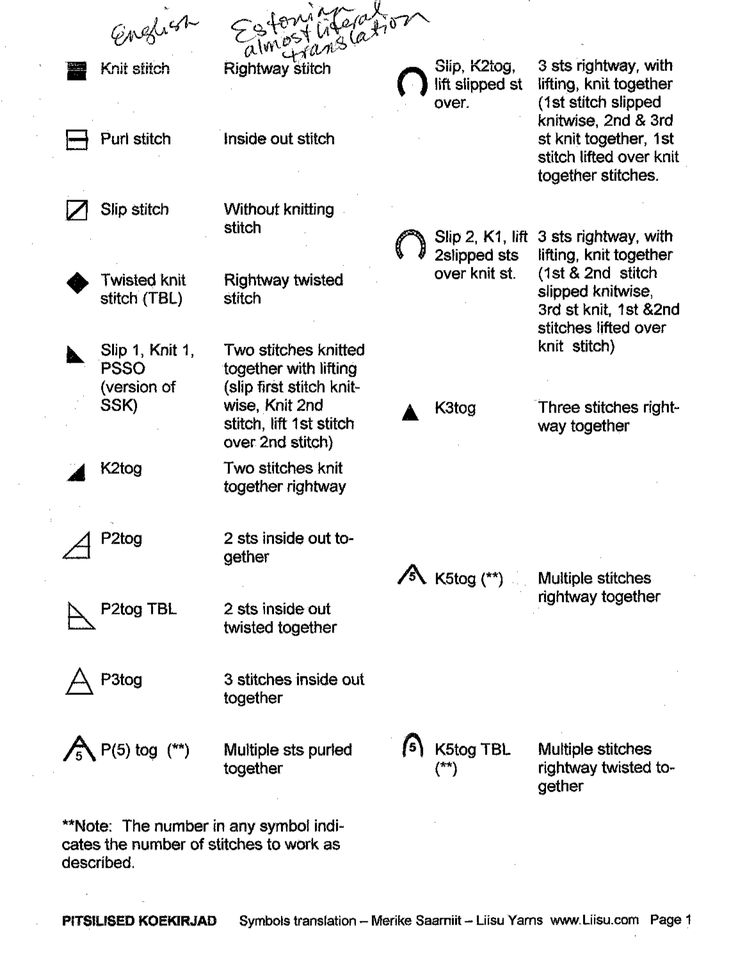
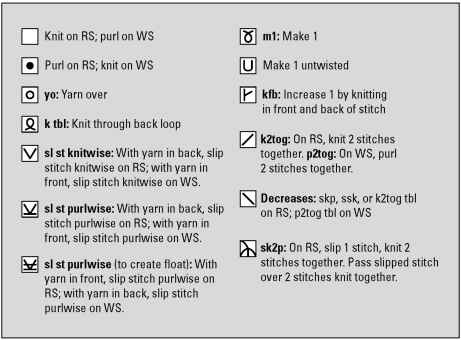
Generally, increases and decreases are going to lean in the direction that the knitting will eventually lean, so something more or less looking like this:
\
can be any kind of left leaning decrease. Slip, slip, knit is a common one; but it could also be slip 1, knit 1, pass the slipped st over; or k2tog through the back loop.
The designer will have made a choice in designing - so check the key and ask yourself our first question.
Question #1: What do these symbols mean for this pattern?
There’s a reason the designer chose that particular decrease - it could be that it plays to the design best, or it could simply be their personal knitting preference. If the design calls for a SSK but you prefer k2tog tbl - feel free to switch it up! It might result in a slightly different look, but it’s your knitting.
(Is the Key missing? It totally happens sometimes in the process of getting something to print. Your best bet is to email the designer/publisher or you can see if there is a written out version of the chart and extrapolate from there).
THE CHART
Now that you know what all the little symbols mean, you can start to read the chart. But before you get into the nitty-gritty (knitty-gritty?) of individual stitches, it’s best to look at some big-picture items first.
ORDER
First, unlike text, you read a lace chart in the direction you knit. That is, right to left, bottom to top (see red arrows above). The stitches and rows should be numbered in this direction to guide you.
ROWS/ROUNDS
A lot of lace patterns are designed so you don’t have deal with any yarn overs or increases/decreases on the wrong side of your knitting - you focus on all the “tricky stuff” on the front, then mindlessly purl your way across back.
Even if a lace pattern in worked in the round, you often alternate between a lace round and a non-lace round. (Fun fact: patterns with yarn overs on every round are called openwork).
But those “spacer rows/rounds” aren’t just nice from a mental break perspective, they make a big different in the way the lace looks - skip it and you’ll have a really squat-looking pattern. So they’re important to remember.
Knitting designers and publishers like to save space (especially magazines), so they often truncate charts to the most pertinent information. Which leads us to…
Question #2: Is this chart showing every row/round or every other row/round?
To tell, look at the numbers along the side the chart.
If it’s a chart for knitting flat, right side row numbers (usually odd numbers) are generally listed to the right hand side of the chart. Wrong side row numbers (usually even numbers) are generally listed to the left hand side of the chart.
The chart above is for openwork, there’s yarn overs on both right and wrong sides. All rows are shown, because you need to know what’s happening on every row.
But a lot of times, there’s nothing interesting happening on a wrong side row. So to save space, the chart will omit it.
On this chart, every wrong side row is purled, so the chart only shows the information on the right side. The numbers on the right read 1, 3, 5, etc, but instead of having a “spacer row” between them (as in the openwork above), they’re right next to each other.
The same rules go for lace worked in the round. If all you’re doing on an even-numbered round is knitting, the chart probably won’t take up space to show you that.
This chart is an example where every row/round is knitted, but there’s only lacework (i.e. yarn overs) done on the right side. So why bother with showing all the rows/rounds?
Take a closer look at those wrong-side rows (in blue). The pattern combines purl bumps with the lace, so to carry that pattern, the bumps need to be worked on every row/round.
REPEATS
The next big-picture thing to look at is repeats. If a shawl is 100+ stitches wide, showing all those stitches in impractical, and, honestly, not that helpful if the pattern repeats every 6 stitches. Repeats help break down the pattern into manageable chunks. So next you want to know:
Question #3: How does this pattern repeat?
Since they’re generally both horizontal and vertical, repeats are typically shown with a box that outlines the repeat area.
If we take another look at the chart above (which is designed for the top of the foot of a sock) - the full lace section (only 35 sts) is represented, but even with that there are repeats. Each repeat is 10 stitches wide and 9 rows high). But here’s where it can get tricky - you have a 10 stitch repeat over 35 stitches - there should be three full repeats, plus 5 extra stitches, right?
Not always.
If you look at the chart above, sts 24-33, they are almost exactly the same as sts 14-23 and 4-13. It acts like an additional repeat. But there's one important exception with stitch 33 on row 5. Instead of a double decrease, like the other repeats, it’s a single decrease. The other “half” of the double decrease is at stitch 3 on row 5. SO if you're marking out a repeat (on your page or in your mind) make sure it's a true repeat.
Now, assuming that the item this chart is for something taller than 10 rows/rounds high. When you get to row/round 11, just start back at row/round 1.
Here’s another chart (for a shawl), which shows only a portion of the lace section. Section A1 is worked across about 439 stitches, B1 across 411 stitches, and C1 across 387 stitches. But the charts for each section look about the same width.
This is possible because each section uses a 6 stitch wide/12 row high repeat. The stitches on the left and right of the repeat box are just to get to to that repeating section.
For example, to knit chart A1, row 1: you’d knit the first 11 sts to the right of the repeat box as charted (SSK, k4, yo, k2tog, k4) and then you’d repeat the section within the box as many times as you needed until you were 6 stitches from the end of the row (or marker, whatever the design dictates) and then you’d finish up with the last 6 stitches of the chart (yo, k2tog, k3, k2tog)
And that's basically how most lace charts work!
TIPS AND TRICKS
KEEPING YOUR PLACE
With a large lace (or colorwork) chart - the trickiest part is keeping your place. There are a lot of tools available to help.
You can purchase some pre-made items like magnetic boards or copy holders.
OR
You could also be a little more DIY and use highlighter tape, washi tape, post its notes (my go-to) or a ruler. Basically anything that’s straight, long enough and easy to move (but won’t slip when you’re in the middle of a row!)
If you are using something opaque (like a post-it), arrange it so the bottom of the marker is ABOVE the row you’re working on, so you can still see the rows you’ve already worked. That way you can continually check to see if everything is lining up appropriately.
LIFELINES
If you want some extra security when working lace, you can always put in a “lifeline.” To insert a lifeline, thread up a darning needle with some high-contrast colored yarn and slip it through the live stitches on your knitting needle, as if to put them on a holder.
But instead of removing the stitches from your knitting needle, remove the darning needle and leave the “line” in and continue knitting normally. If you make a mistake you can’t easily fix, rip out back to the lifeline which will nicely hold your stitches for your while you put them back on the knitting needle. Only insert a lifeline into a row you’re confident is correct, and if you’re going to use them, I’d recommend inserting it after every repeat or more often if the rows are really long.
RECAP
To read a lace chart go right to left and top to bottom. Before knitting, ask yourself the following three questions:
Question #1: What do these symbols mean for this pattern?
Question #2: Is this chart showing every row/round or every other row/round?
Question #3: How does this pattern repeat?
With those answered, you should be ready to tackle some charted lace!
GET KNITTING!
For some beginner-friendly lace patterns, check out the following designs:
The West Branch Cowl was designed to show off a special skein of handspun or hand-dyed yarn and is a great beginner lace project - the lace is only on the right side and has a short repeat.
The Ferrous Shawl uses simple motifs that are easy to memorize and was designed for the complete beginner to lace shawl knitting in the traditional triangle shape.
The Maian shawl consists of two 4-stitch repeats and all the increases are done on the edge with a backward loop cast on, meaning you won’t get your lace yarn overs confused with your increase yarnovers.
The lace border on the Cresting Waves Shawl is only 21 stitches wide and is knit separately from the body of the shawl, so if you make a mistake, you only have to tear back a few stitches (instead of the whole body of the shawl) to fix it.
Want a little challenge?
Alaria uses the same construction as Ferrous, but adds some more complex motifs.
Rambling Eden uses the same construction as Cresting Waves, but with a really wide border and openwork lace.
Bracteole takes lace into the round and adds some purls into the mix. (And it’s the main chart we’ve been looking at throughout this tutorial!!)
Introducing WILDFLOWER
I'm pleased to announce the launch of my Spring 2018 collection: WILDFLOWER
Consisting of three new embroidery designs and three new knit designs, WILDFLOWER is a floral inspired walk through the season: a cozy cardigan for those early days of spring when the wind still bites, socks and shawls for warmer days, and embroidery designs that go from seed to vase.
Projects range from beginner-friendly to the more complex. Over the next few weeks, I'll also be sharing some tutorials to provide extra support for these designs, from coloring your embroidery, to colorwork tips, and to reading a lace chart.
Each pattern in WILDFLOWER can be purchased individually, or as part of a complete kit featuring high-quality materials. As a special bonus for this collection, I've partnered with Nabi Wool Studio in Switzerland and Red Sock Blue Sock Yarn Co. in Canada to bring you hand-dyed yarn kits for the Rambling Eden Shawl and Bracteole Socks. Interested in a Cormous Cardigan Kit? Pre-orders are open now through the end of the month.
The knitting patterns can be purchased as an e-book for $16.00 USD or individually ($6-$8 USD). Likewise, the embroidery designs can be purchased as a set for 20% off the individual price.
Flip through the lookbook below, or check out the shop!
Small and Simple (-ly Delicious) Chocolate Cake
Little Miss Cleaver just turned five in March. (I know, I have no idea how that happened so fast either).
To celebrate such a momentous occasion, we had a big friend birthday party about a week before the actual day. But, in LMC's words, the "real party" was the one with family on her actual birthday. So even though we were solidly cupcaked-out by that point, a cake was still in order. Enter this deeply chocolaty, but petite cake - just enough for the three of us to handle and cute to boot.
There are hundreds of chocolate cake recipes out there, so I'll just say that this one was still really moist after three days at room temperature and I use my blog as my own personal recipe box and I wanted to put this out there so I can remember it for the next birthday.
This recipe will fill any of the following:
- One 9" cake pan
- Two 6" cake pans
- About 10-12 cupcakes
- Or a really thick 6" cake, plus a small ramekin. (which is what I did).
Small and Simple (-ly Delicious) Chocolate Cake
Cake
- 1 cup all-purpose flour
- 1/2 cup plus 3 Tbl unsweetened cocoa powder
- 1/2 tsp baking powder
- 1/2 tsp baking soda
- 1/4 tsp salt
- 1/2 cup salted butter, softened
- 1/2 cup plus 2 Tbl sugar
- 1 tsp vanilla
- 1 large egg
- 1/2 cup plain Greek yogurt
- 3 Tbl cold coffee
- 3 Tbl milk
Frosting
- 4 Tbl salted butter, softened
- 1 1/3 cups powdered sugar
- 1/4 cup unsweetened cocoa powder
- up to 3 tbl milk
- 1/2 tsp vanilla extract
Optional (lots of sprinkles to decorate)
Directions
Preheat oven to 350 Degrees F. Grease pan(s) and coat with cocoa powder or use liner if making cupcakes.
In a medium bowl, sift together flour, cocoa powder, baking powder, baking soda, salt, In a small bowl or large measuring cup, combine coffee, milk, and yogurt.
In a large bowl, cream together the butter and sugar until light and fluffy. Add egg and vanilla to sugar and mix until well combined.
Starting and ending with the flour mix, alternate adding flour mix and yogurt mix to sugar/egg mix, making sure batter is thoroughly combined before each addition.
Scrape batter into prepared pan(s), keeping the distribution as even as possible if using multiple pans.
Bake cake until a tester inserted in the center of the cake comes out clean. Start your timer at 20 minutes and check every 3-5 minutes thereafter, cooking times will vary based on which pan you choose.
Cool cake in pan for 10 minutes then invert unton rack to cool completely before frosting.
To make frosting: Beat butter until light and fluffy. Add cocoa and powdered sugar to butter. Add milk a tablespoon at a time, until desired consistency is achieve and then beat in vanilla.
To decorate as shown: Place a large amount pf sprinkles into a pie pan or rimmed baking dish. Frost sides, but not top of cake. Being very careful, tilt the frosted cake into the pie pan and roll until sides are coated with sprinkles. Gently place cake unto serving dish or stand and press sprinkles into the side as needed. Frost top of cake. To make number, print out number of choice in a very large font (I think I used Impact here) in the center of a 5" circle. Cut out number with sharp scissors or an craft knife. Place template gently on top of cake, trying not to stick it to the frosting. Pour sprinkles into your template, mushing them into the frosting gently with you fingers and carefully remove template.
Goes excellently with a glass of milk.
Adapted from Ghirardelli's Grand Fudge Cake (aka the one on the back of the cocoa powder bag).
To print, see button at bottom of post.
Small and Simple (-ly Delicious) Chocolate Cake
Serves 9 Ingredients: 1 cup all-purpose flour 1/2 cup plus 3 Tbl unsweetened cocoa powder 1/2 tsp baking powder 1/2 tsp baking soda 1/4 tsp salt 1/2 cup salted butter, softened 1/2 cup plus 2 Tbl sugar 1 tsp vanilla 1 large egg 1/2 cup plain Greek yogurt 3 Tbl cold coffee 3 Tbl milk Frosting 4 Tbl salted butter, softened 1 1/3 cups powdered sugar 1/4 cup unsweetened cocoa powder up to 3 tbl milk 1/2 tsp vanilla extract 1 1/2 teaspoons salt,Introducing Gully
Linen month continues at Quince & Co. and this week features the release of the Kestrel 2018 collection. Kestrel is a fun yarn to knit with it, it has the beautiful drape of linen, but it's ribbon-style construction means that it knits up fast, without ever being bulky.
I knew that combination would be the perfect pairing with Gully, my newest Quince design.
No lengthy backstory behind this one - it was inspired by a colleague's summer tank and translated to knitting. I loved the idea of a crossover/apron-style back and spent some time perfecting the angle of the drape on the back.
Gully would look wonderful layered over a lacy camisole or summer dress and for best fit, I'd recommend pinning together the straps before seaming and lengthening or shortening the straps (a super easy process) to get the coverage you want.
Gully requires minimal seaming, as the tank is worked flat, from the bottom up, in one piece to the underarms, with front and backs are worked separately, then joined at the straps using a three-needle bind off.
The pattern is available for $6 USD for the individual pattern or $18 USD for the whole Kestrel 2018 Collection from the following online shops:
MsCleaver.com || Quince & Co. || Ravelry
Share what you've made!
#quincereed to share and/or tag me @mscleaver !

